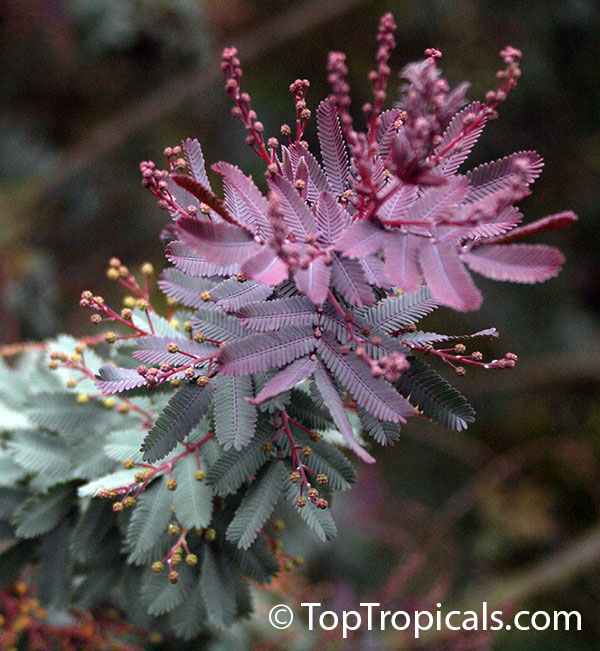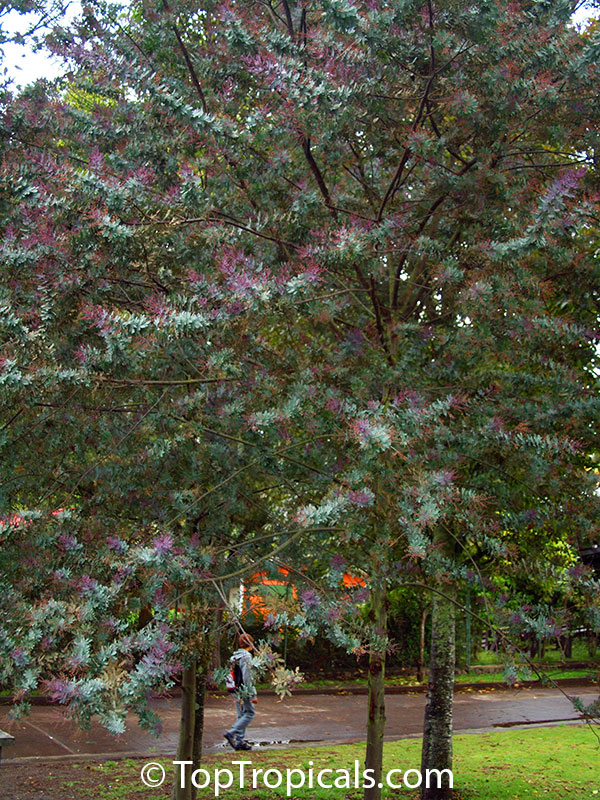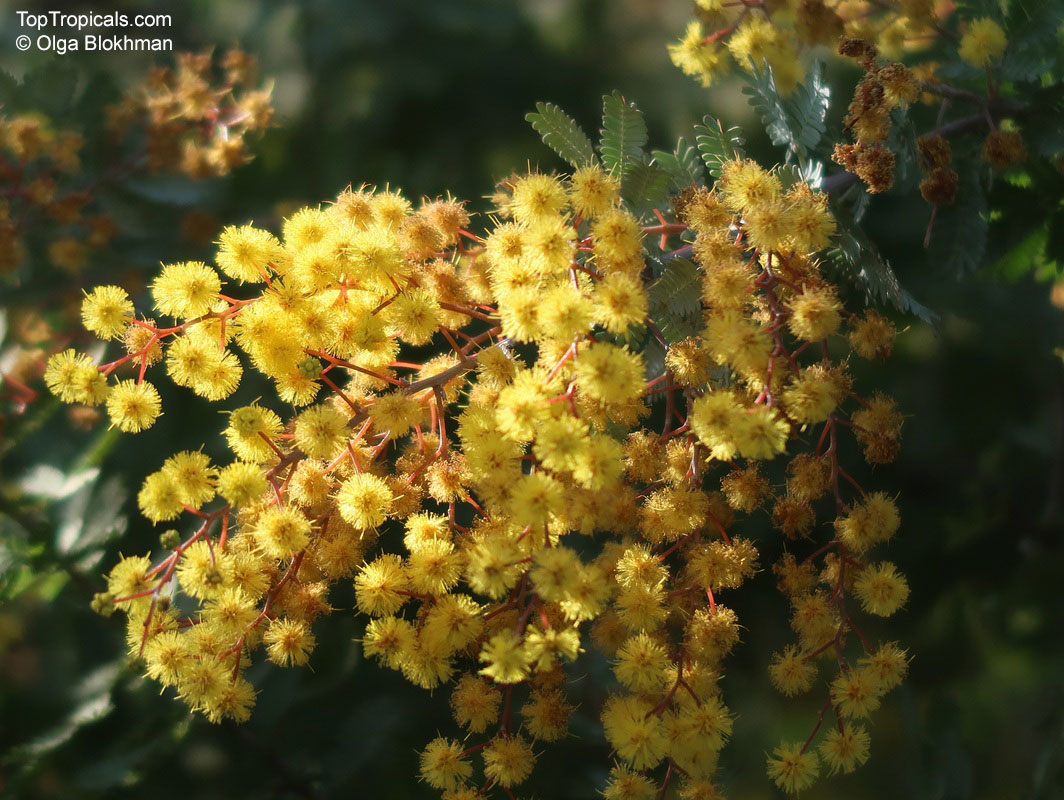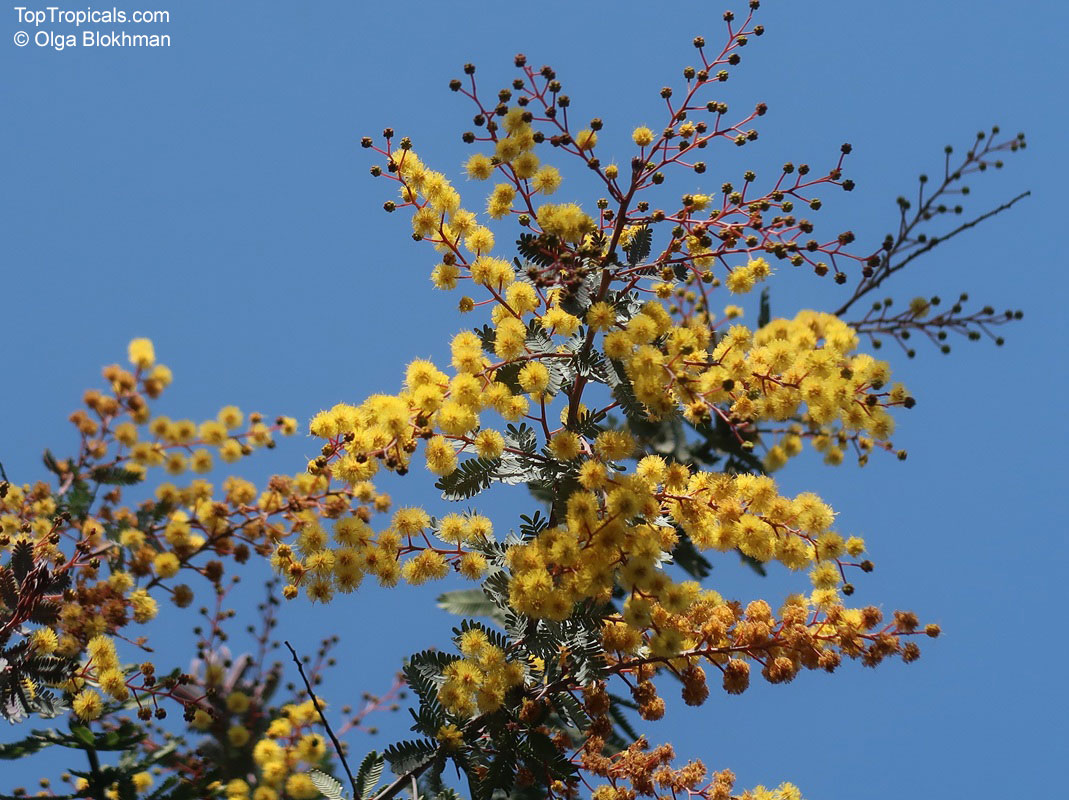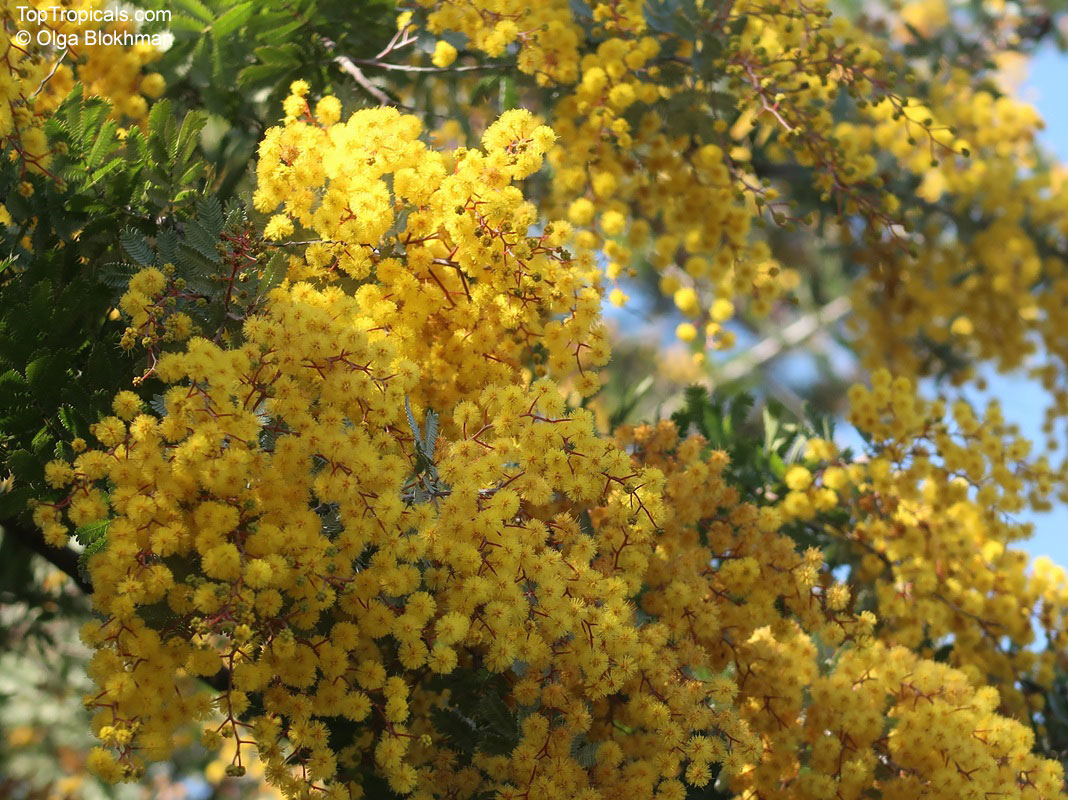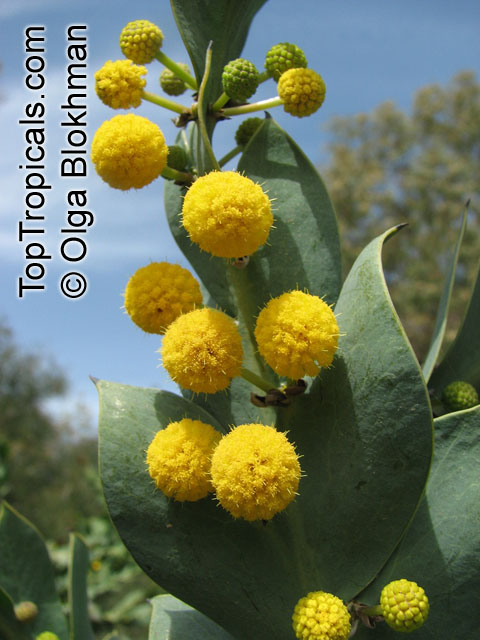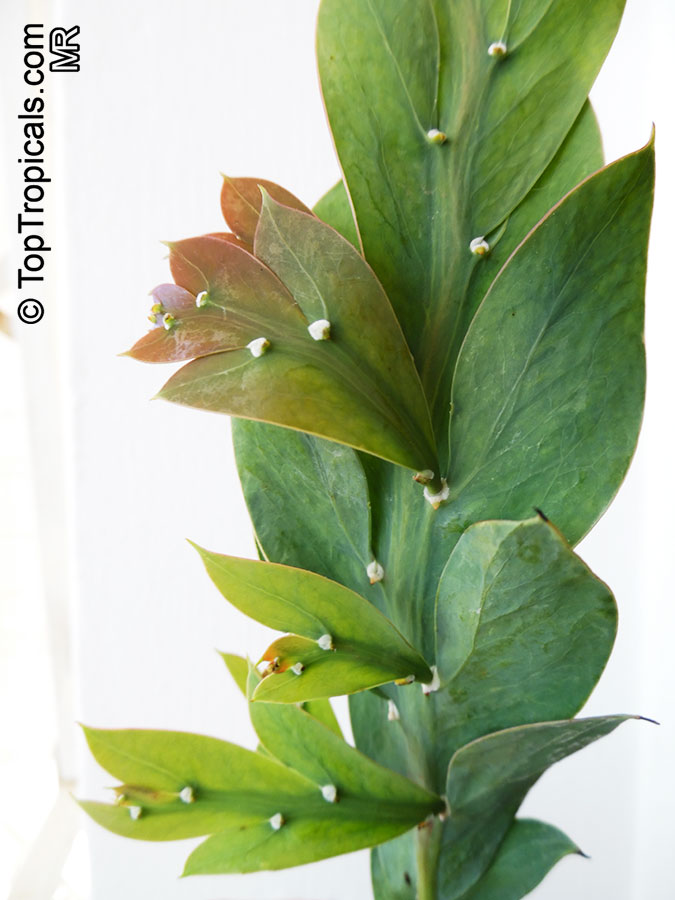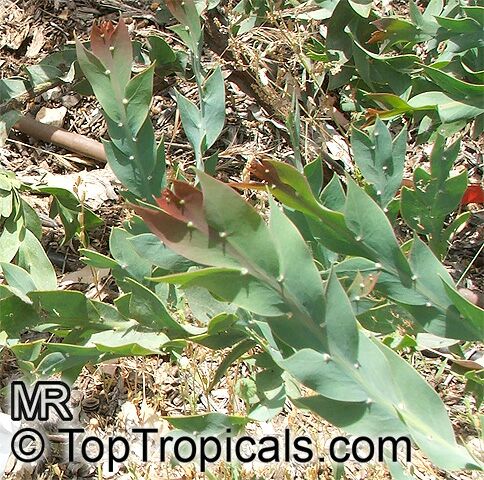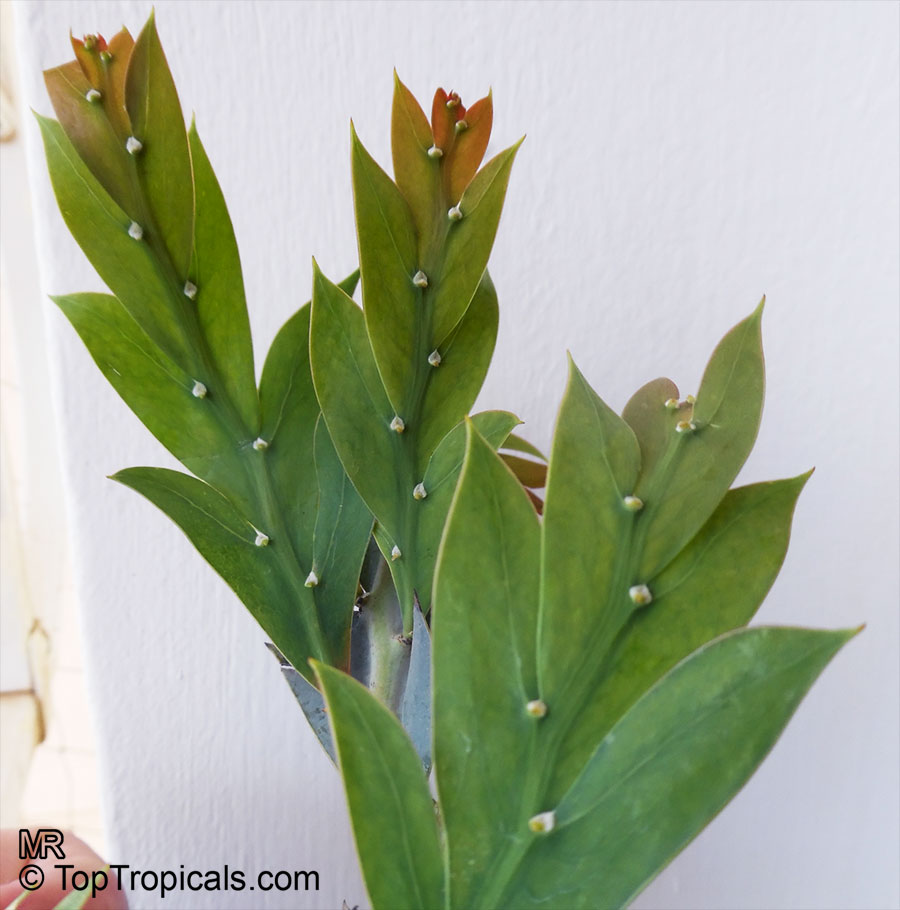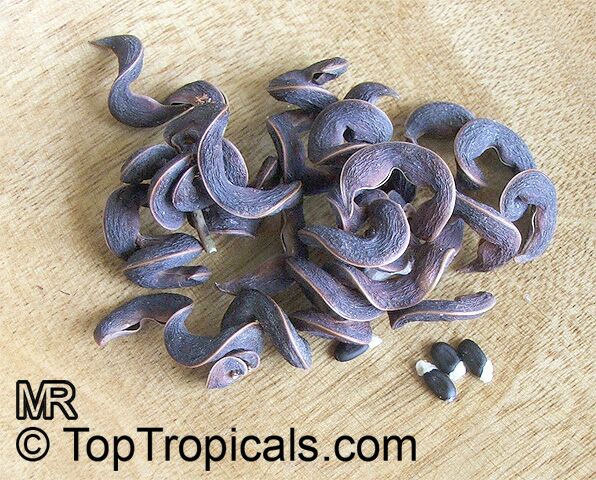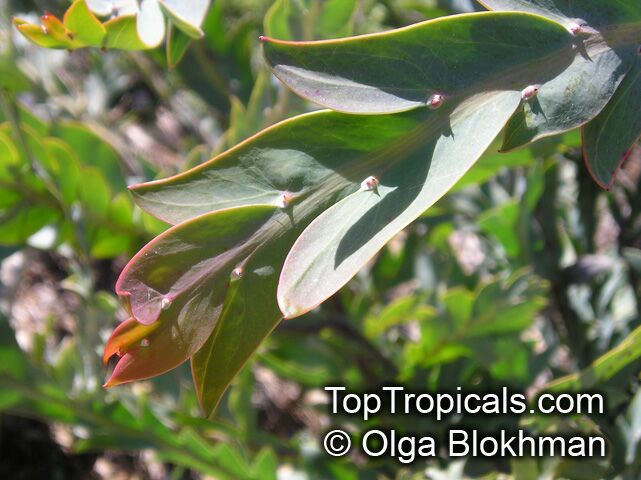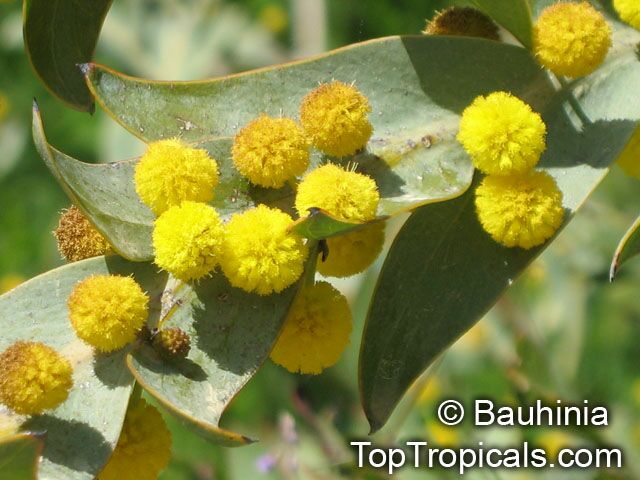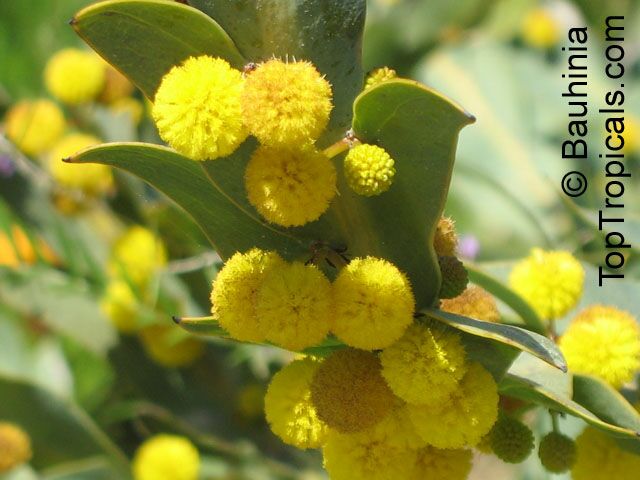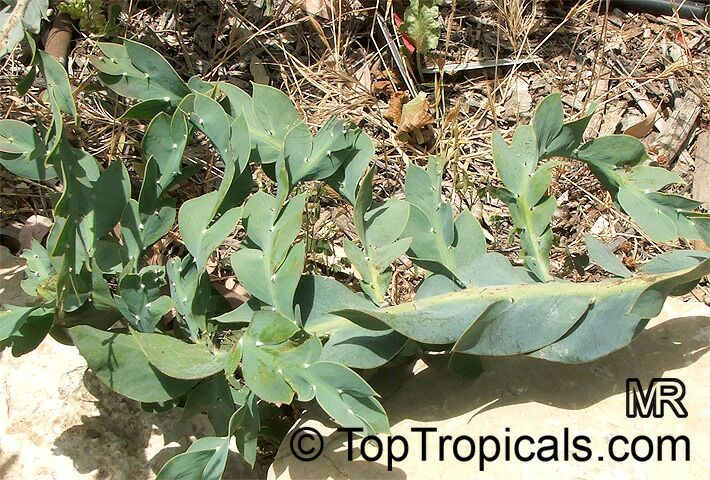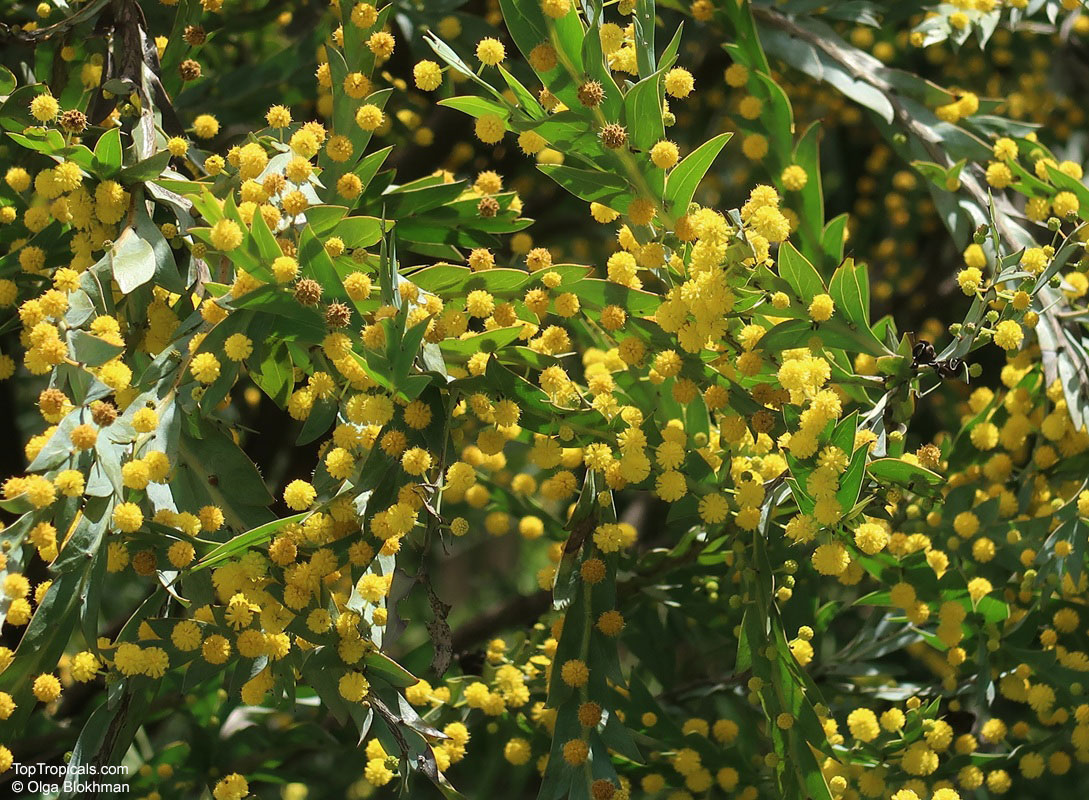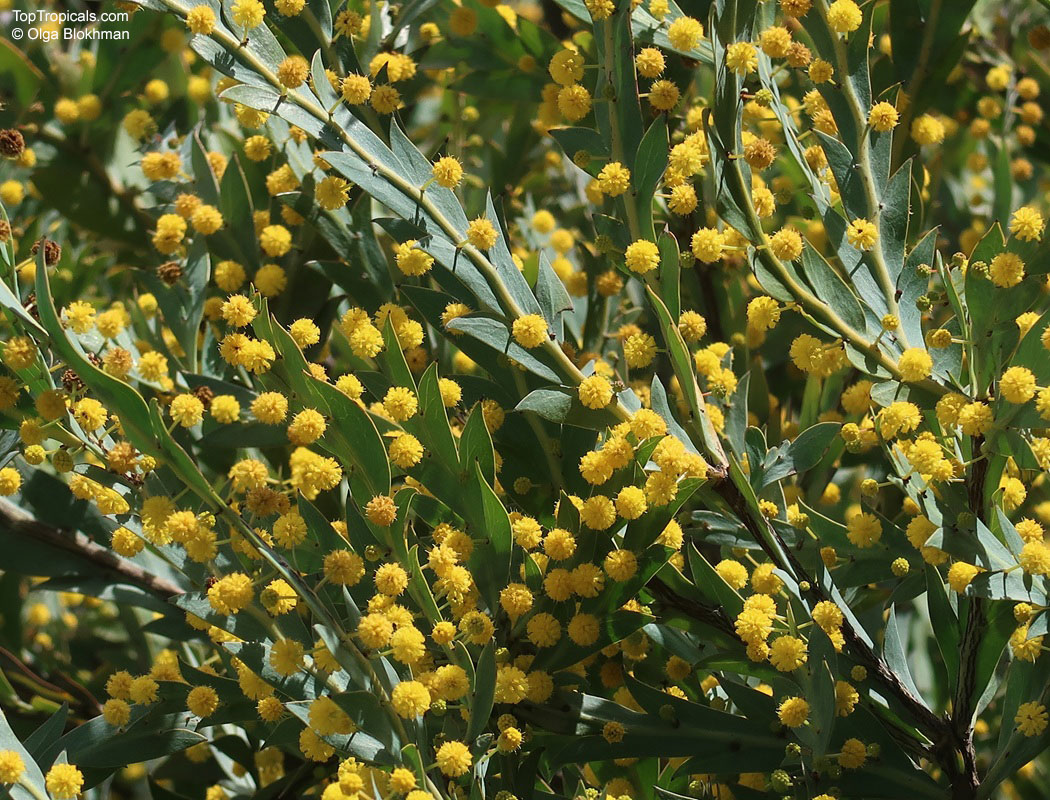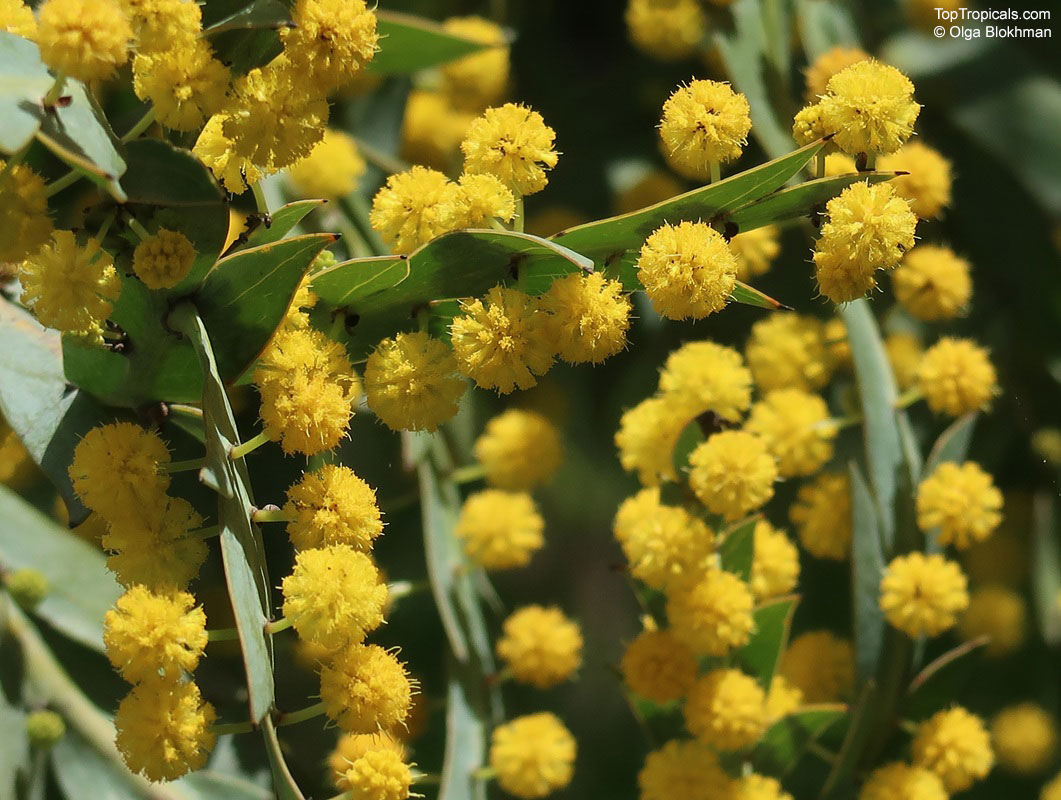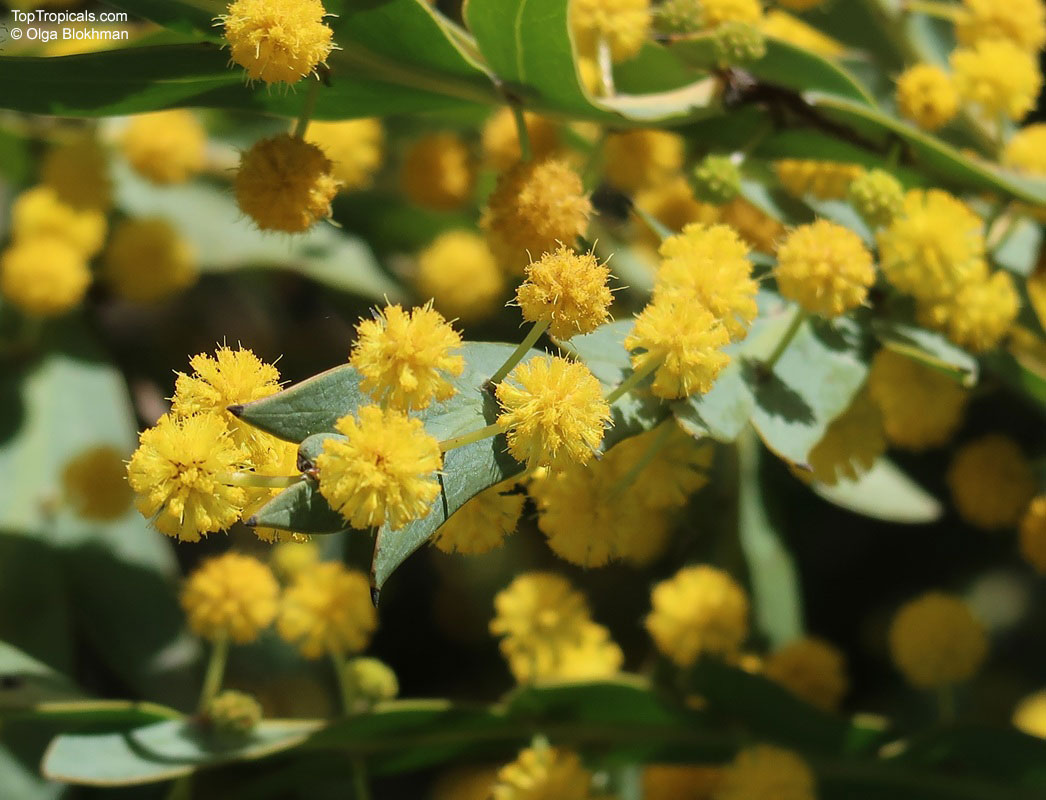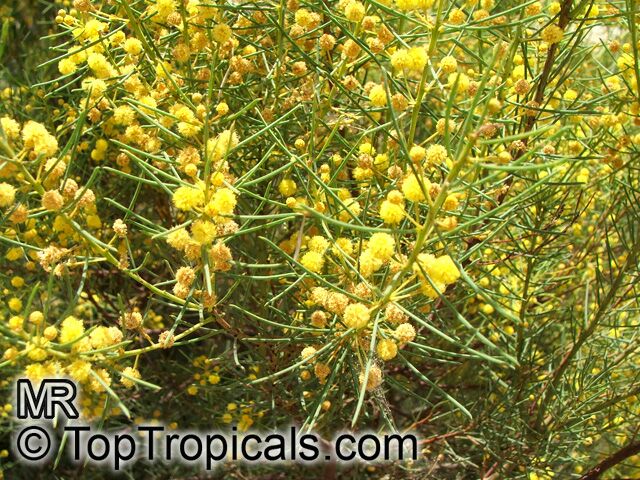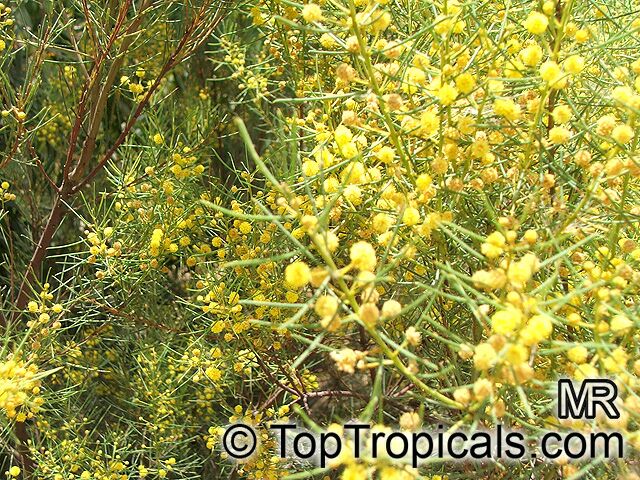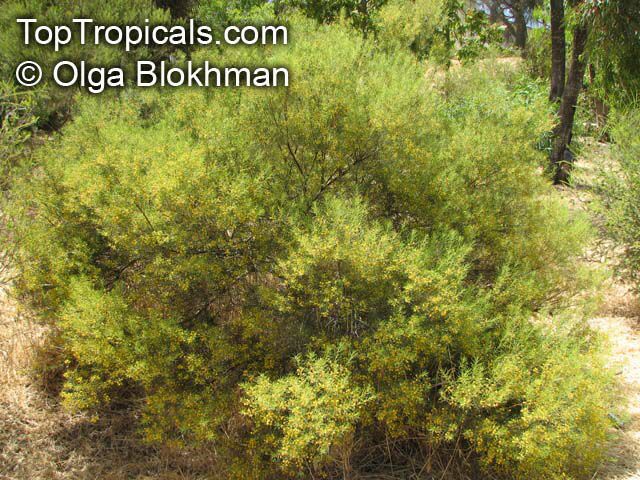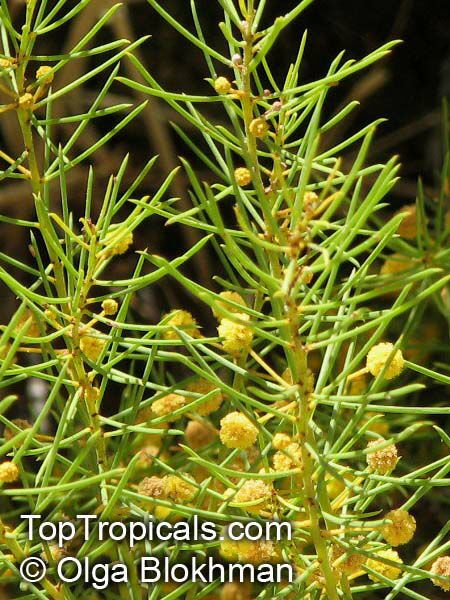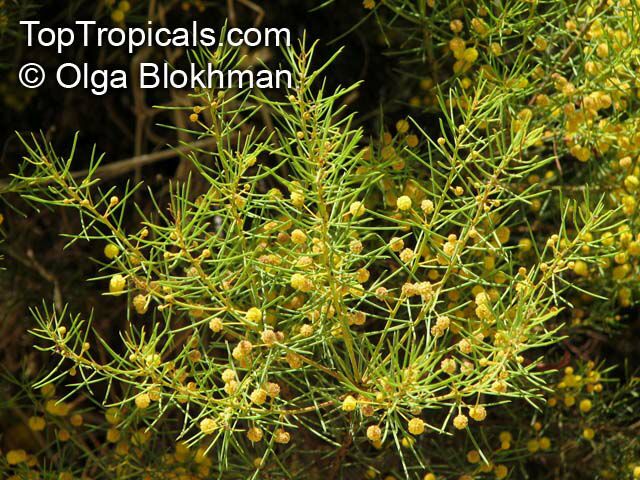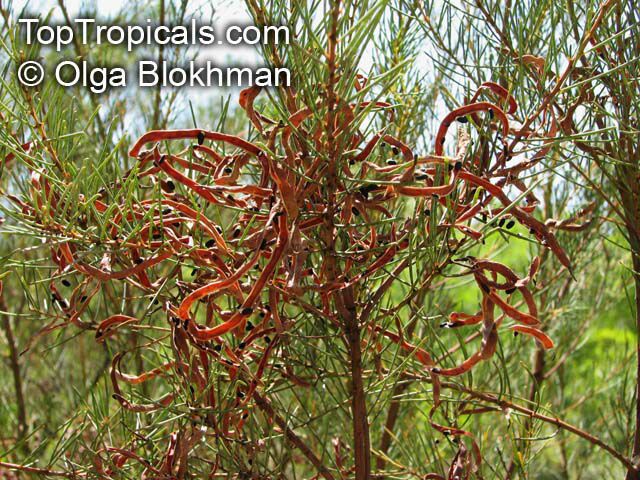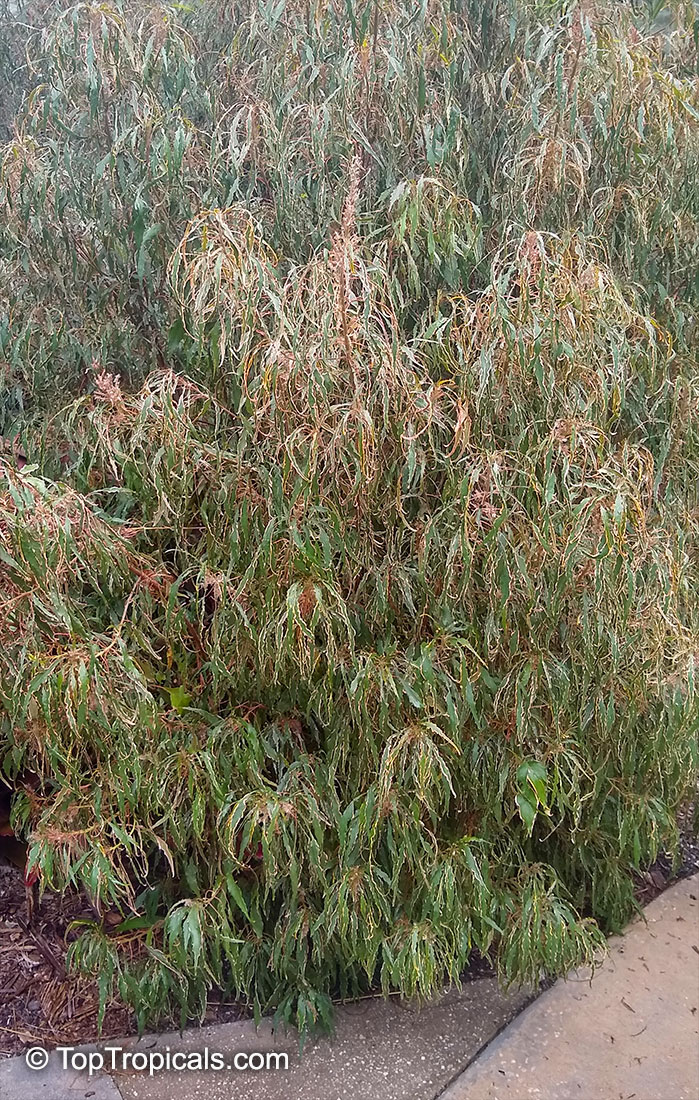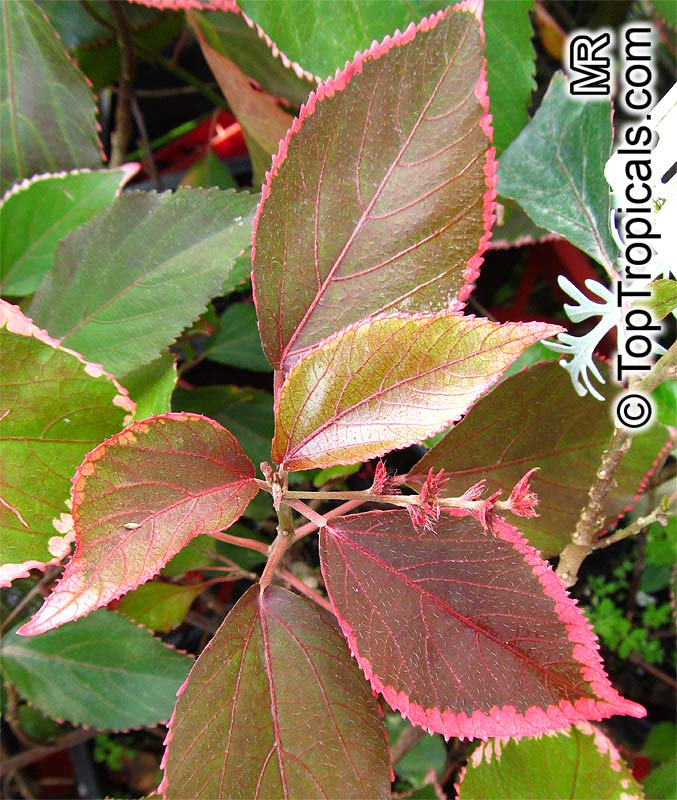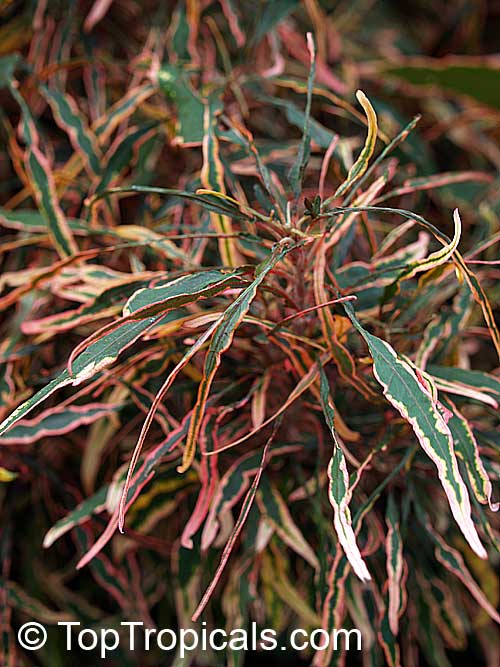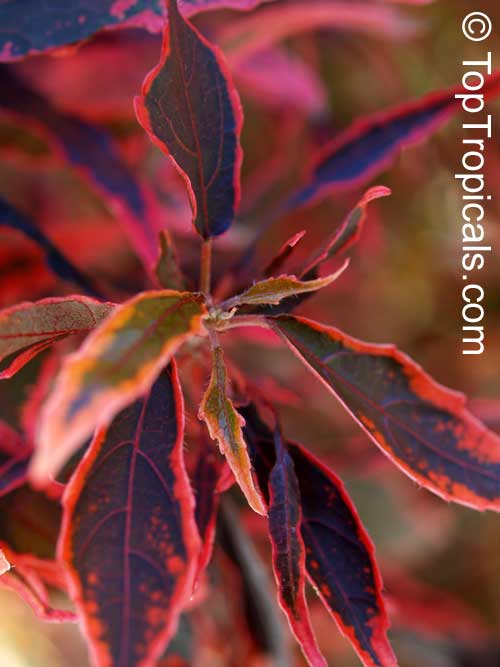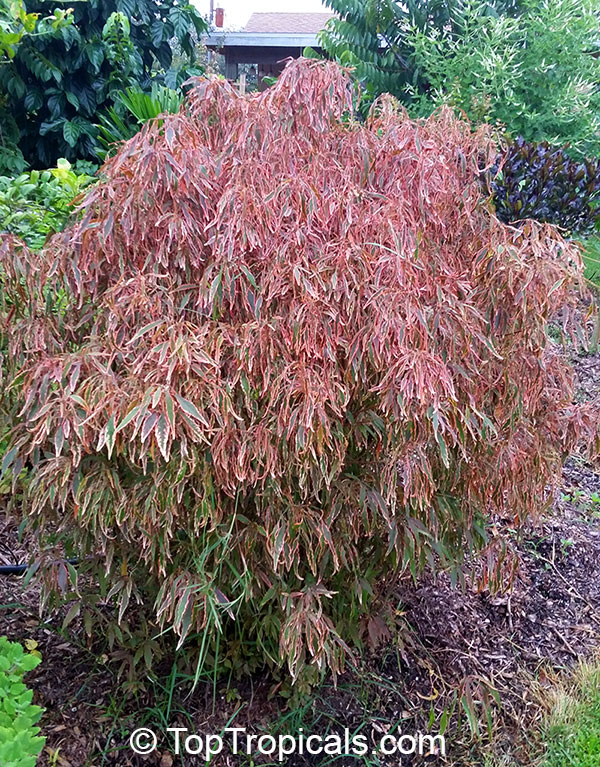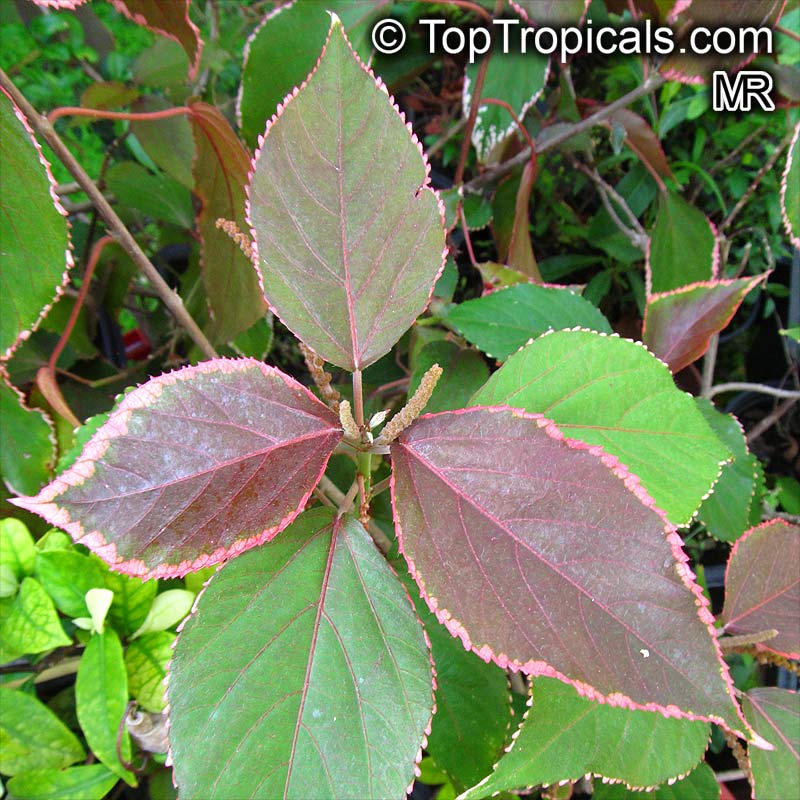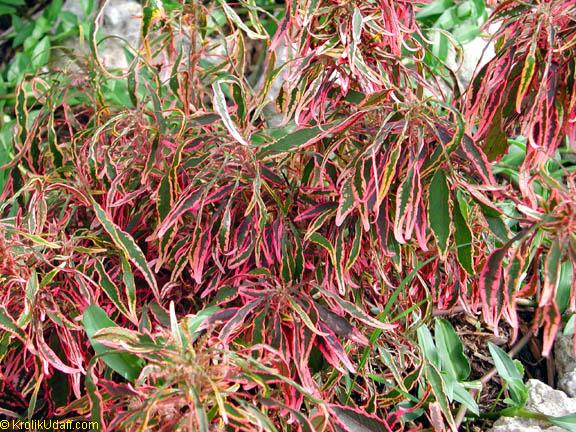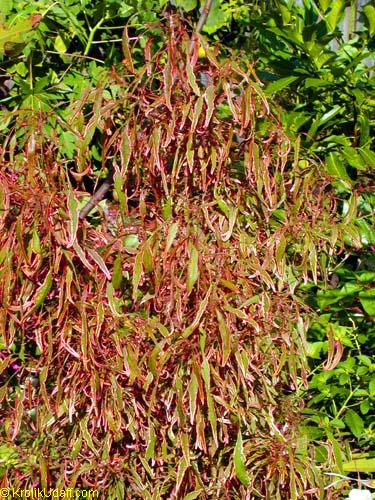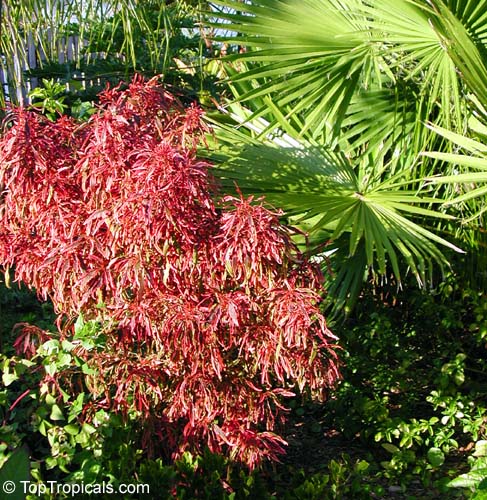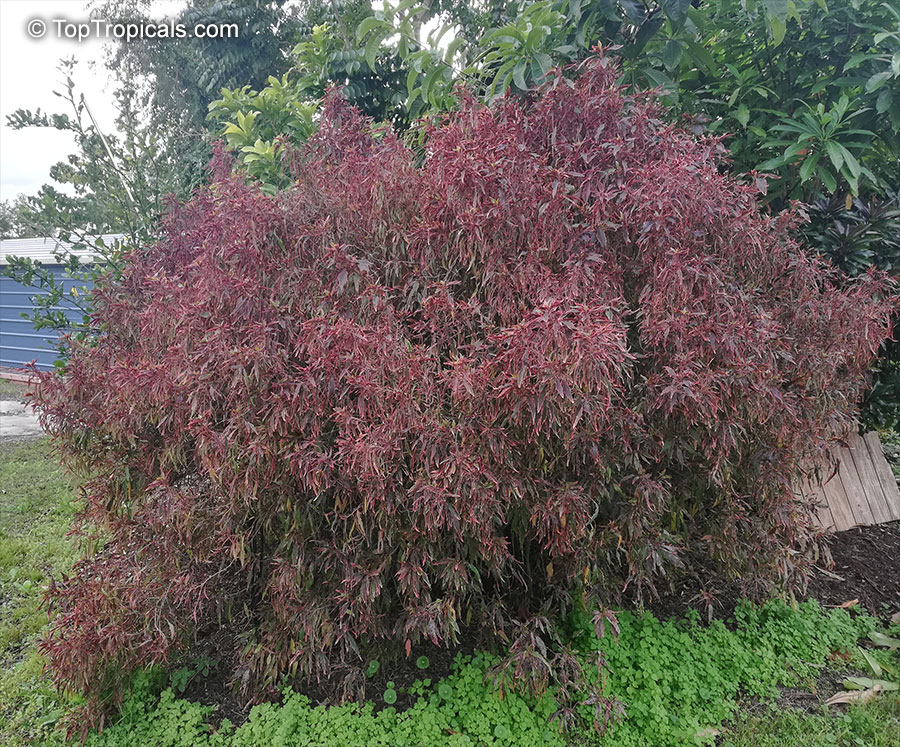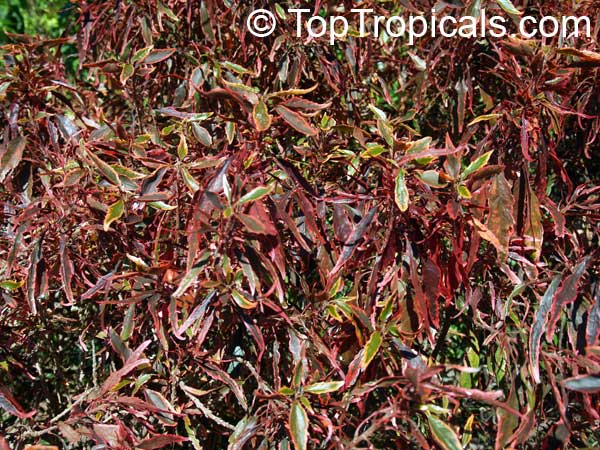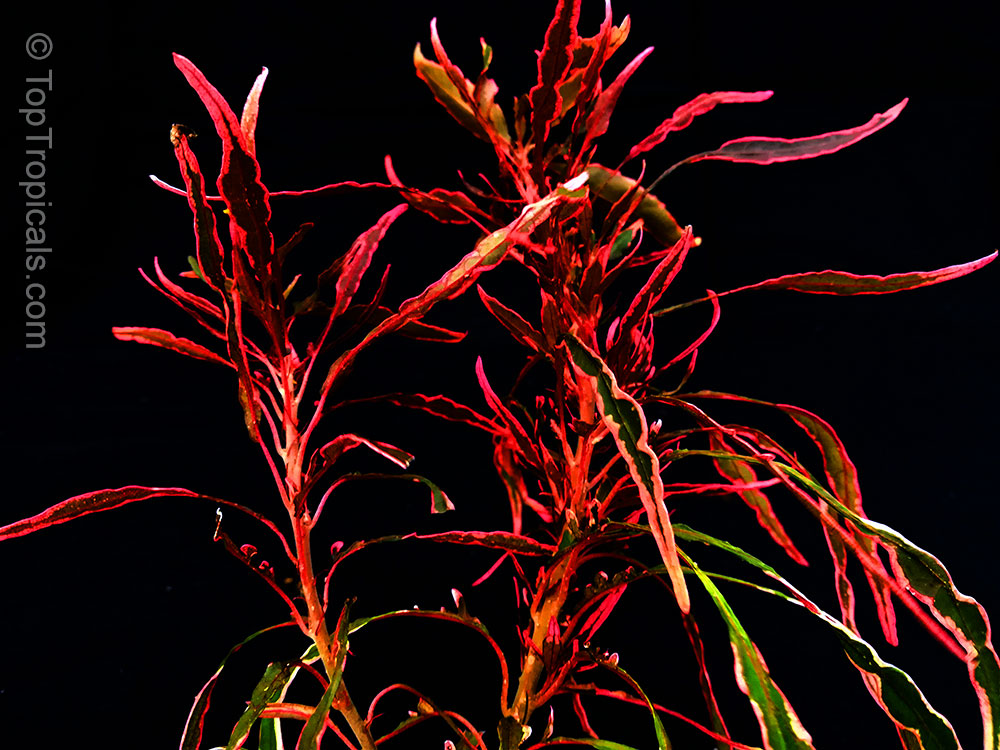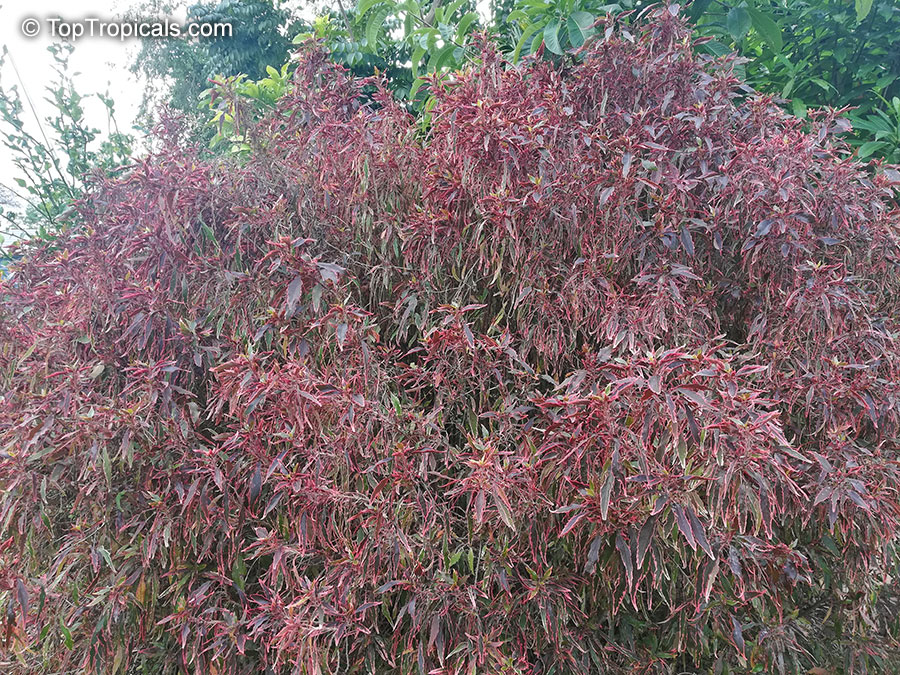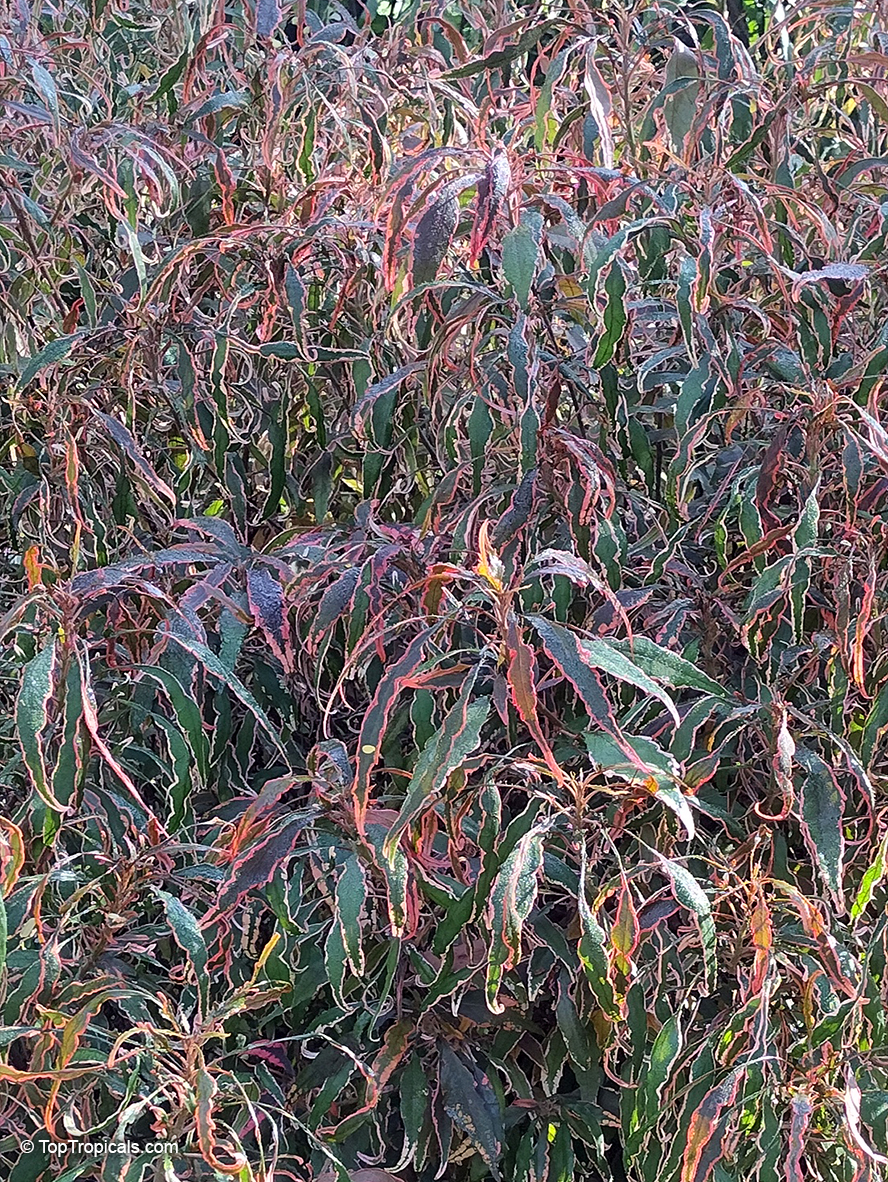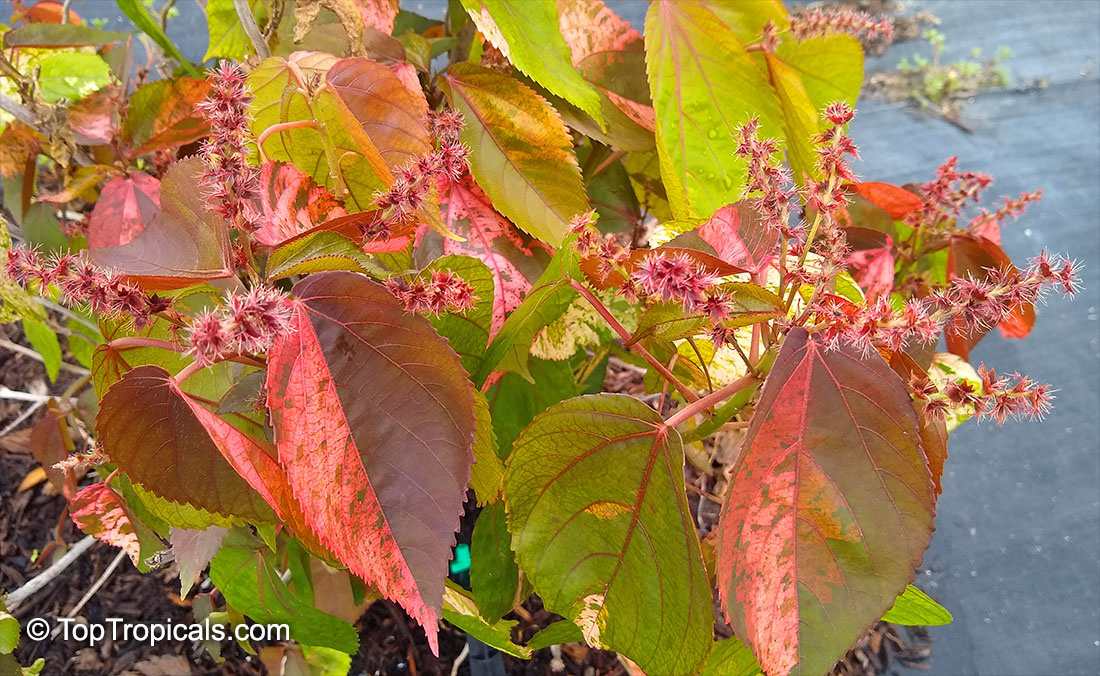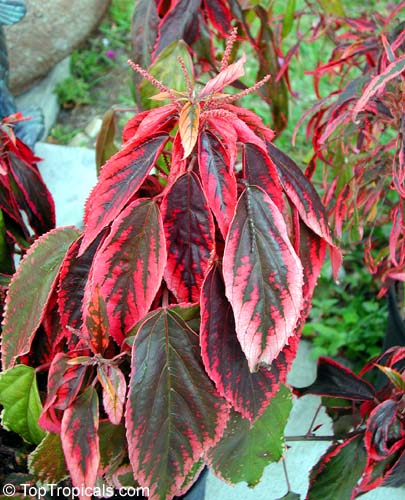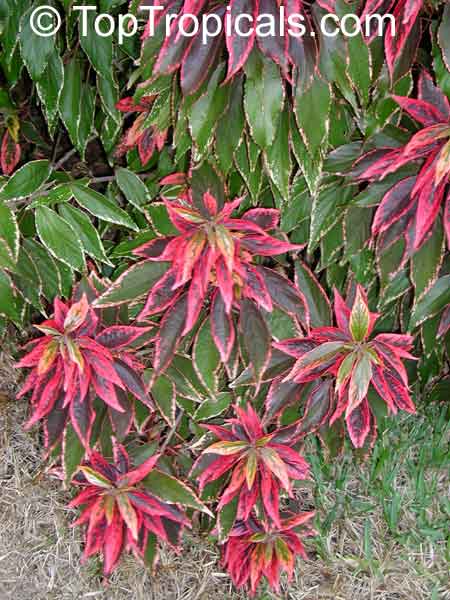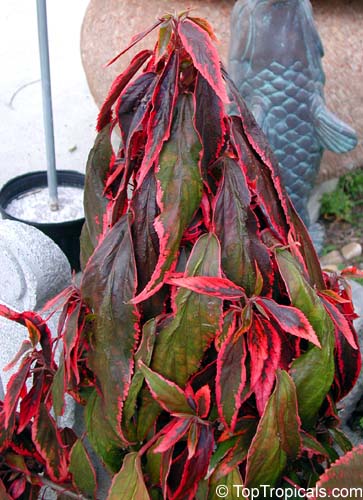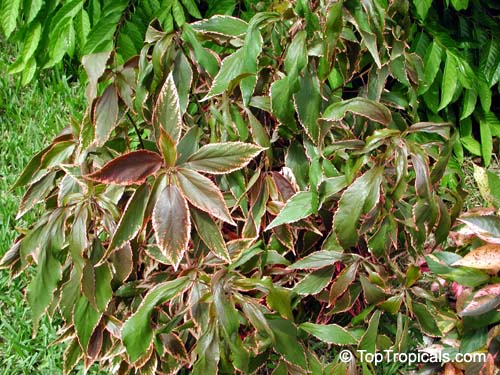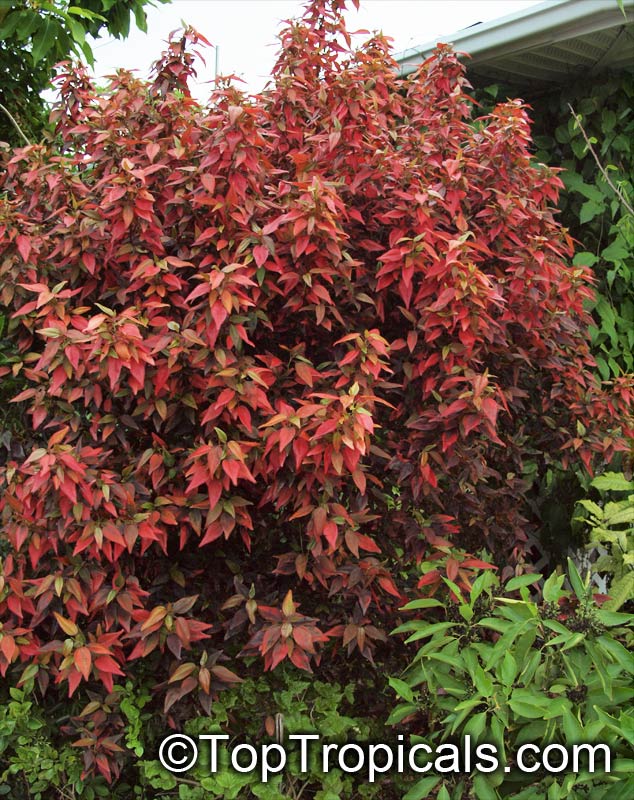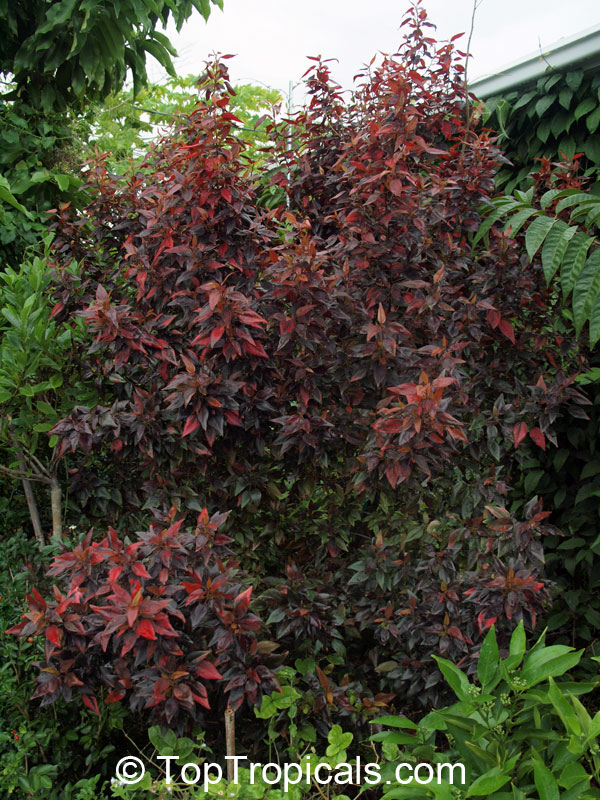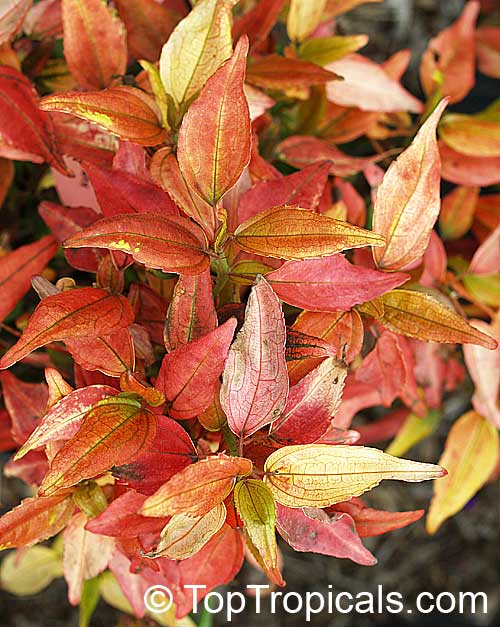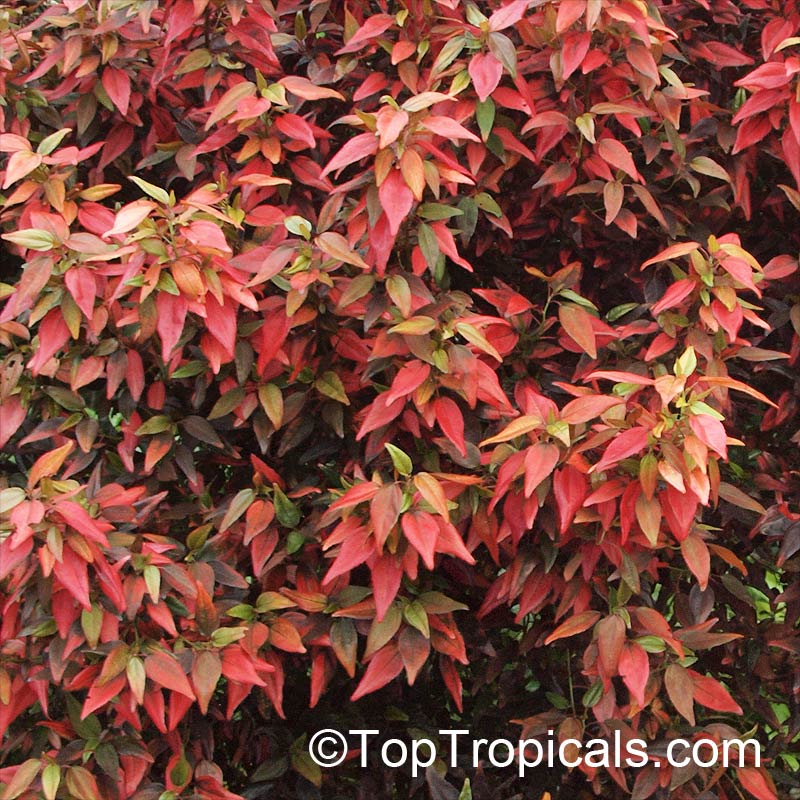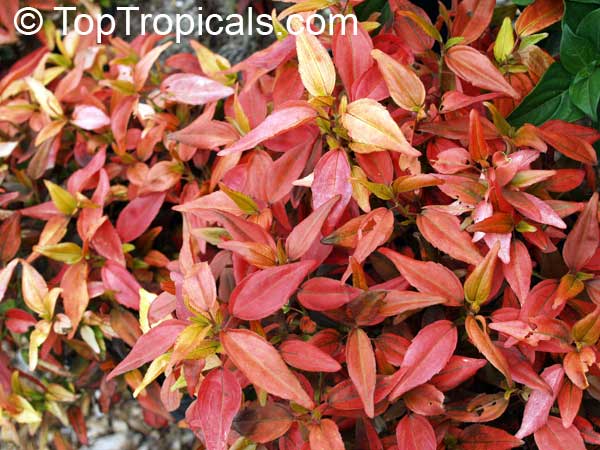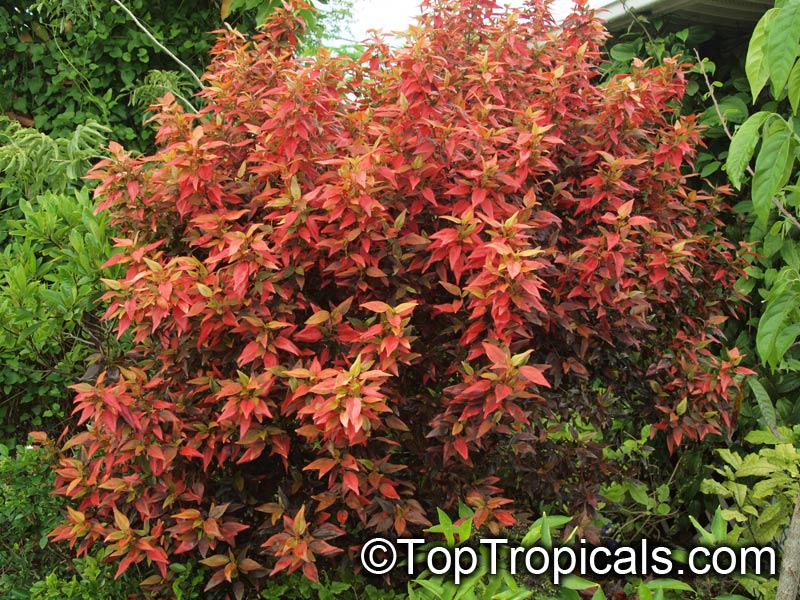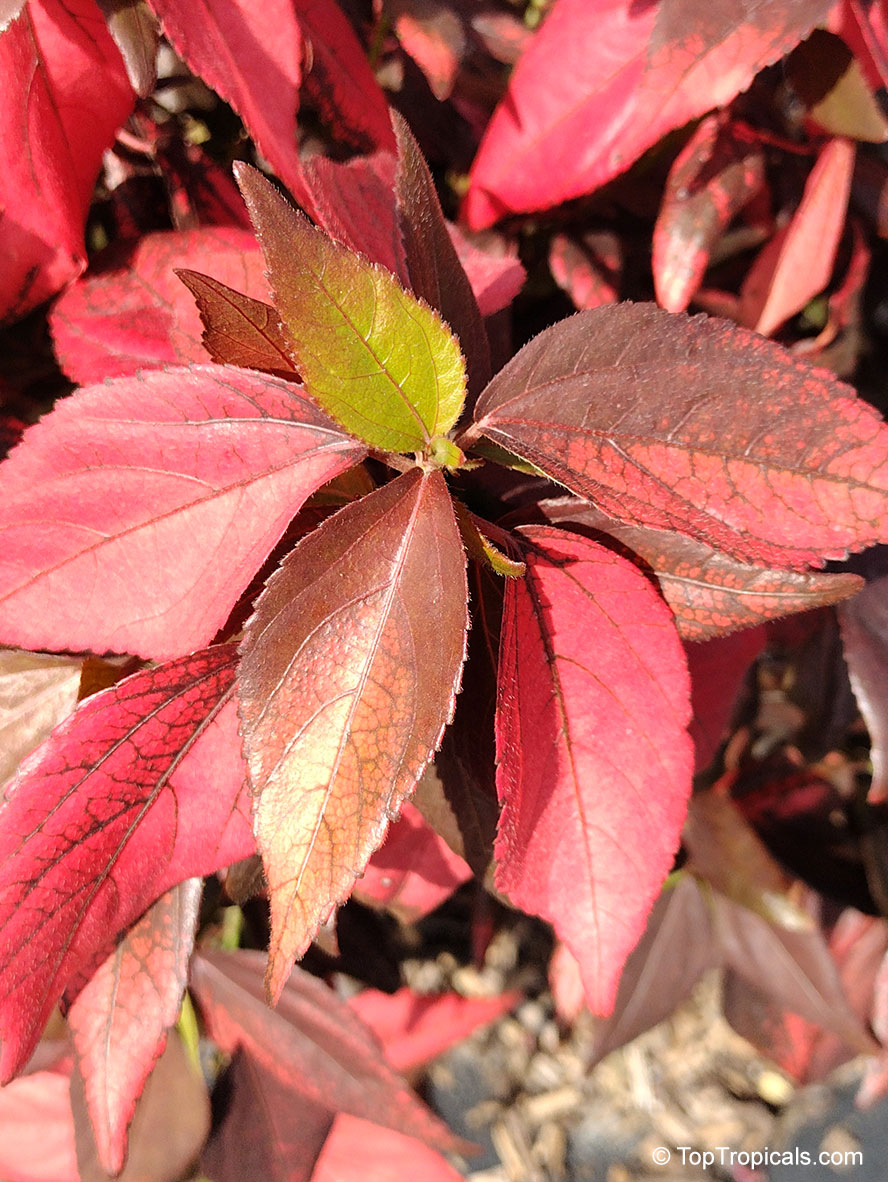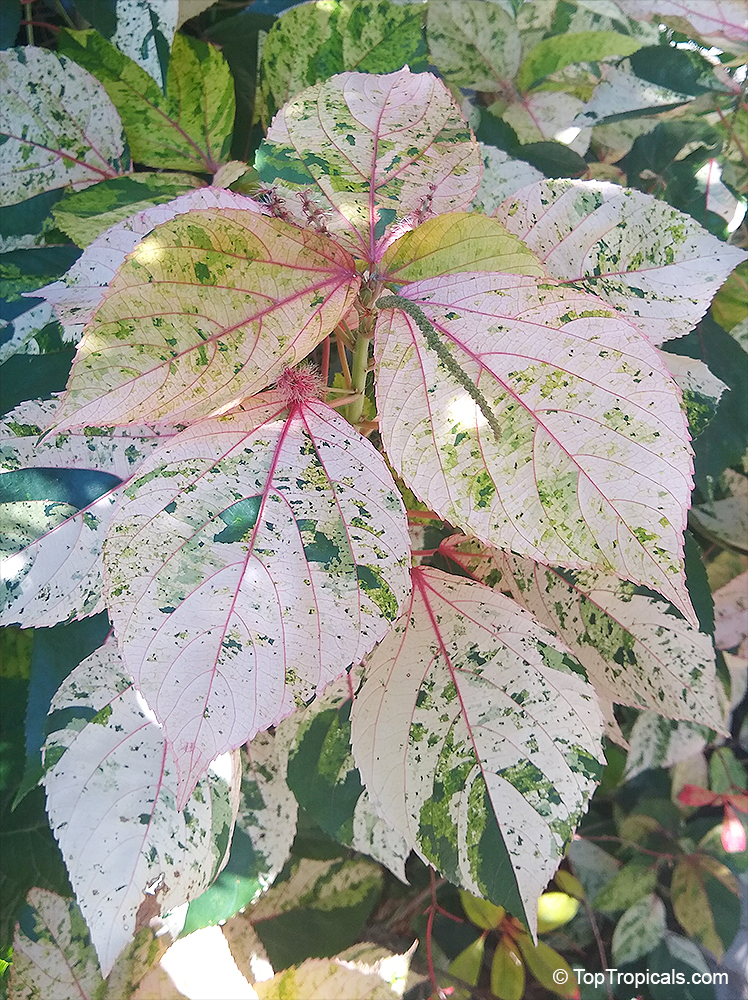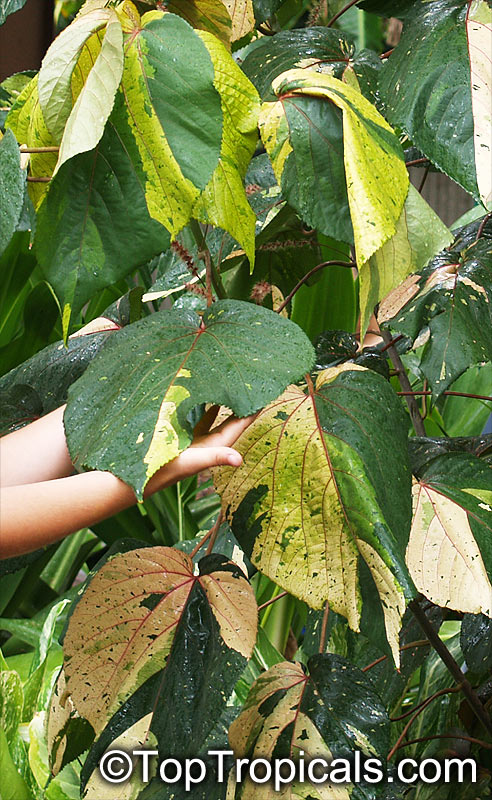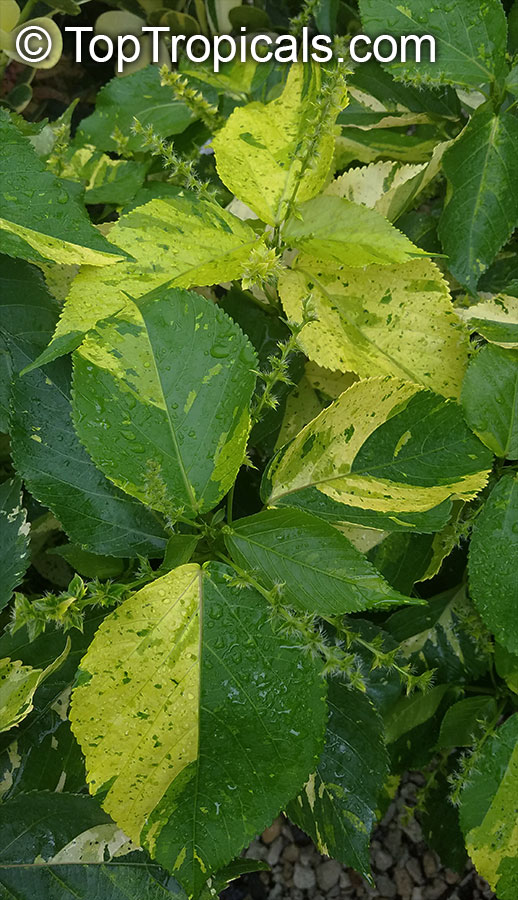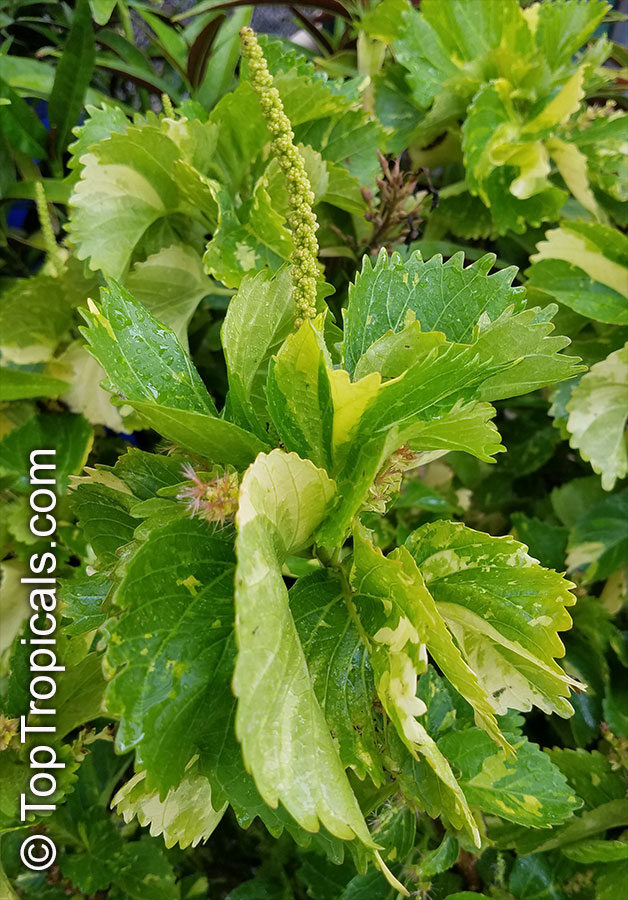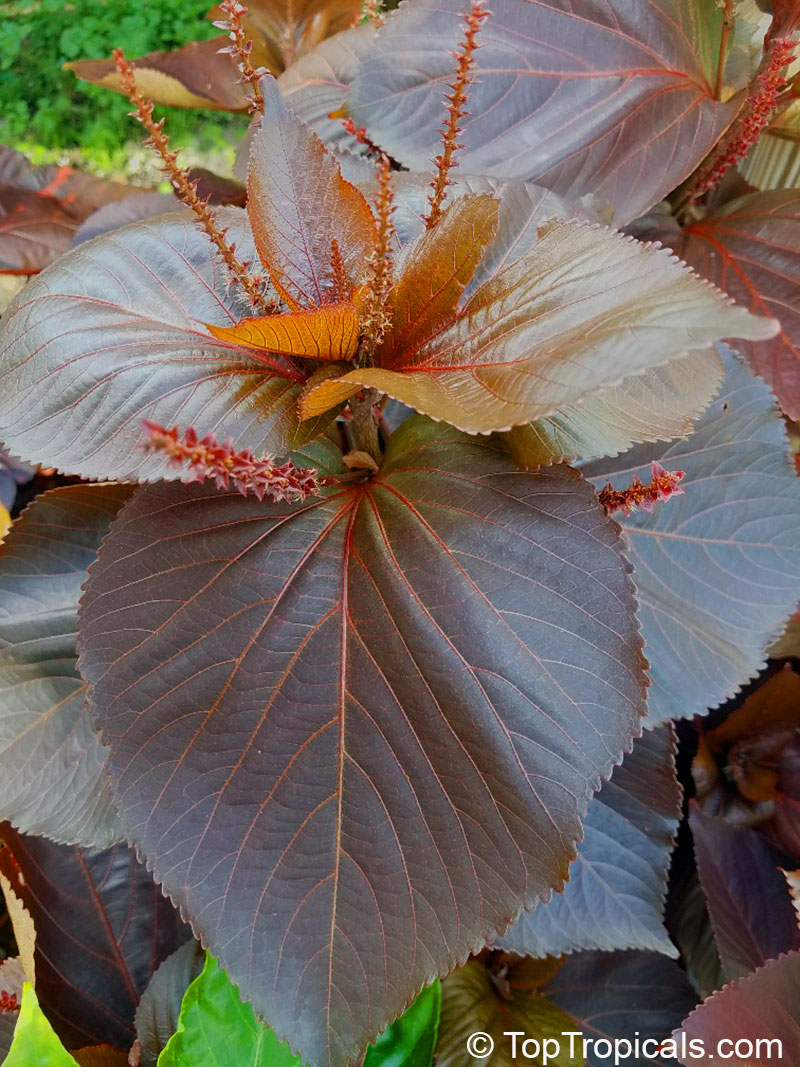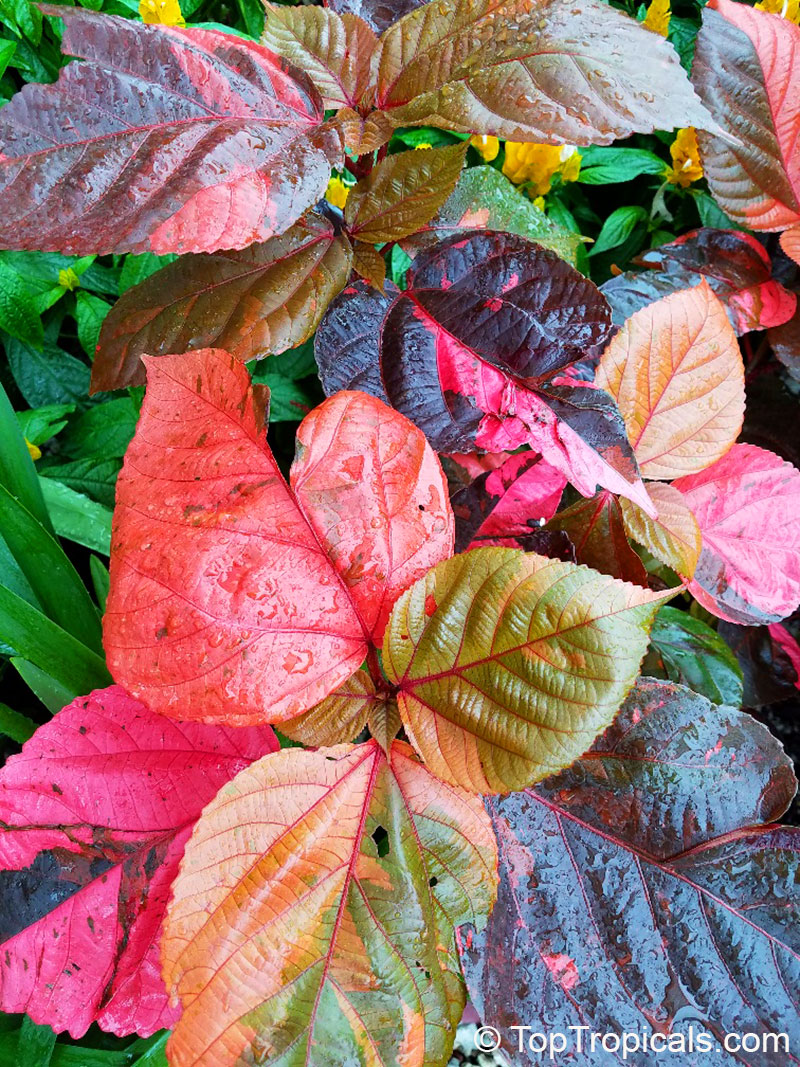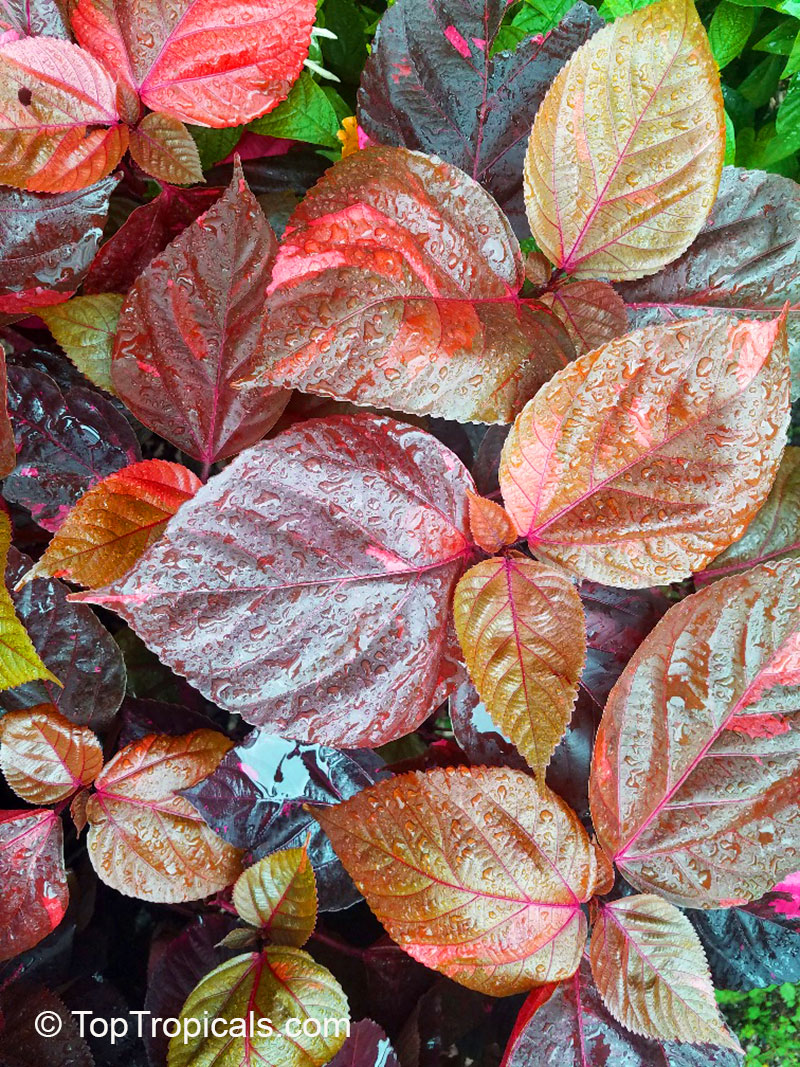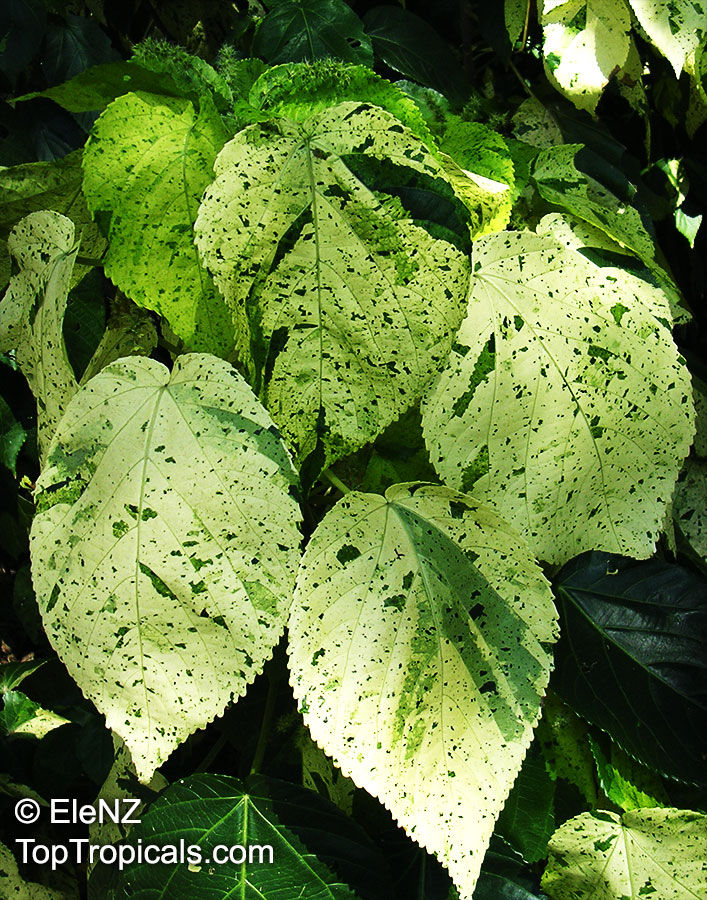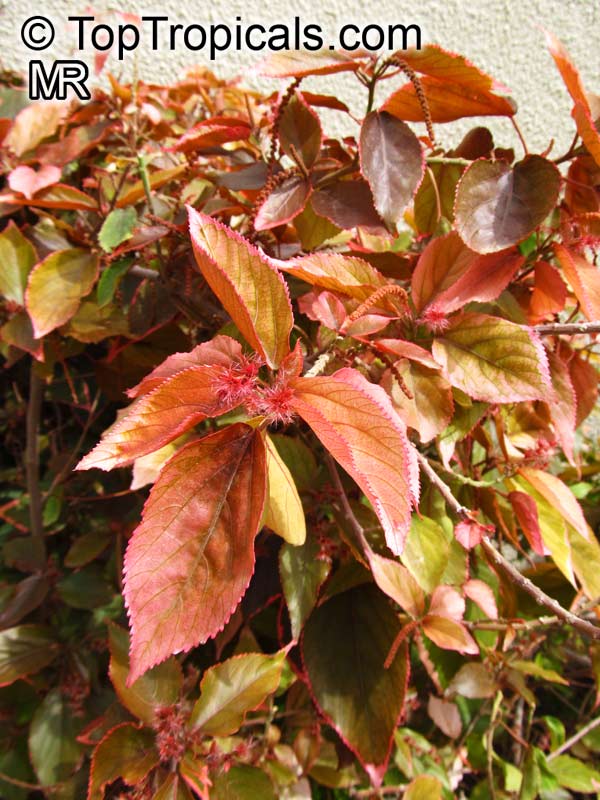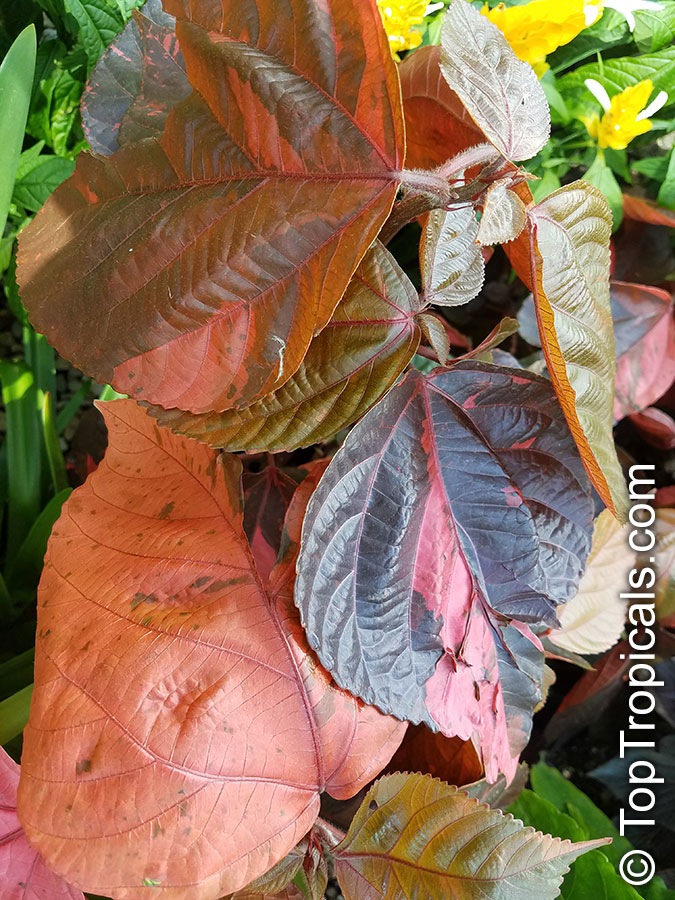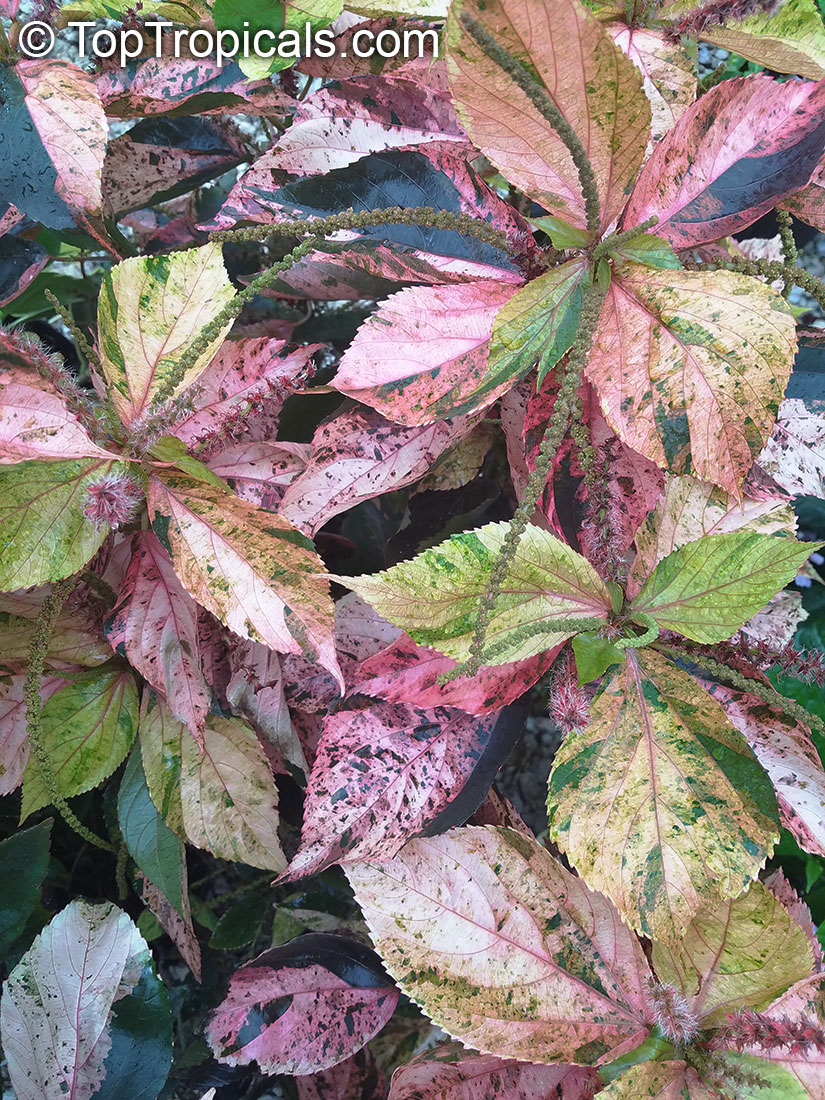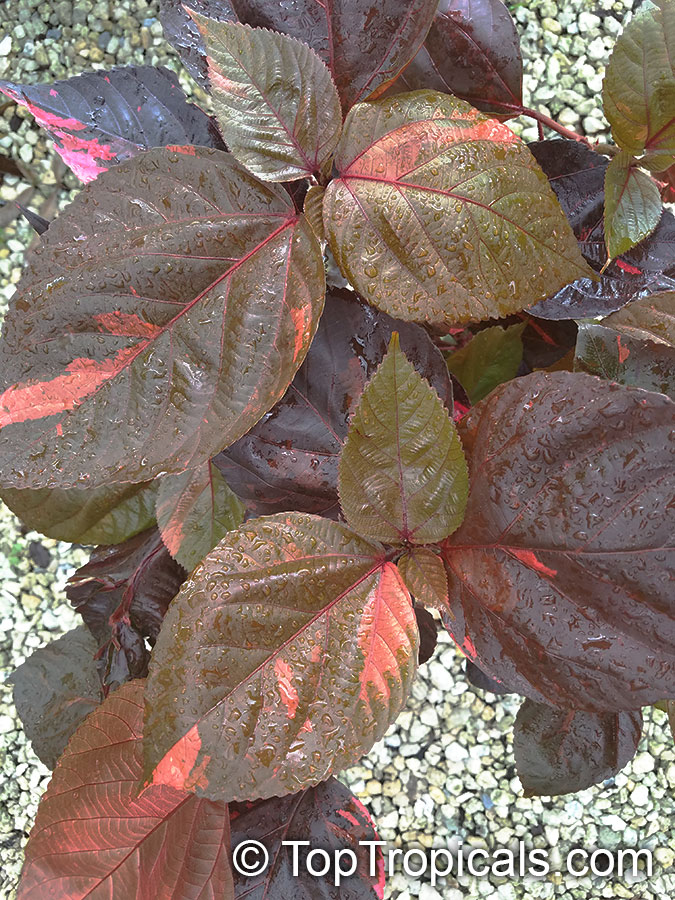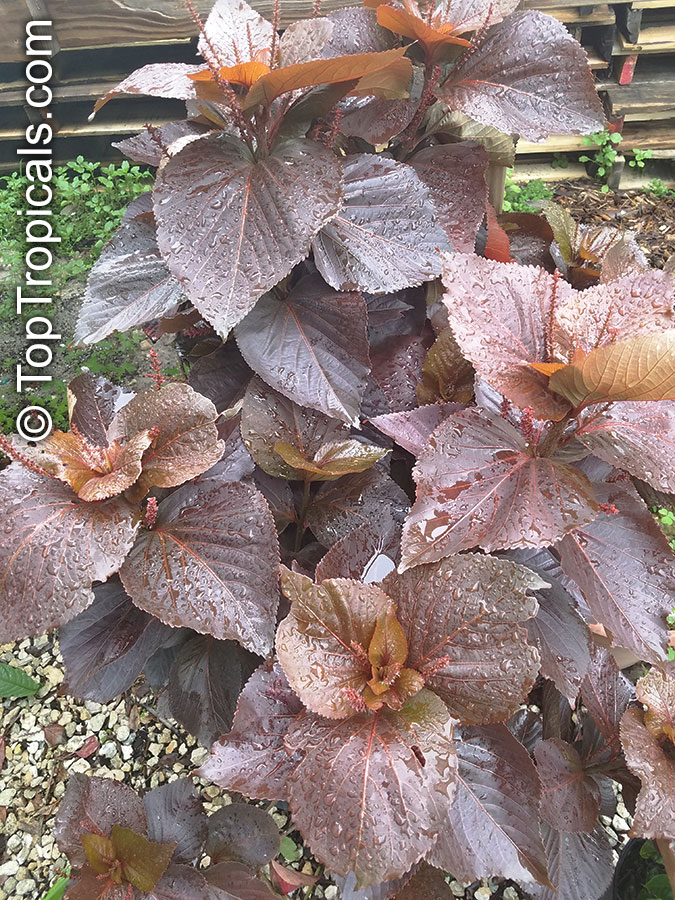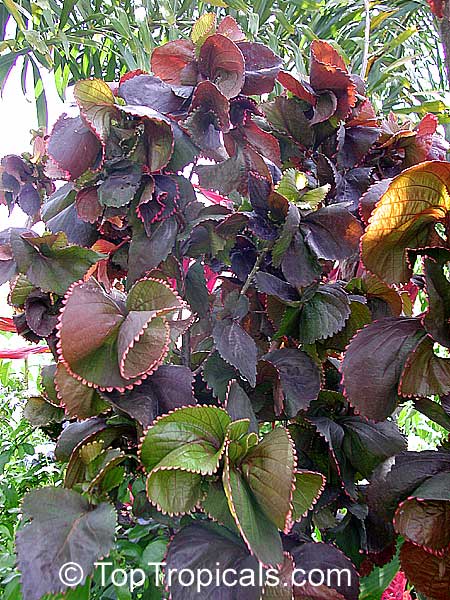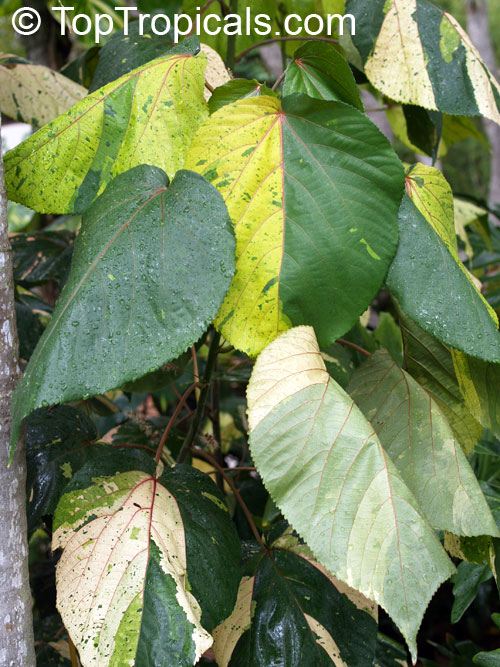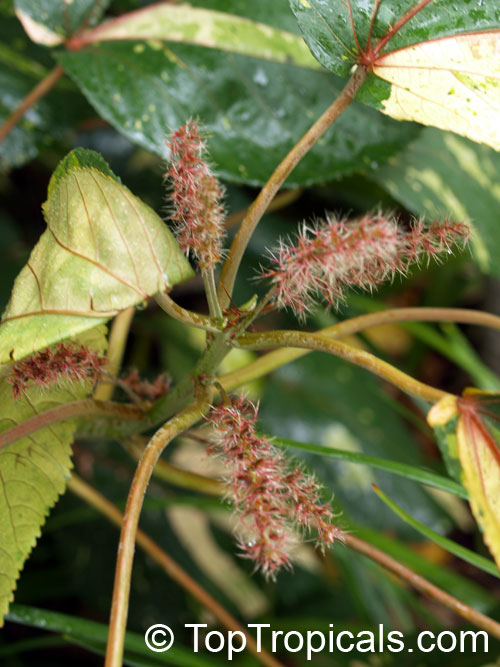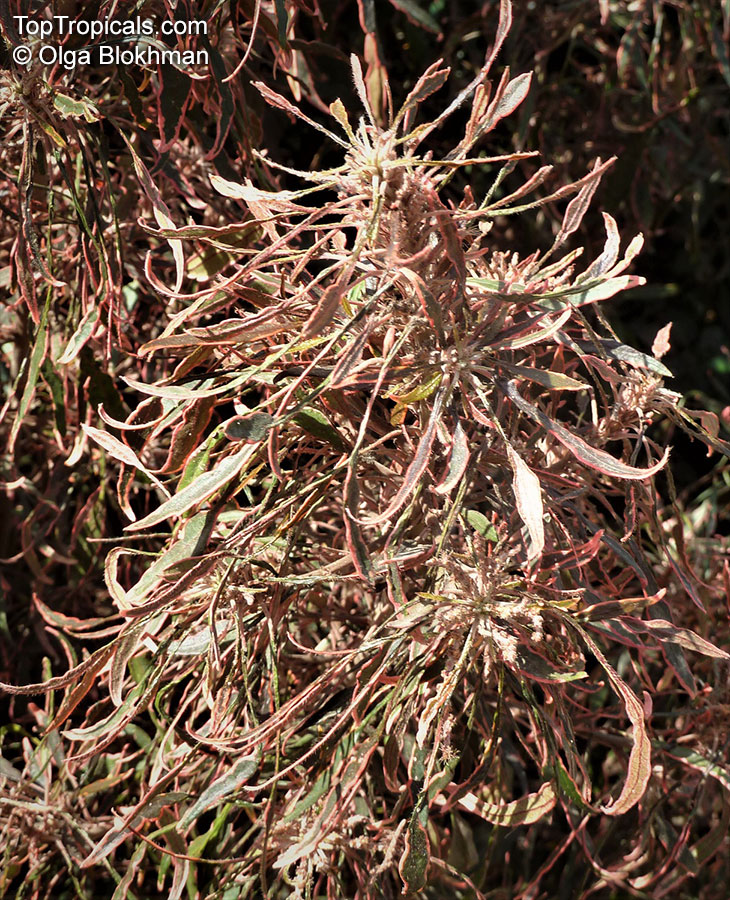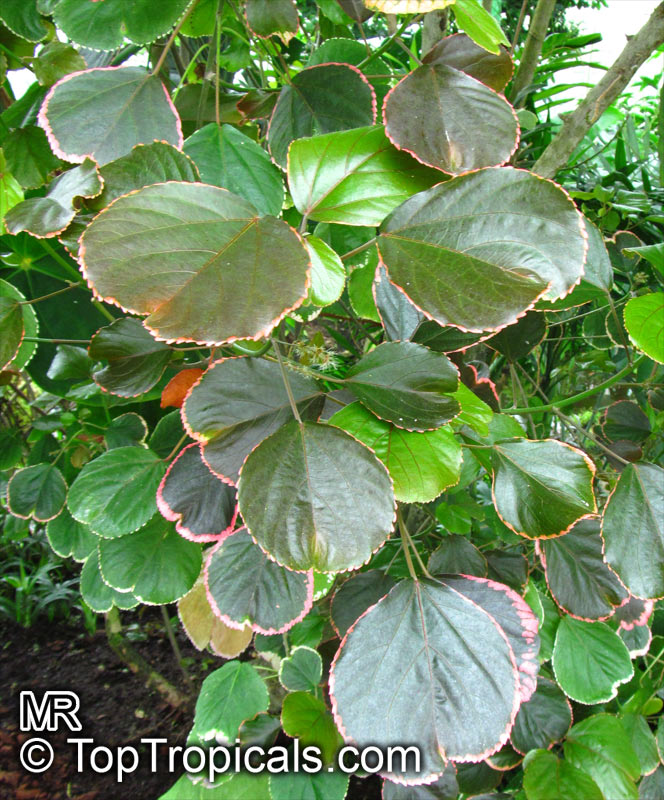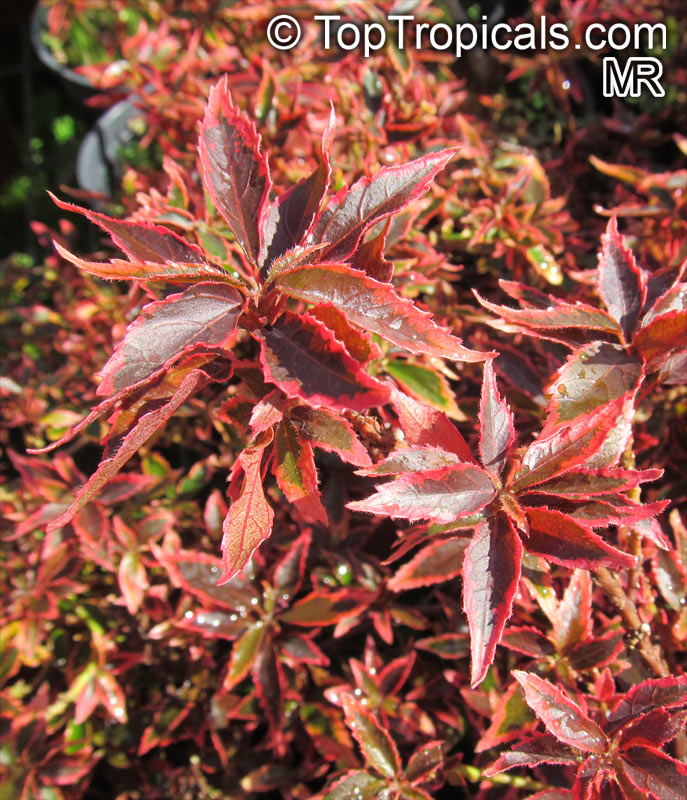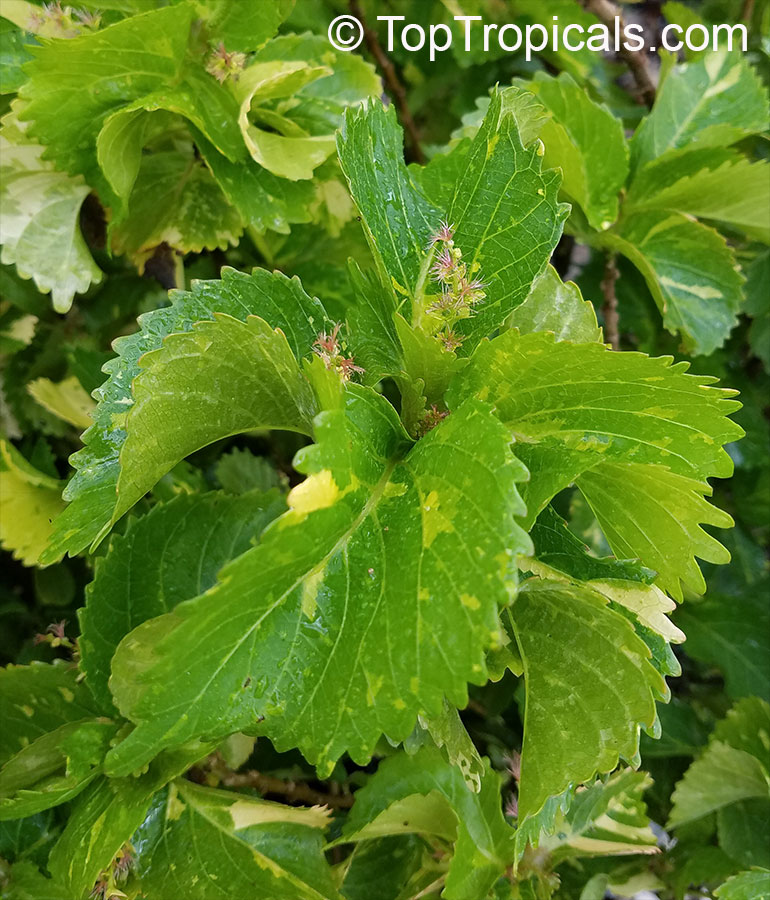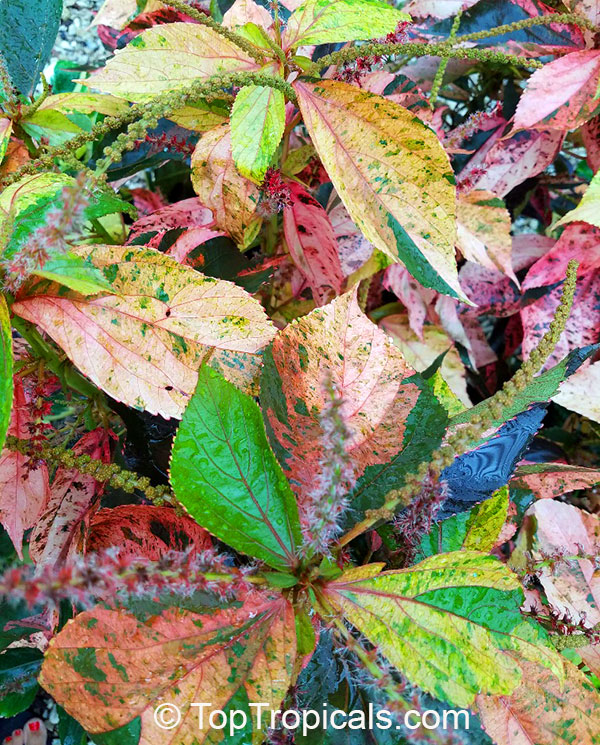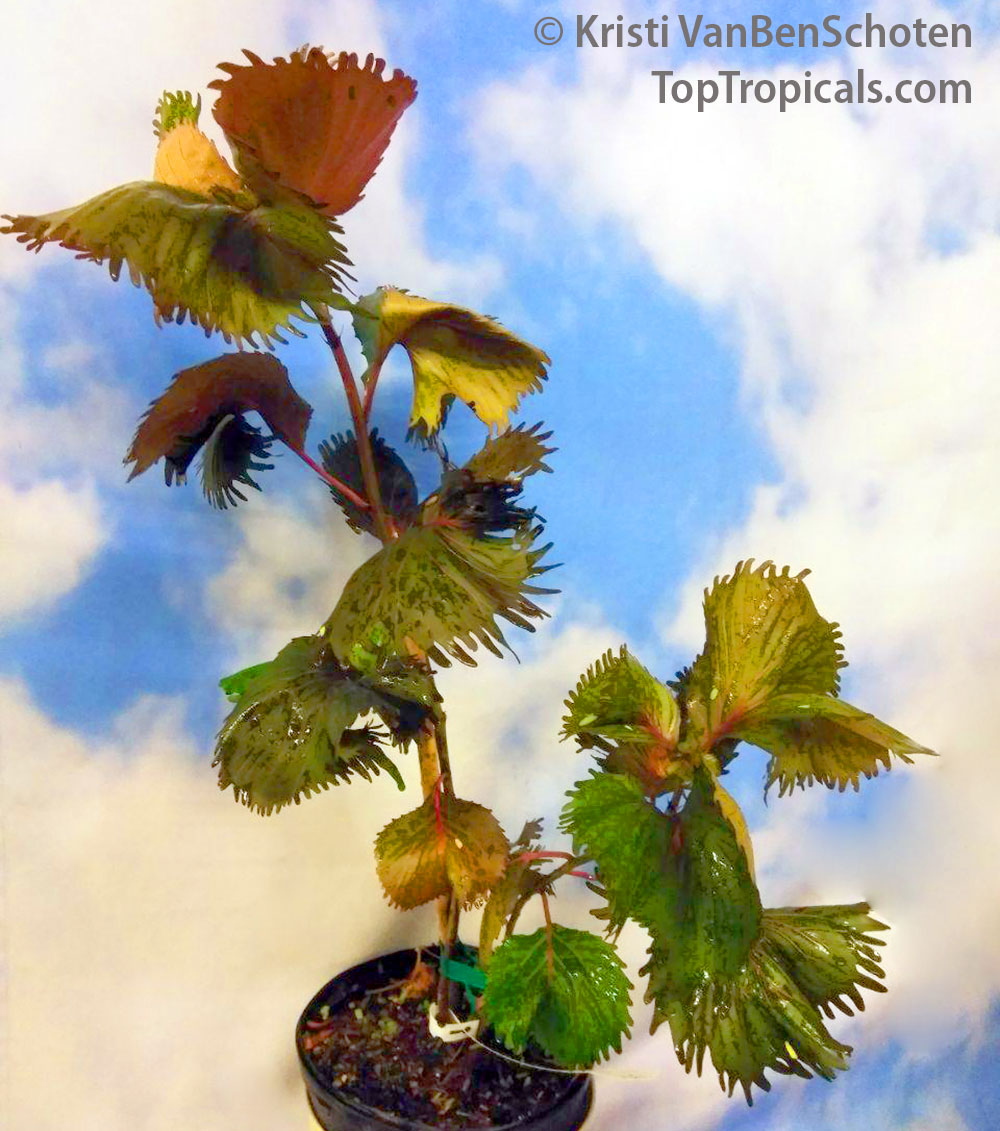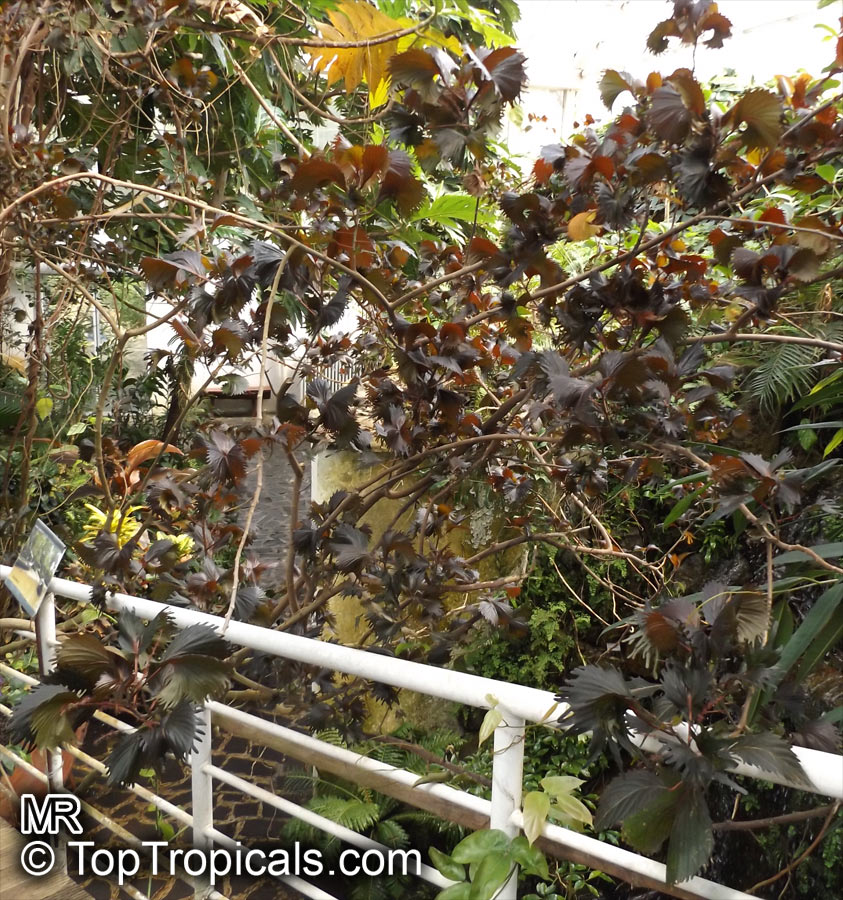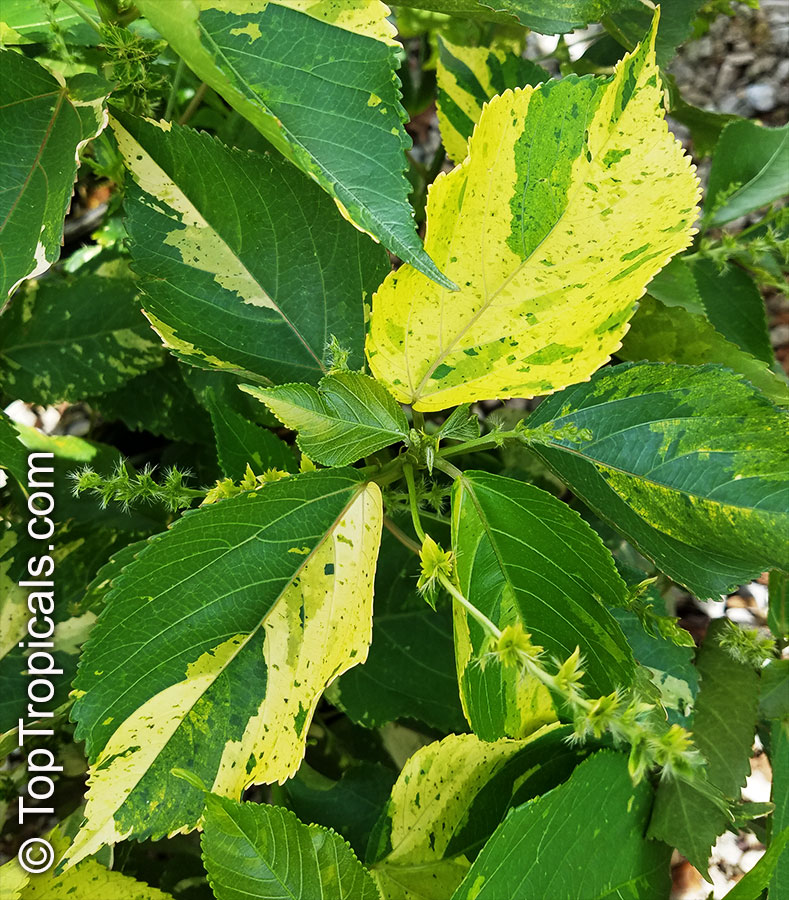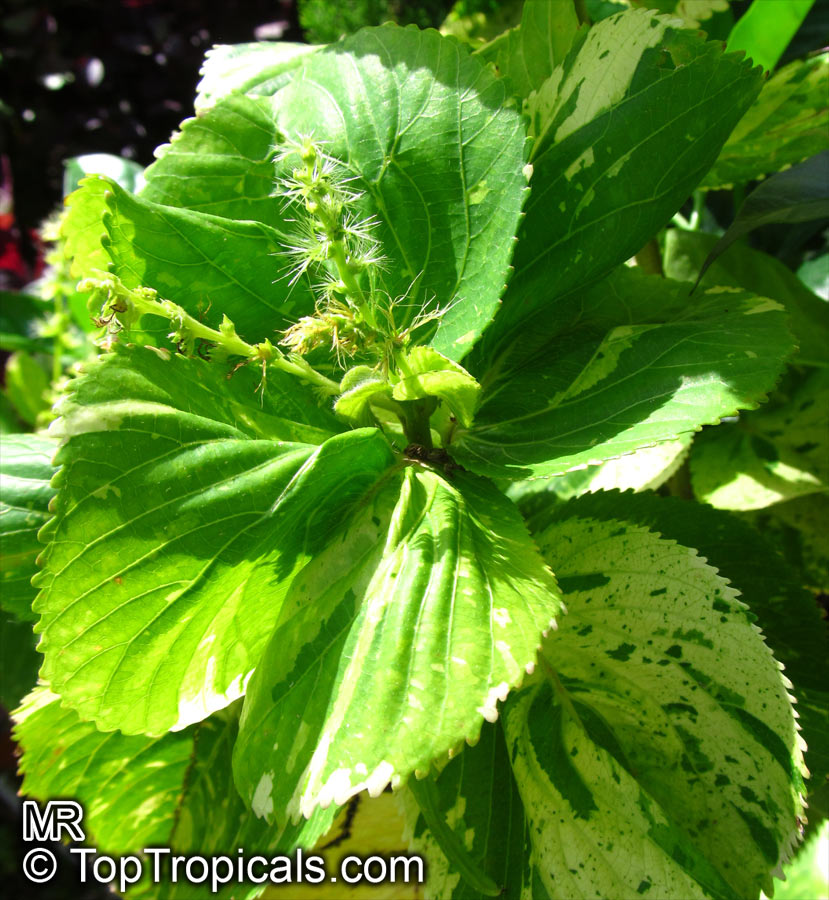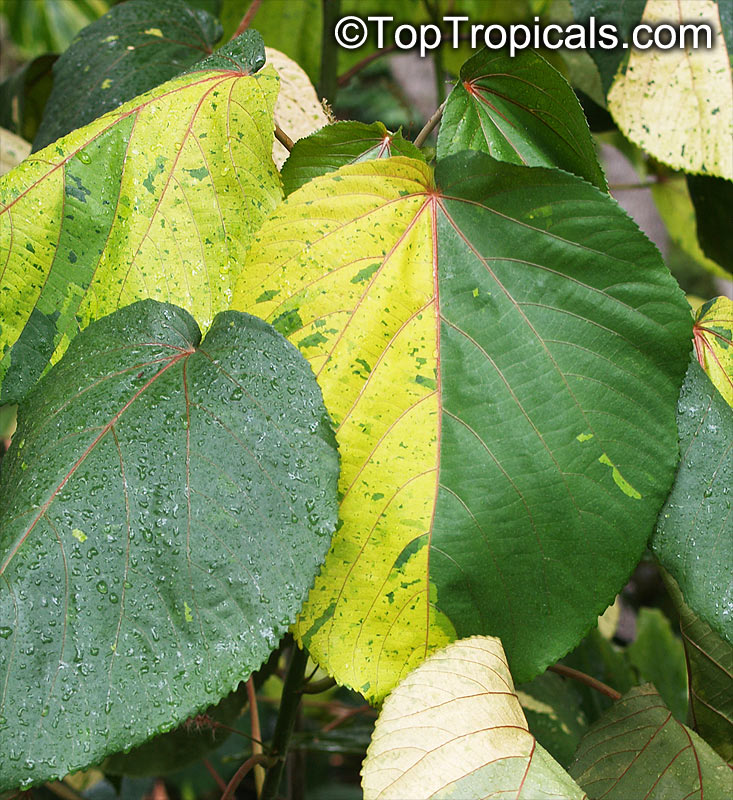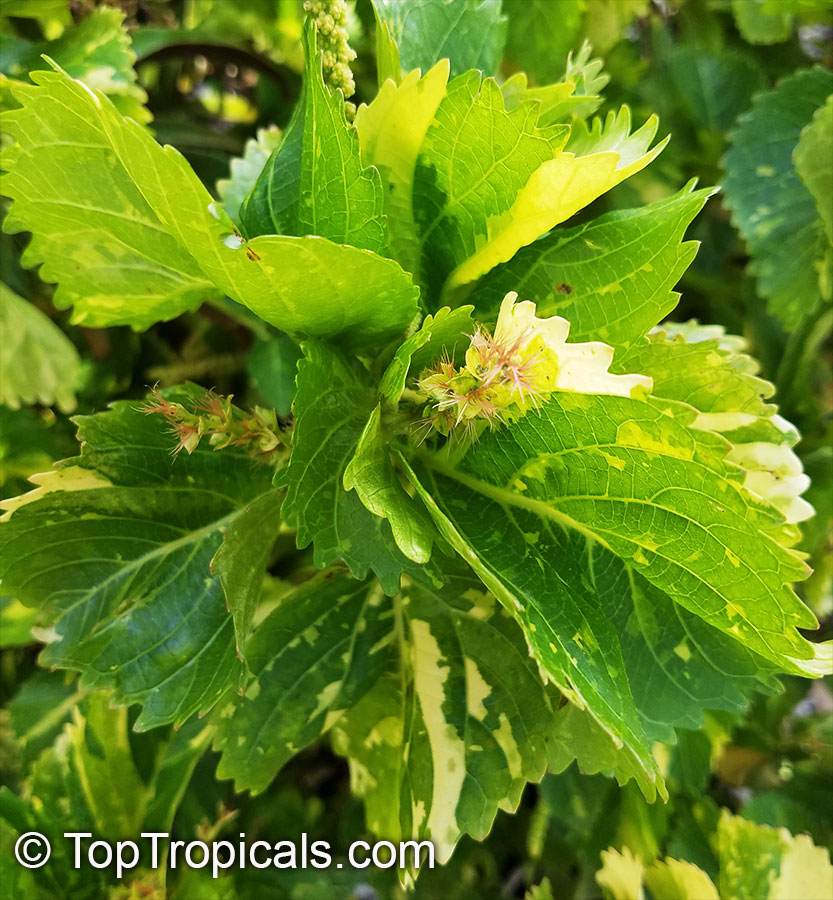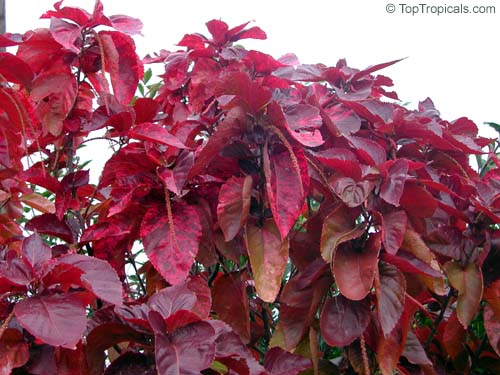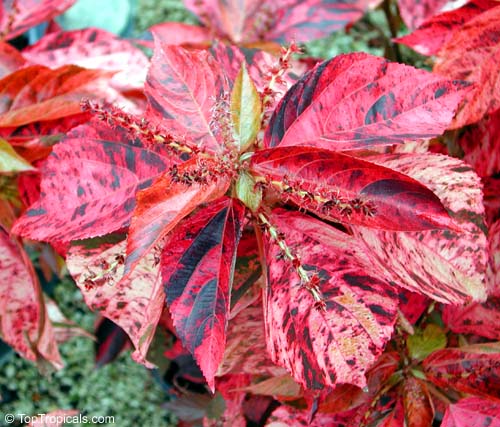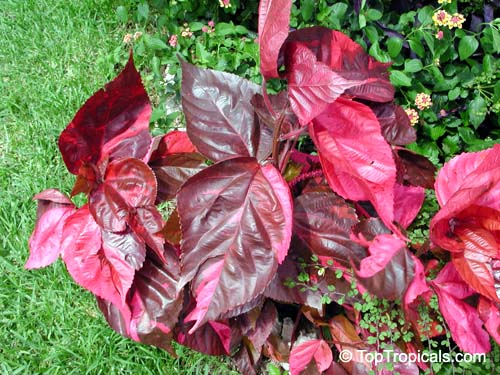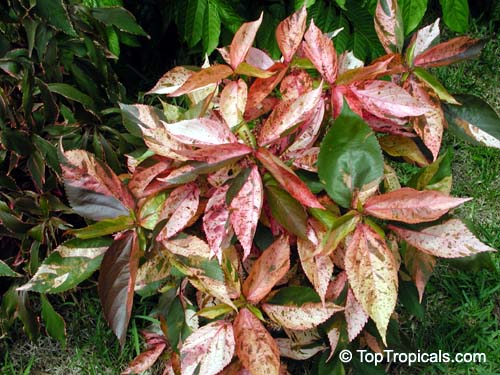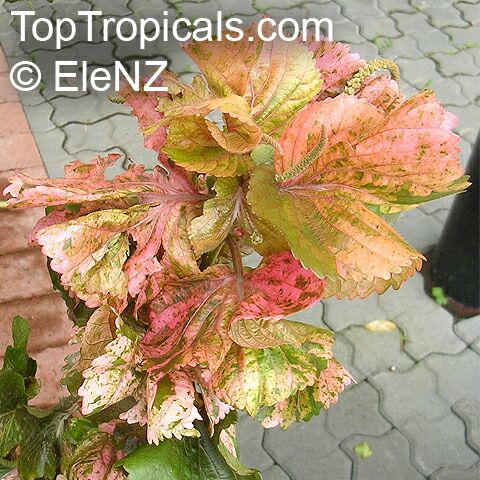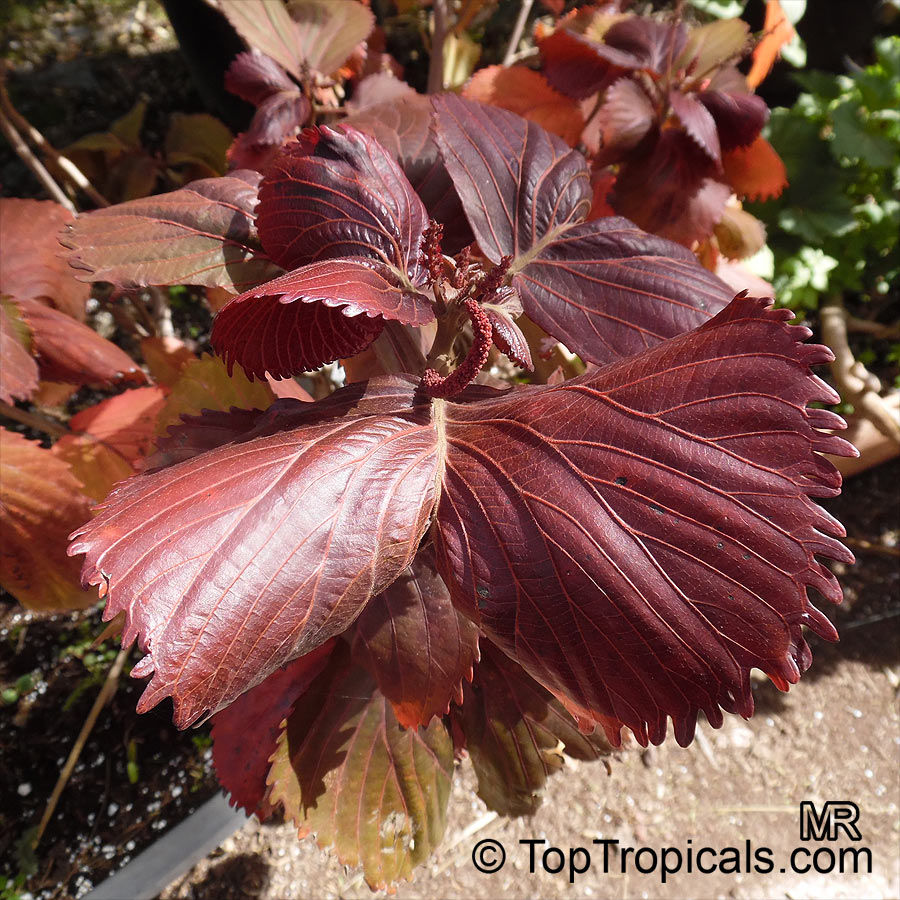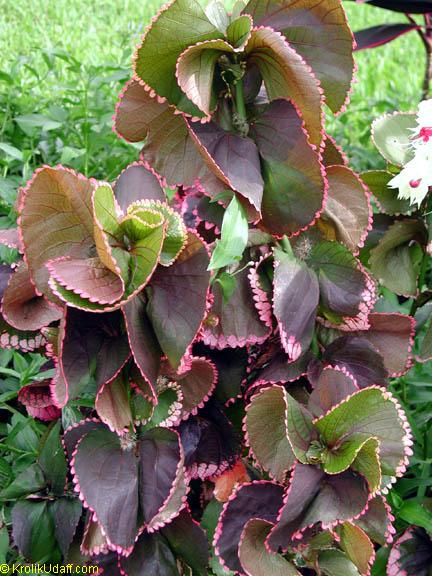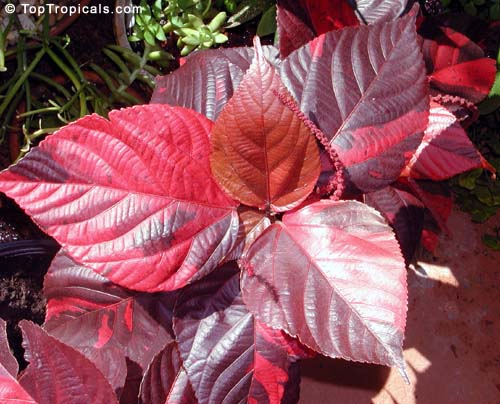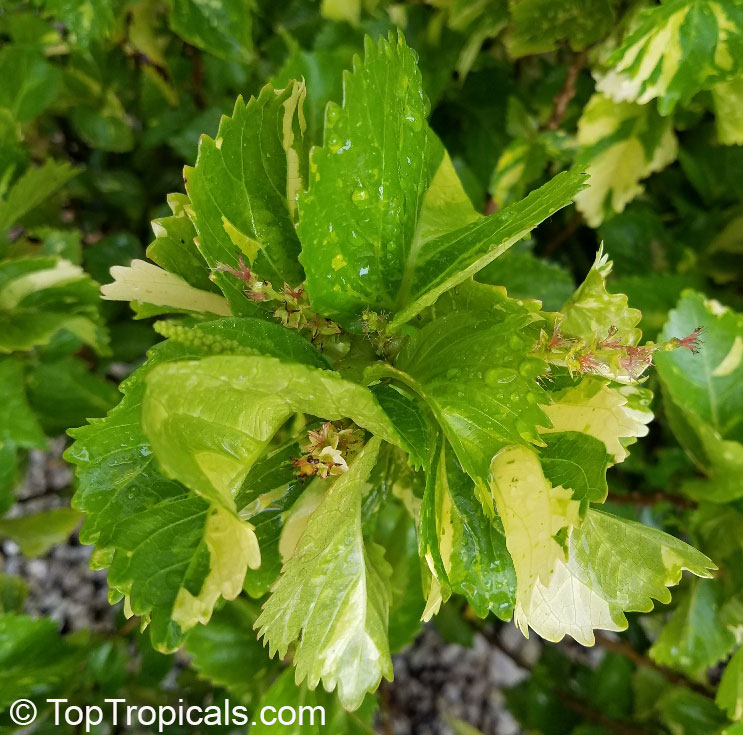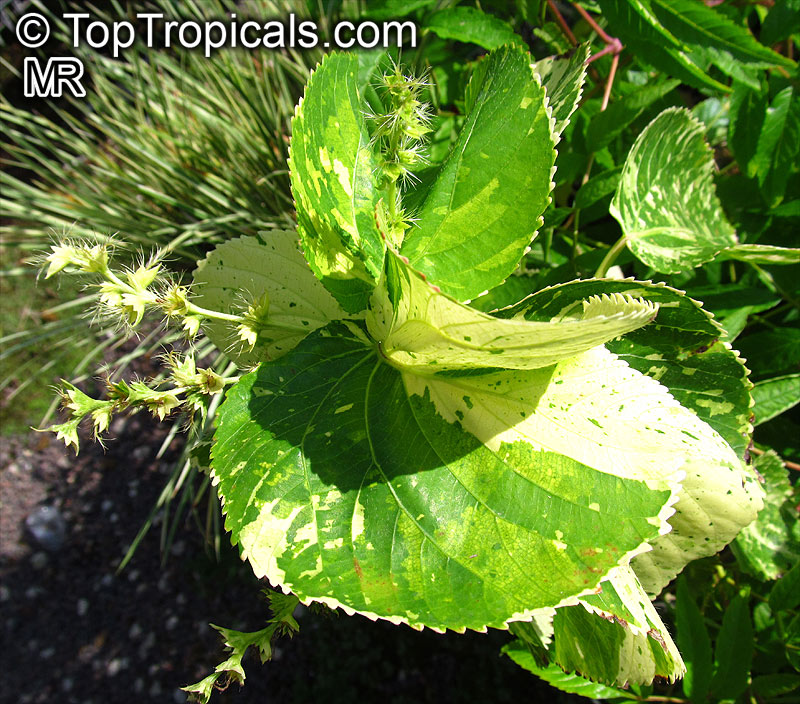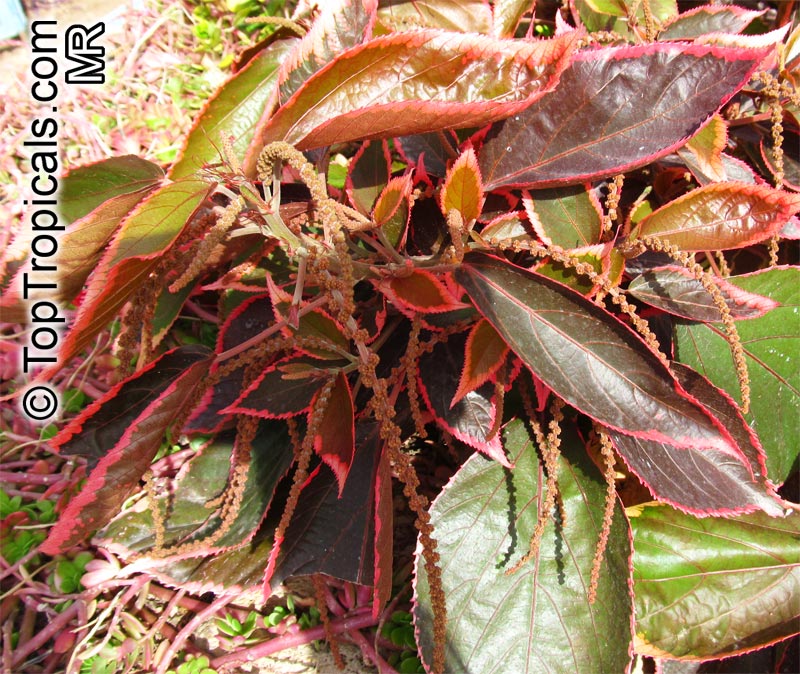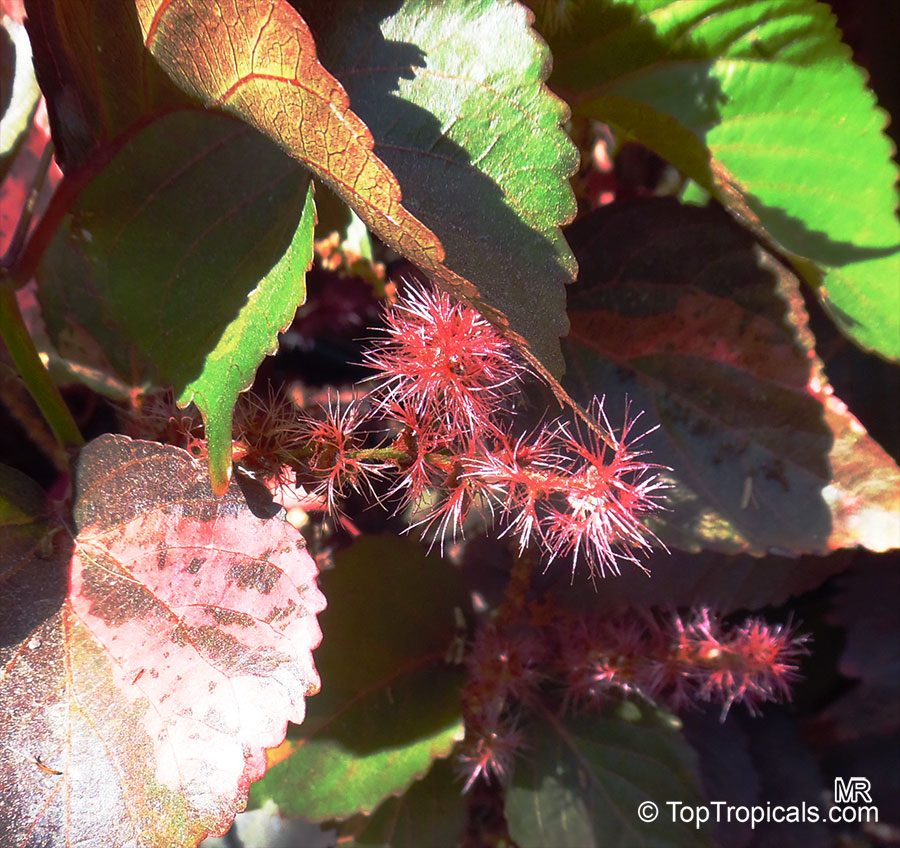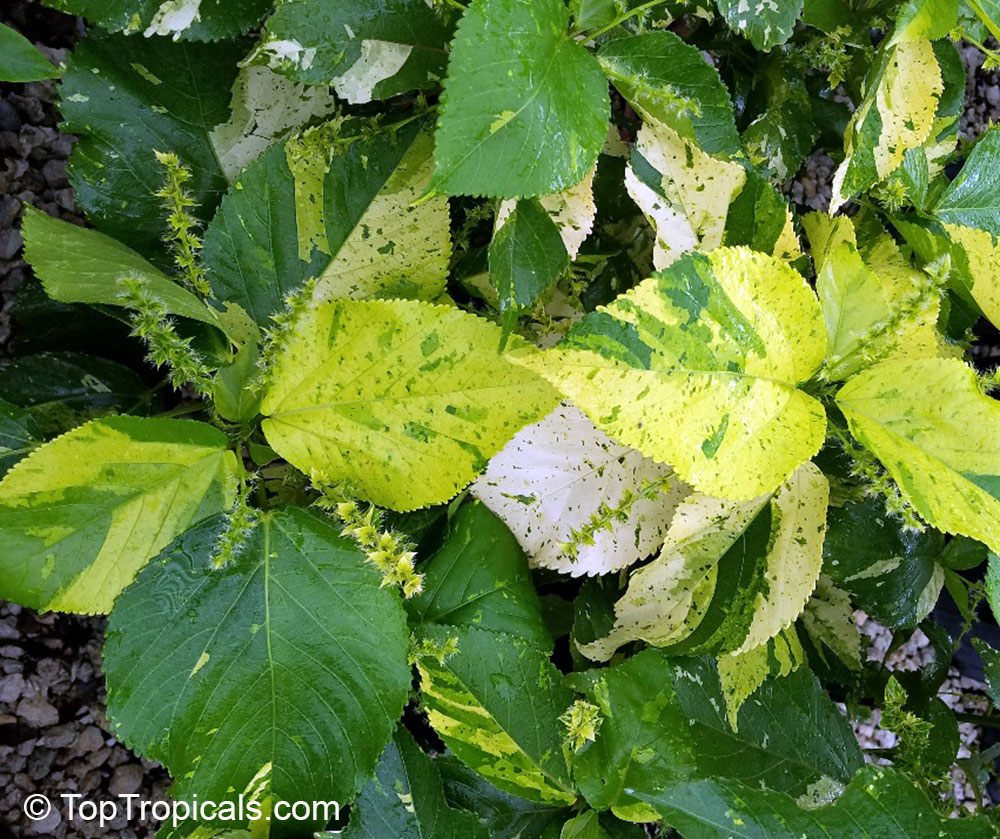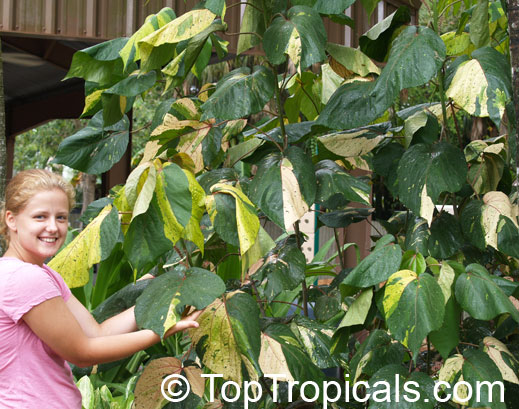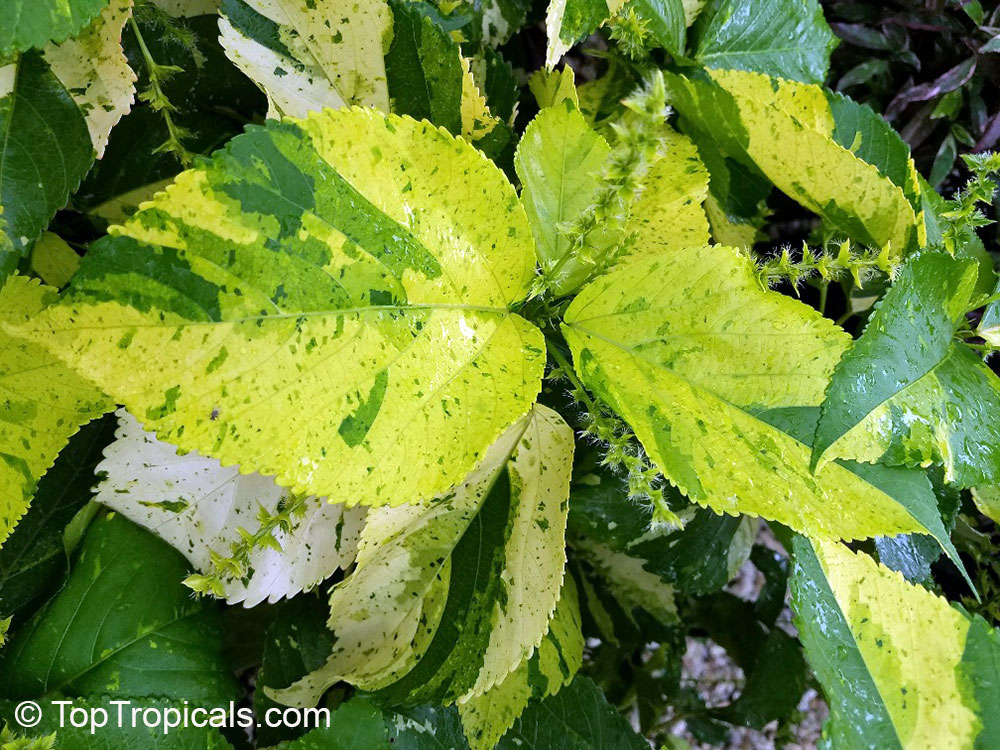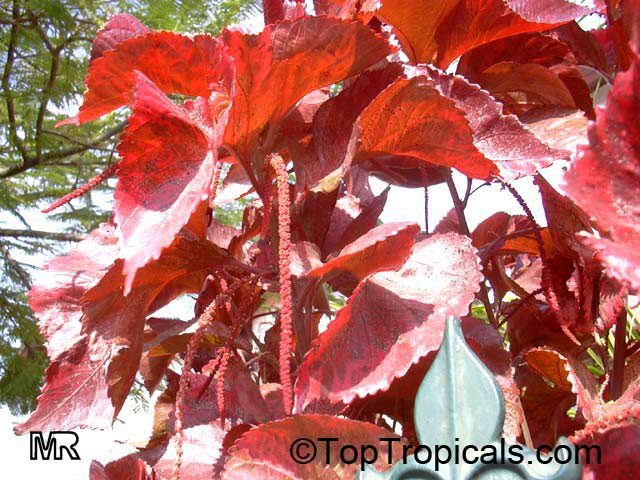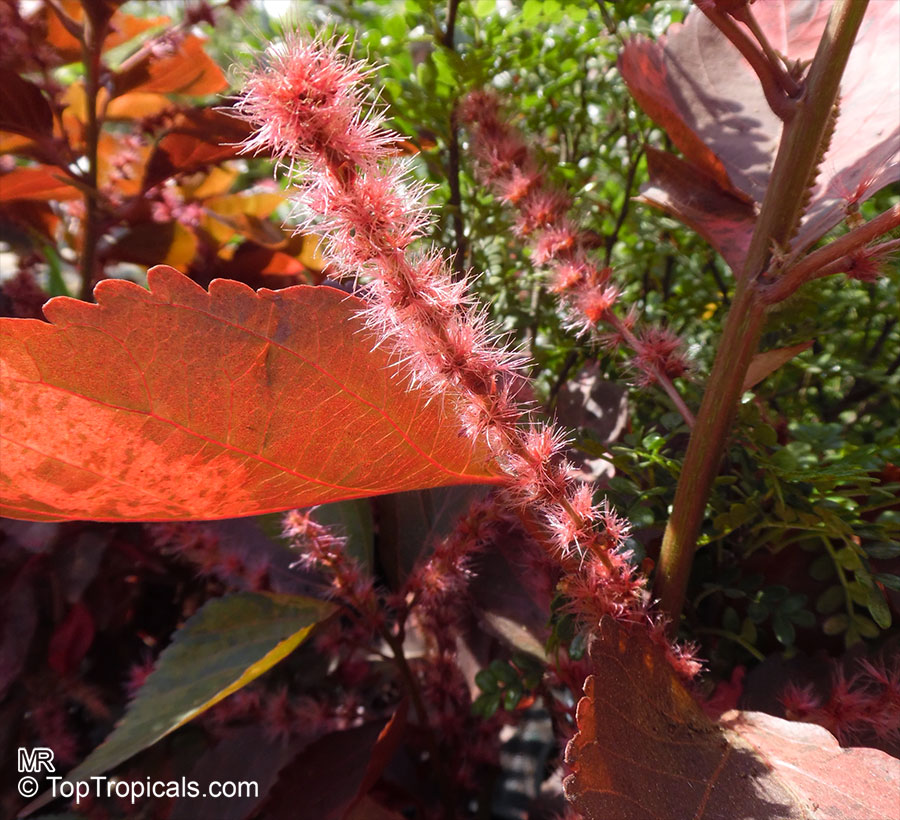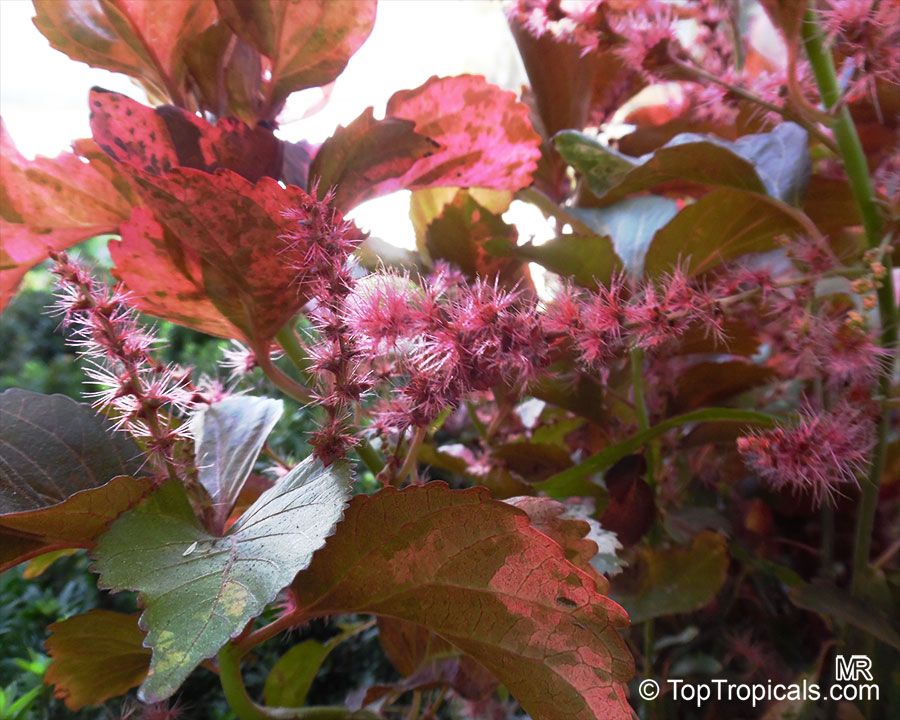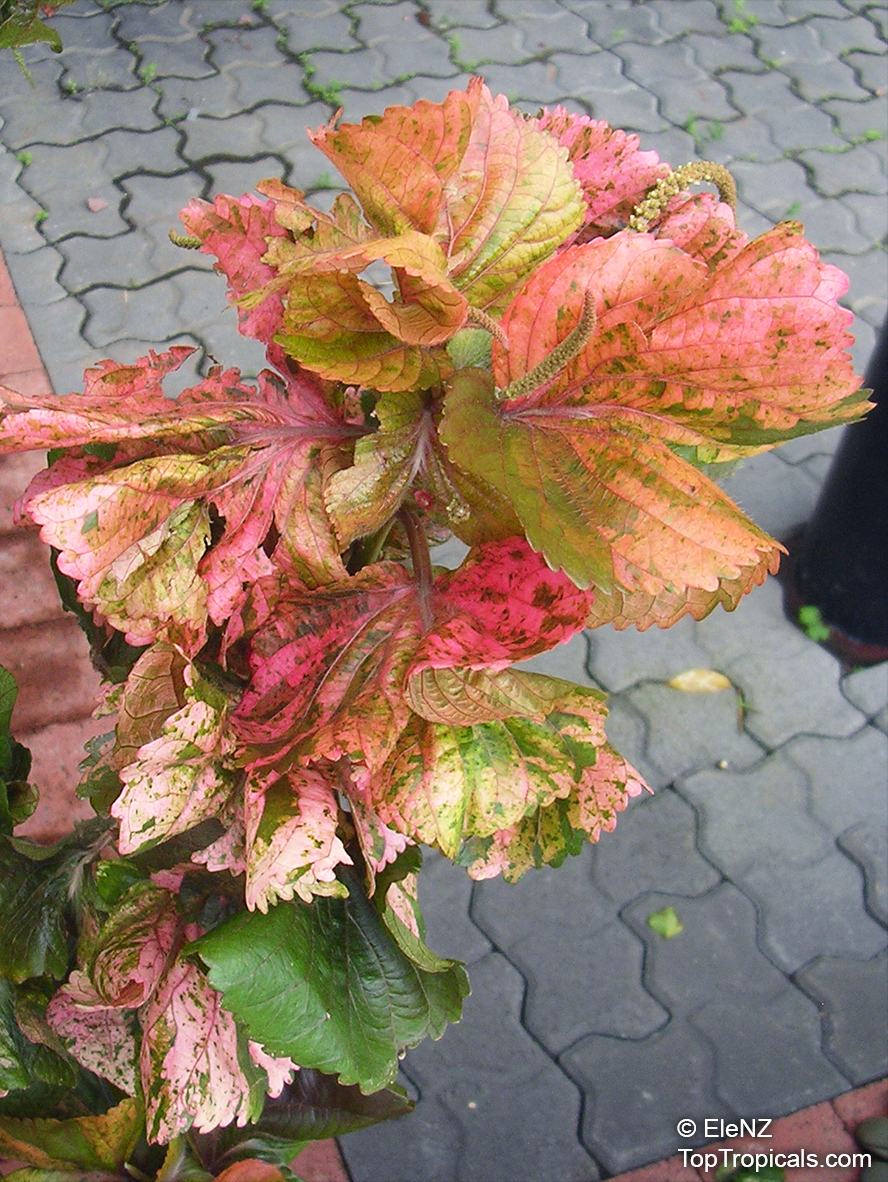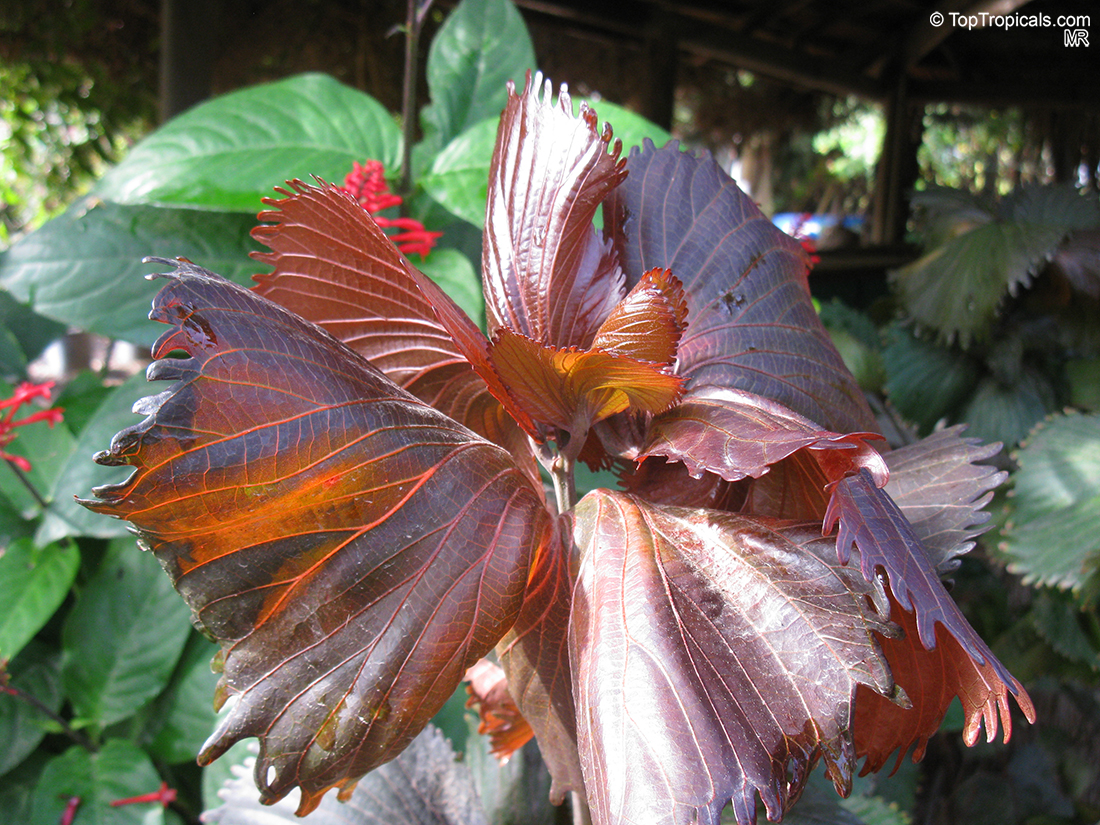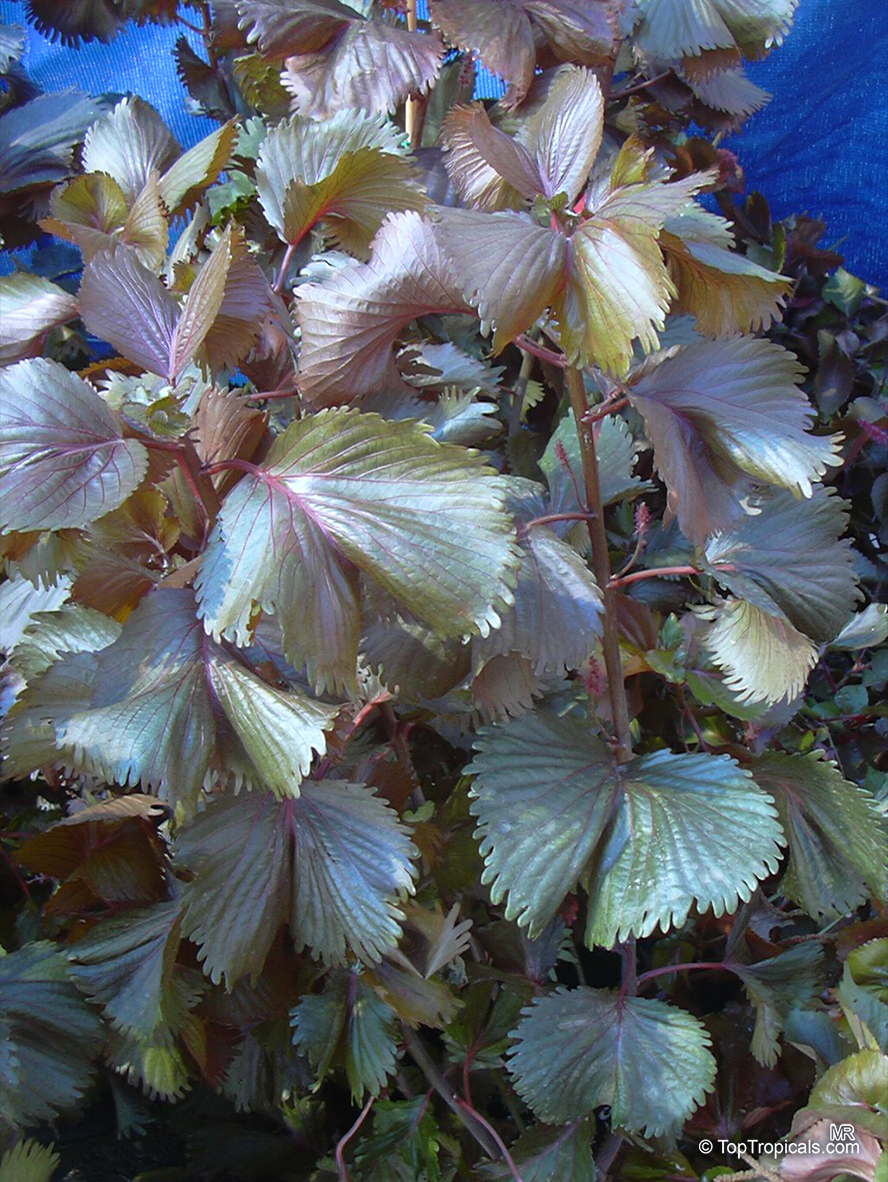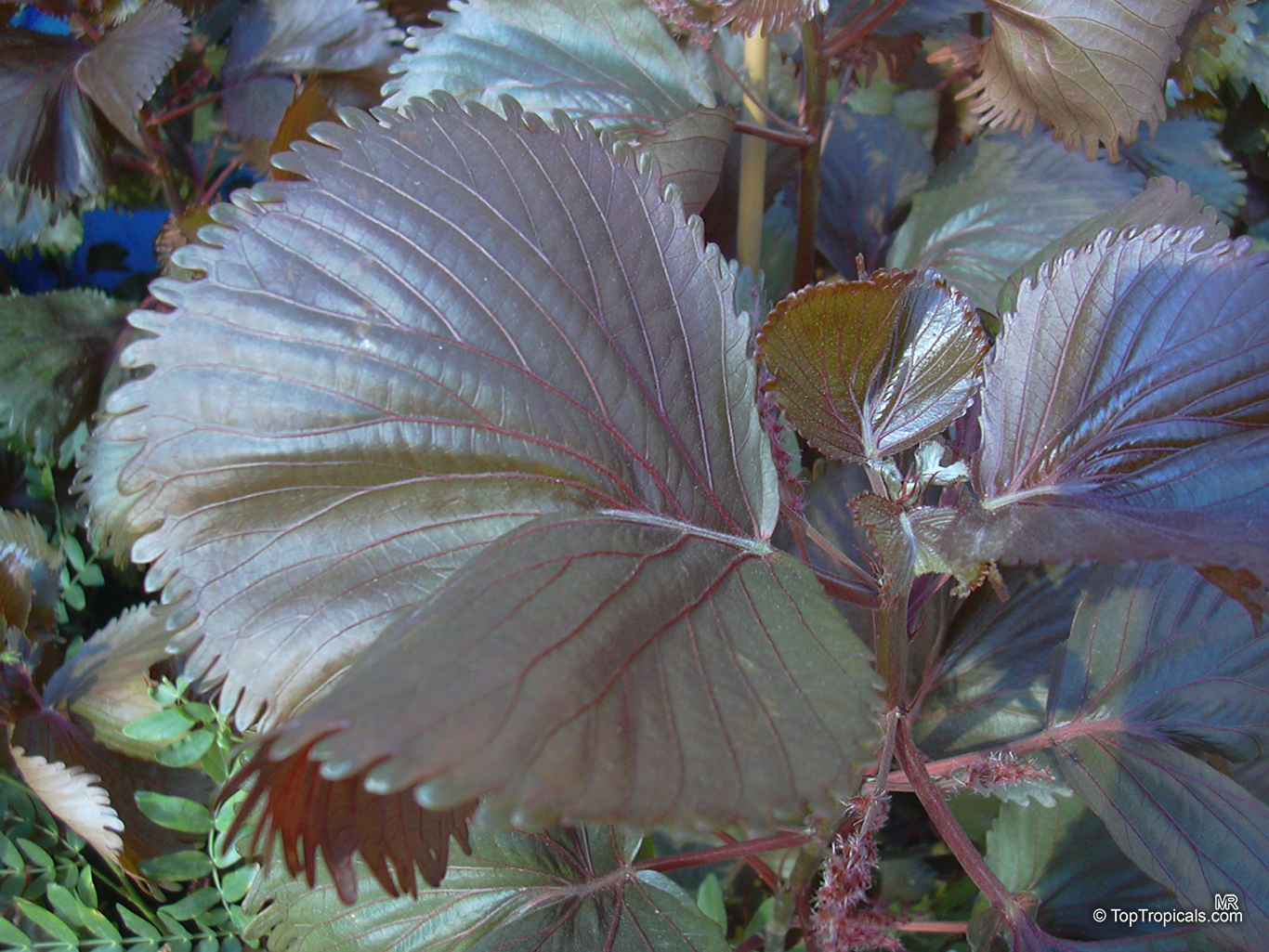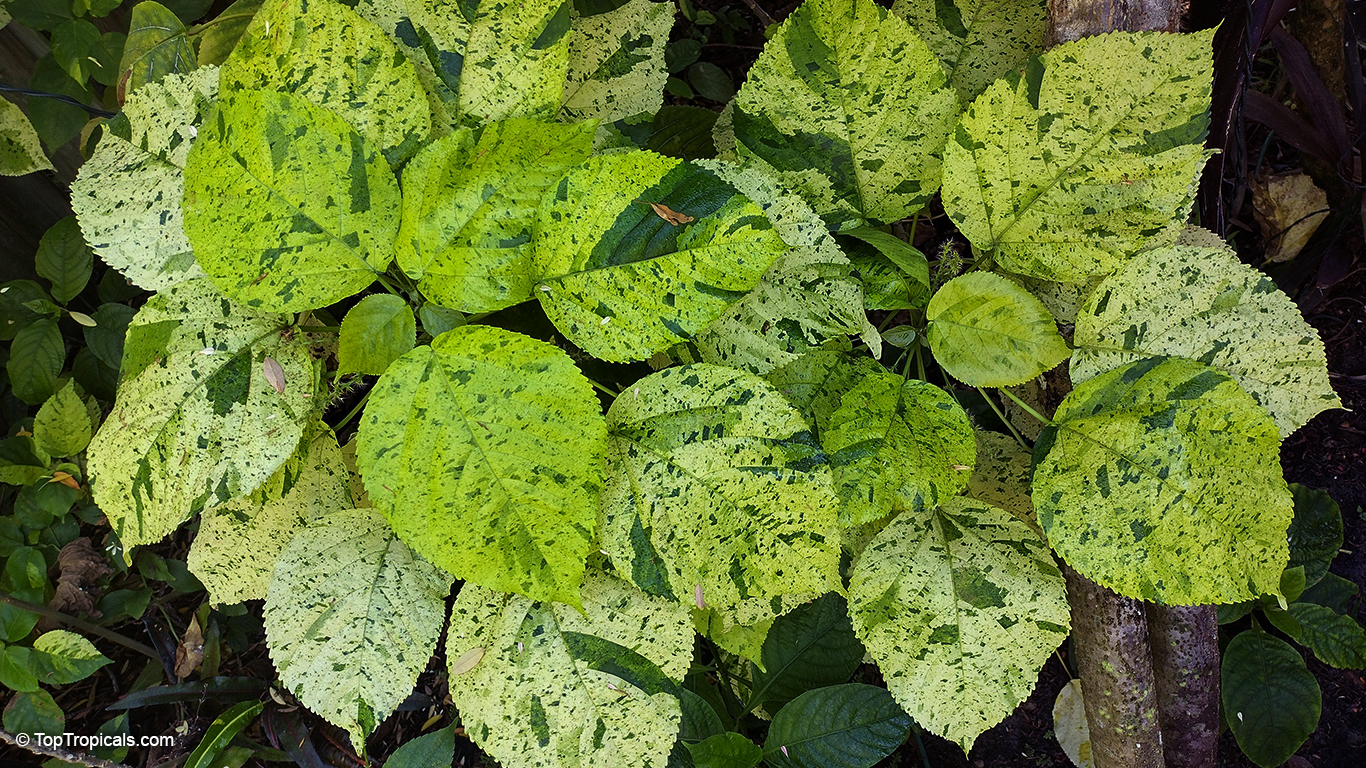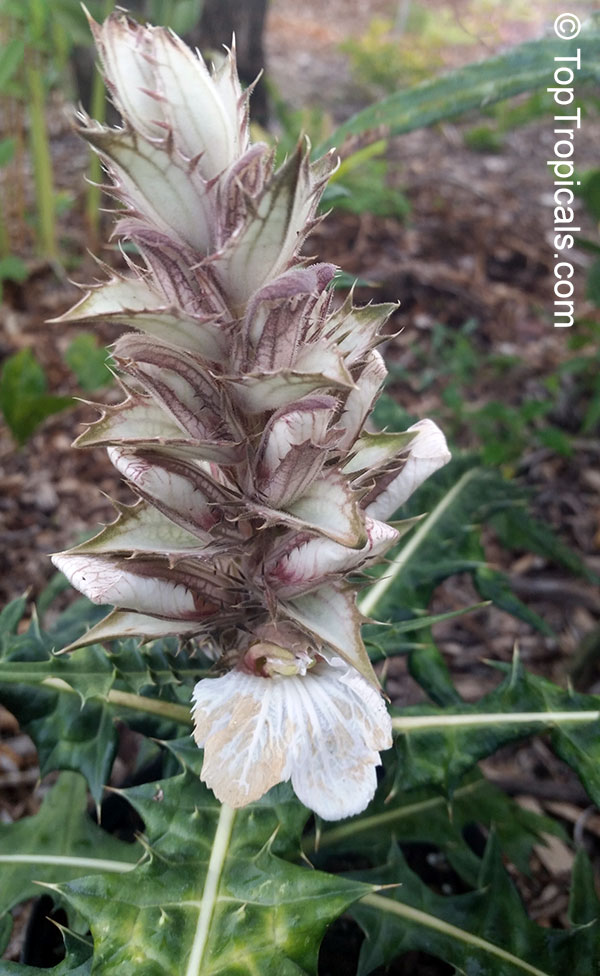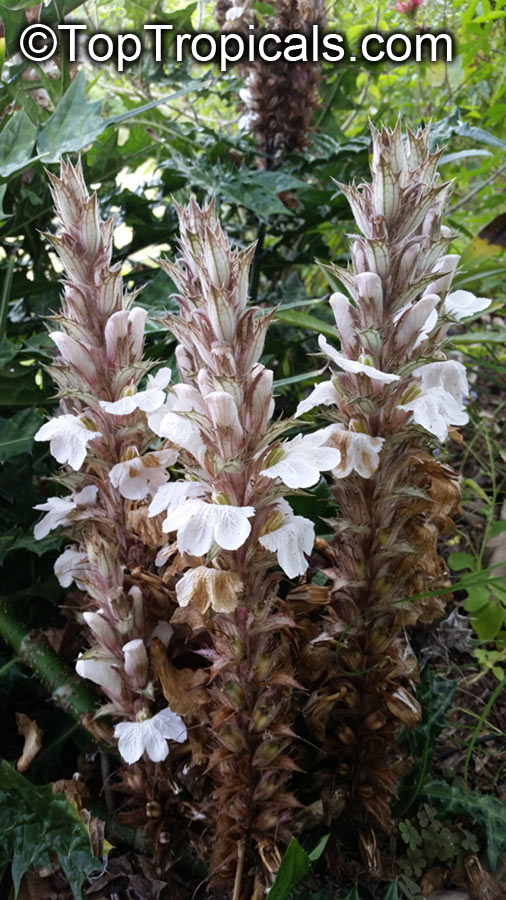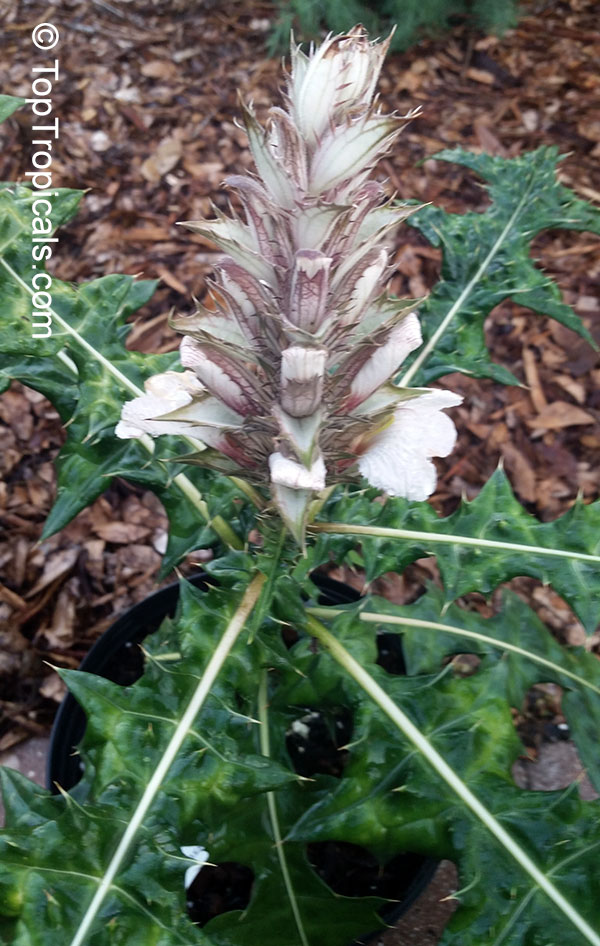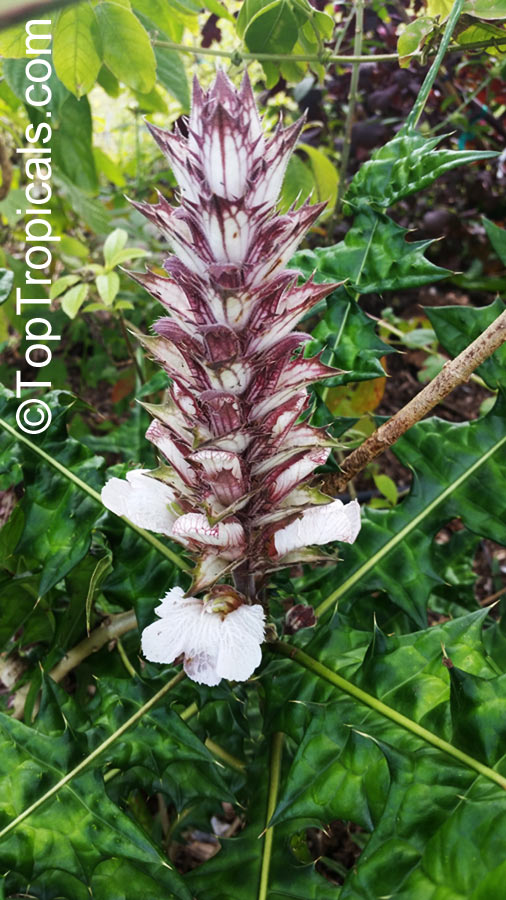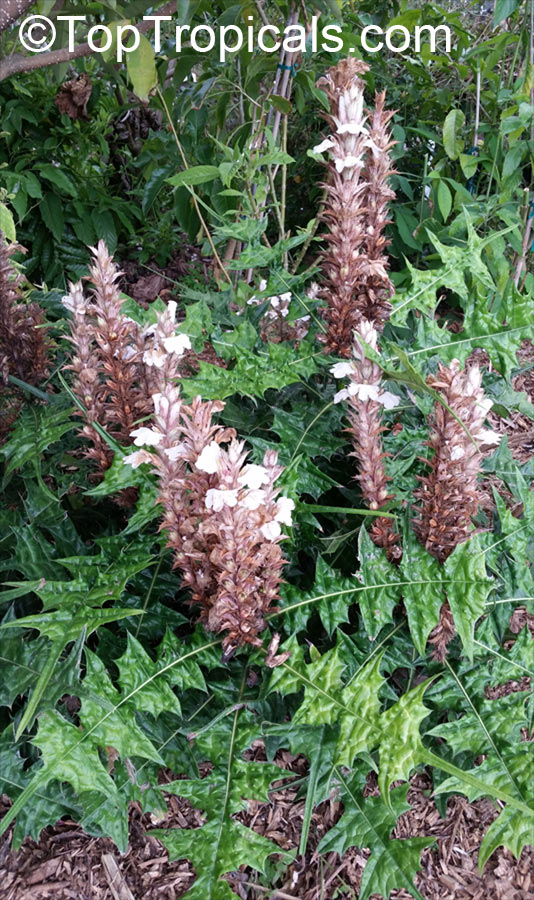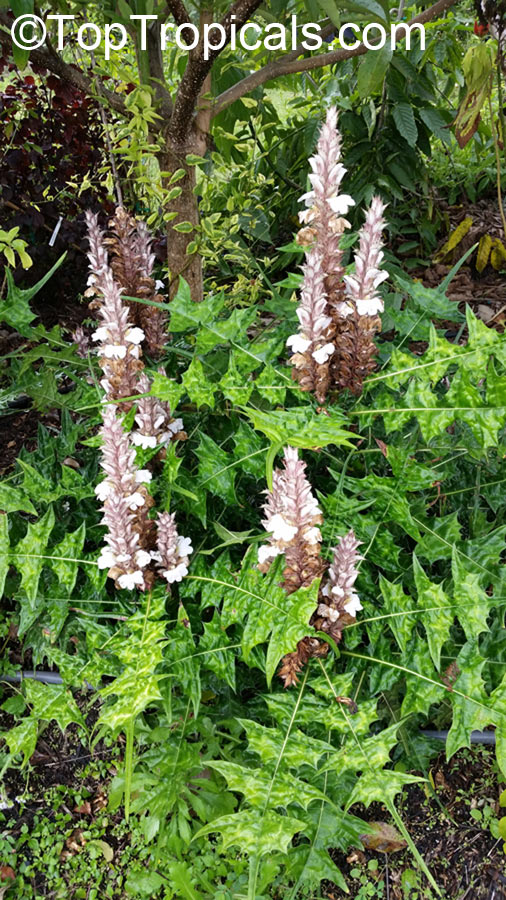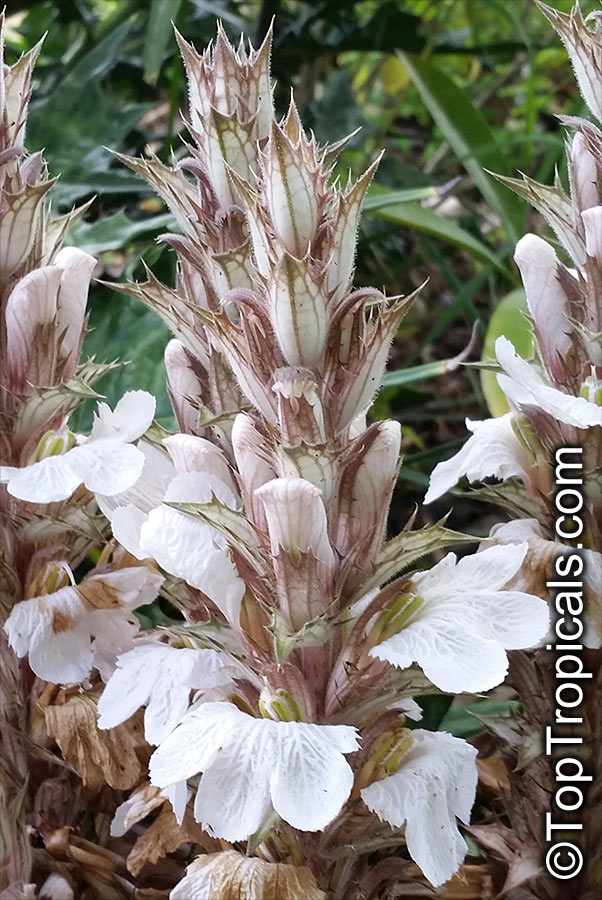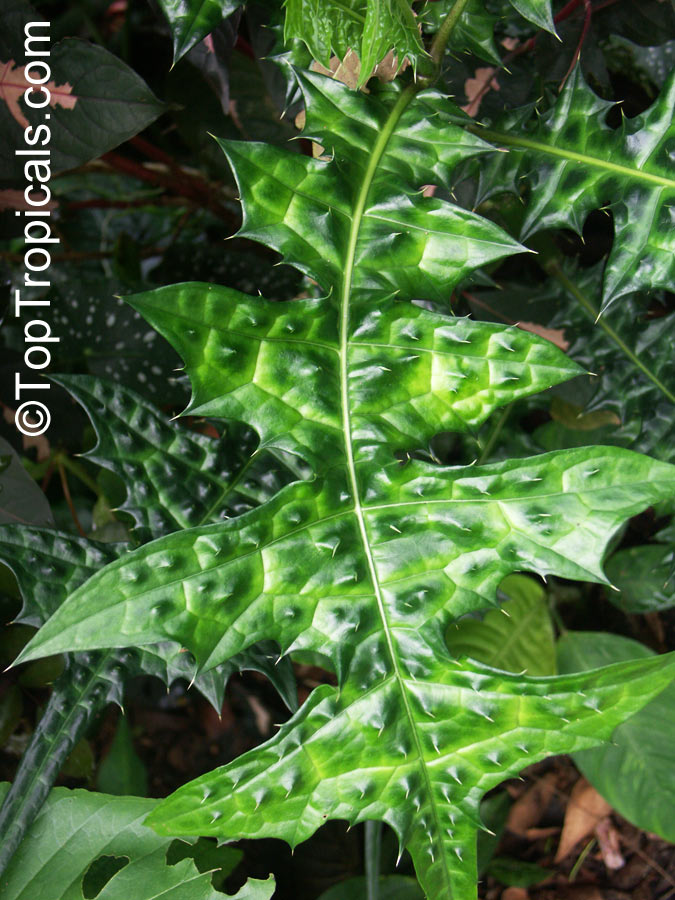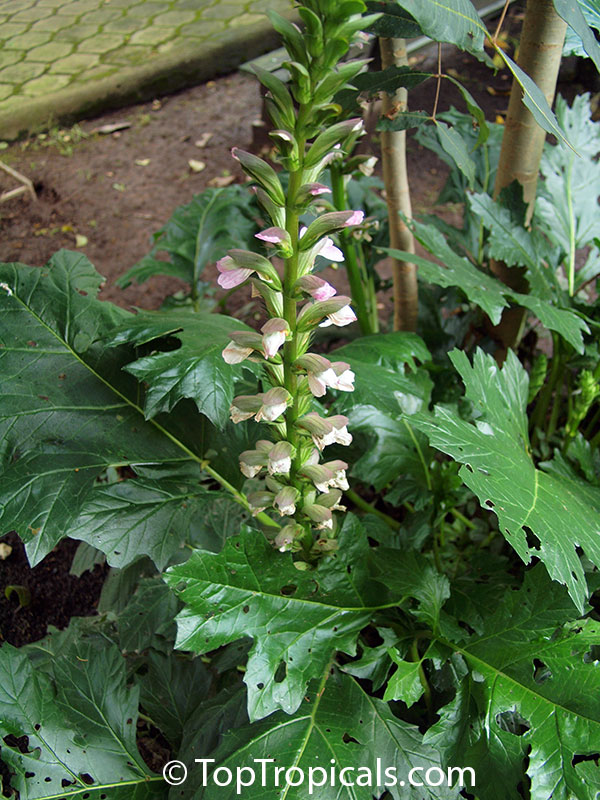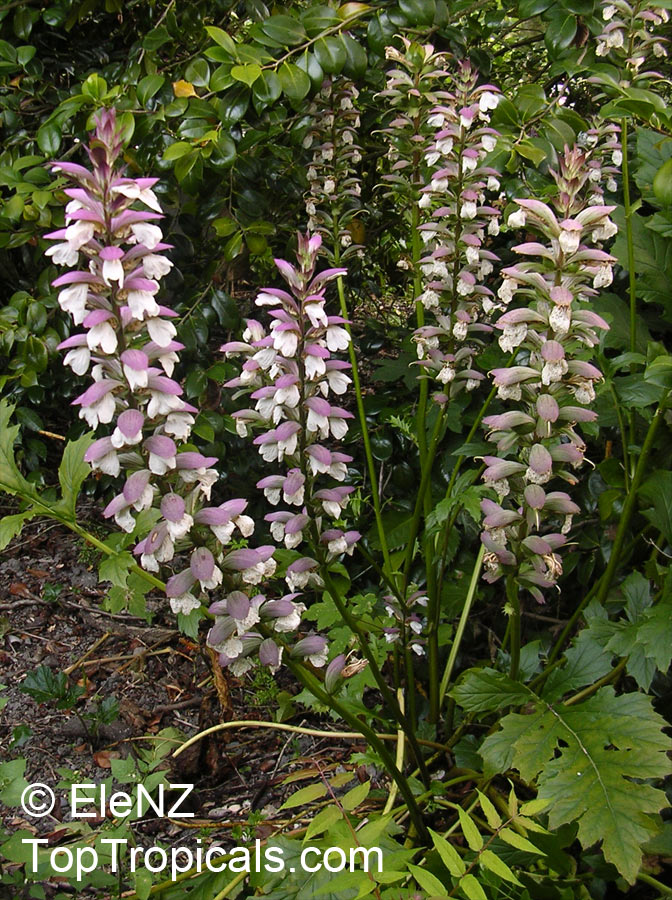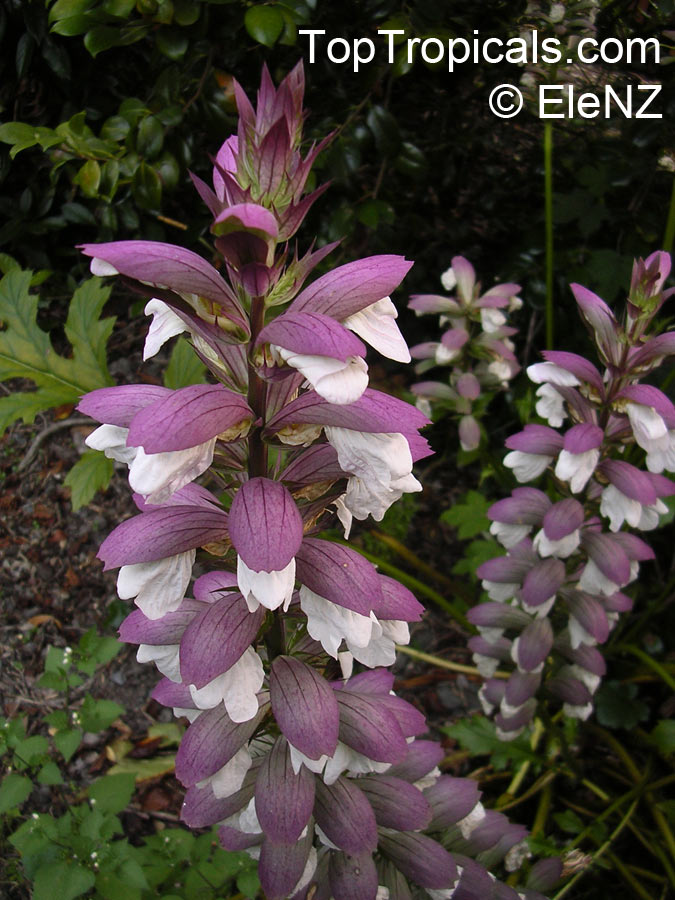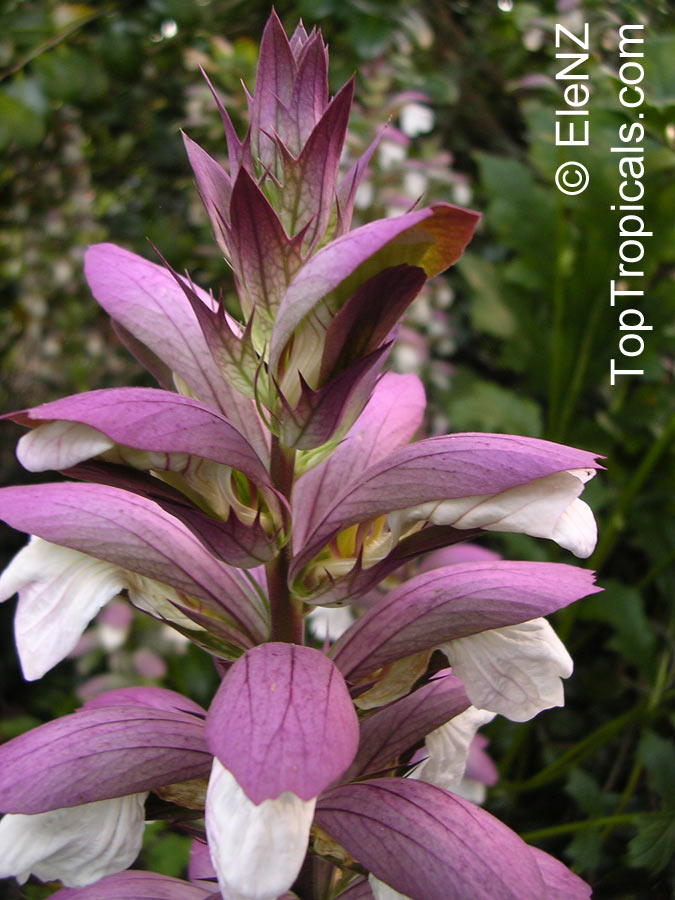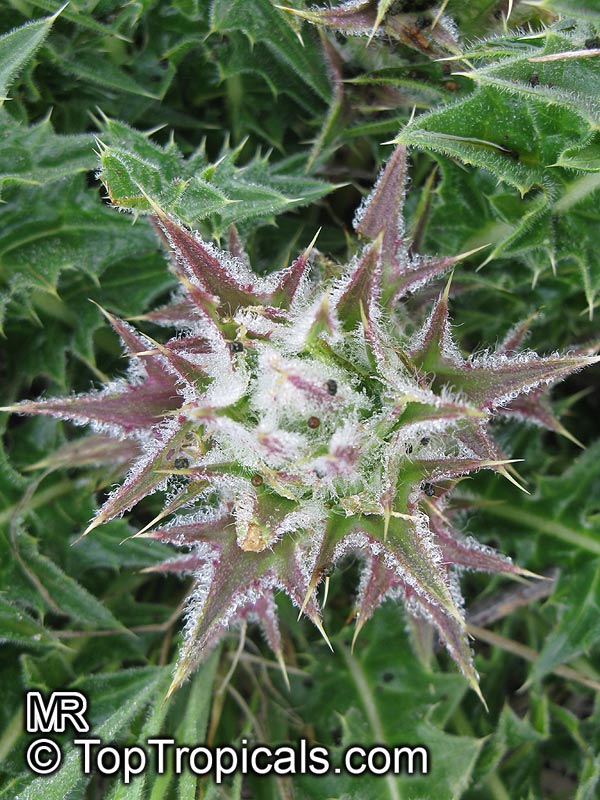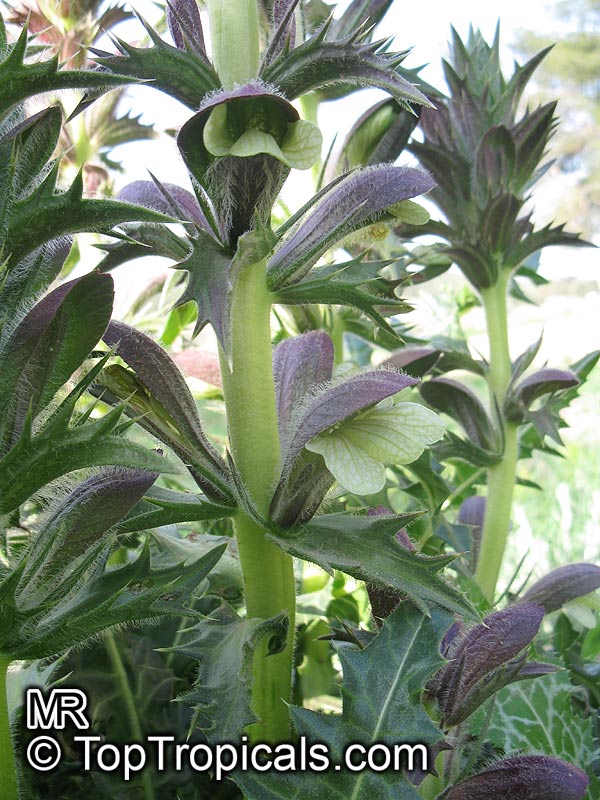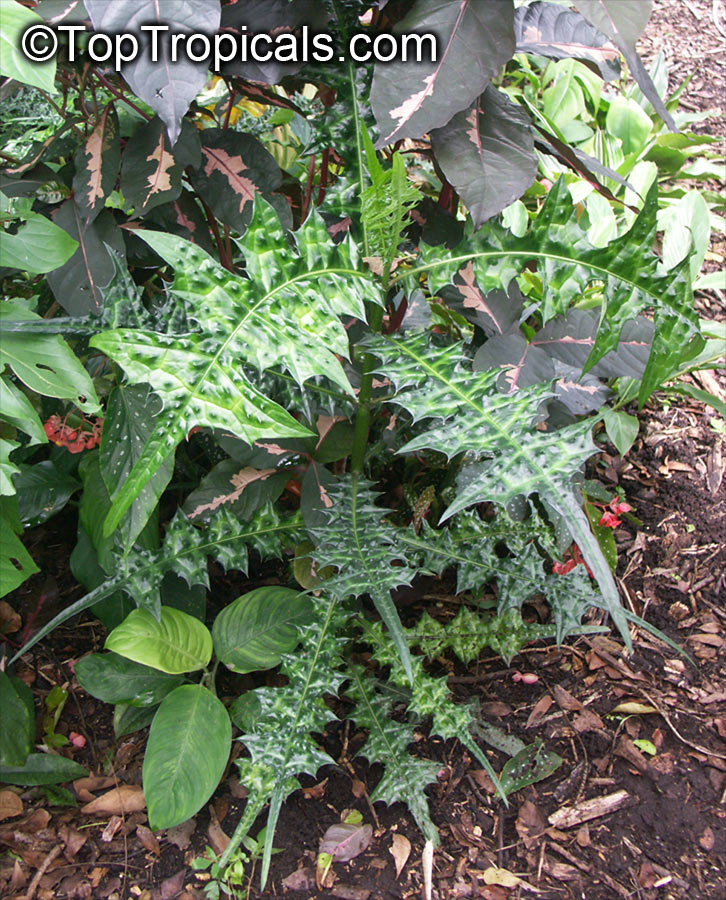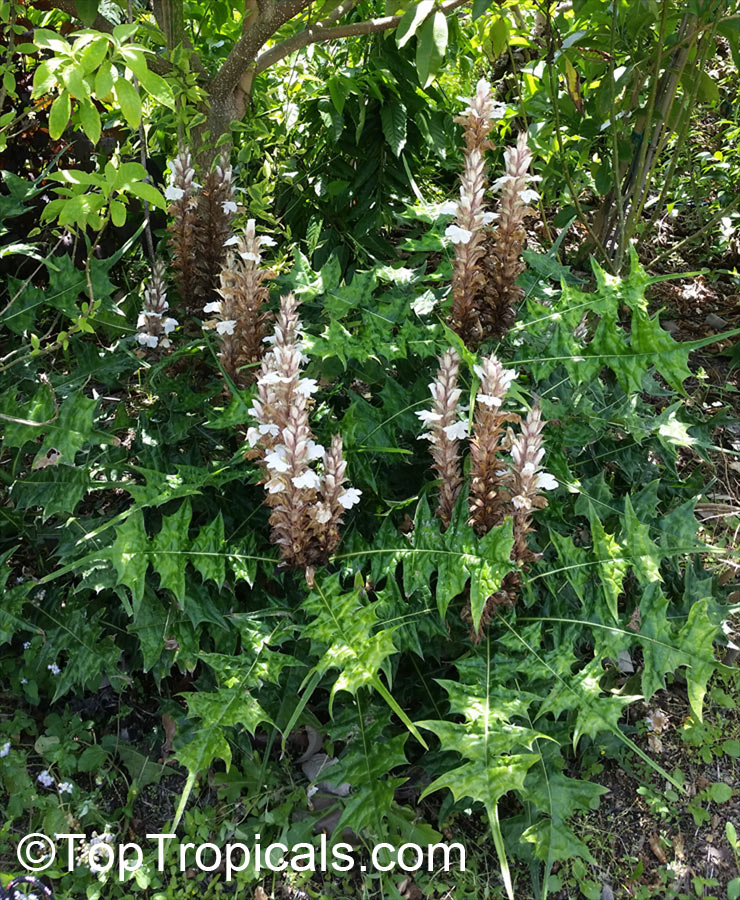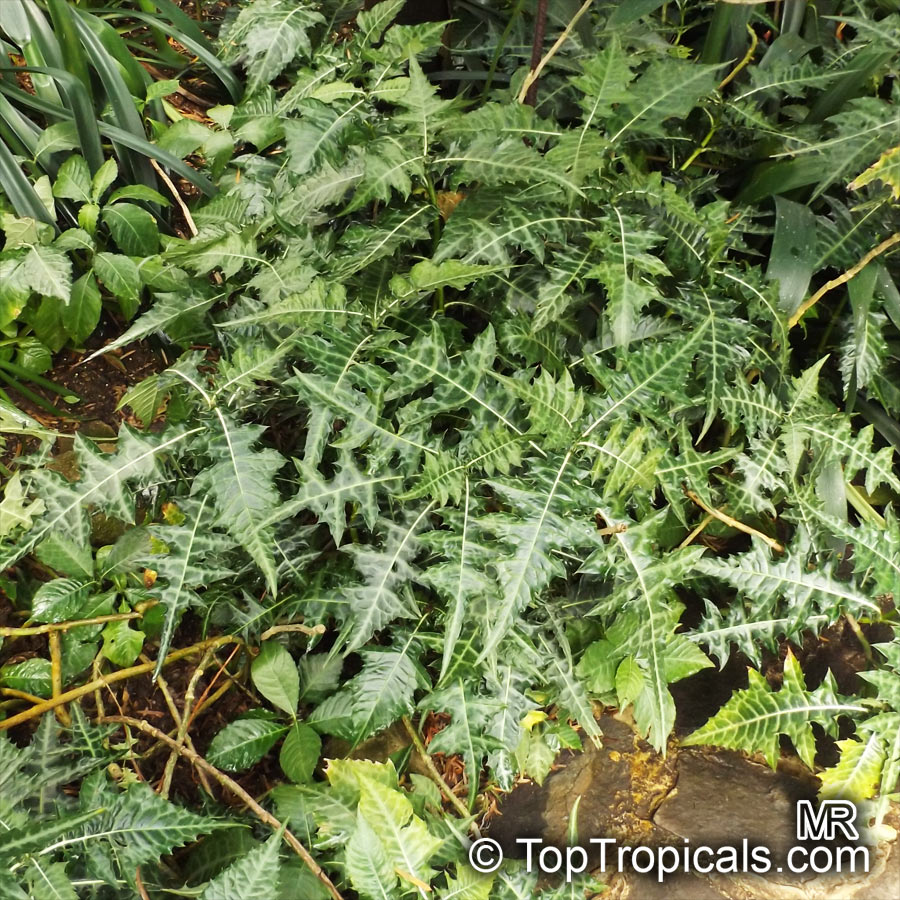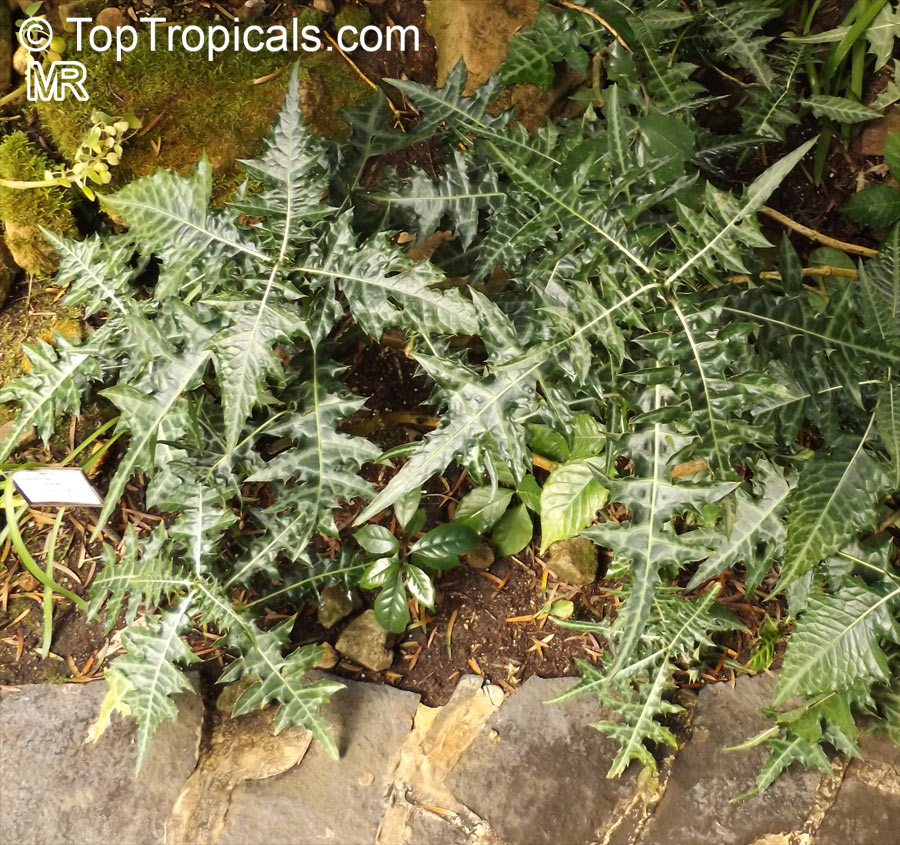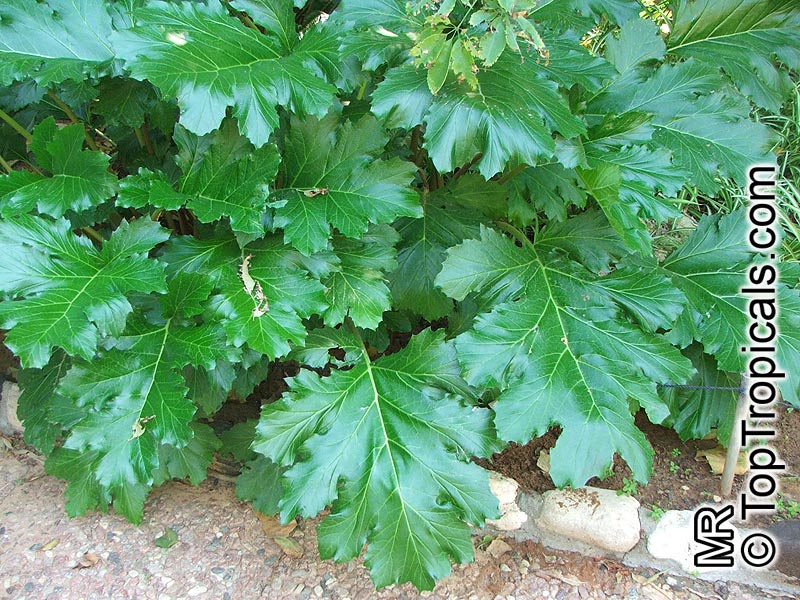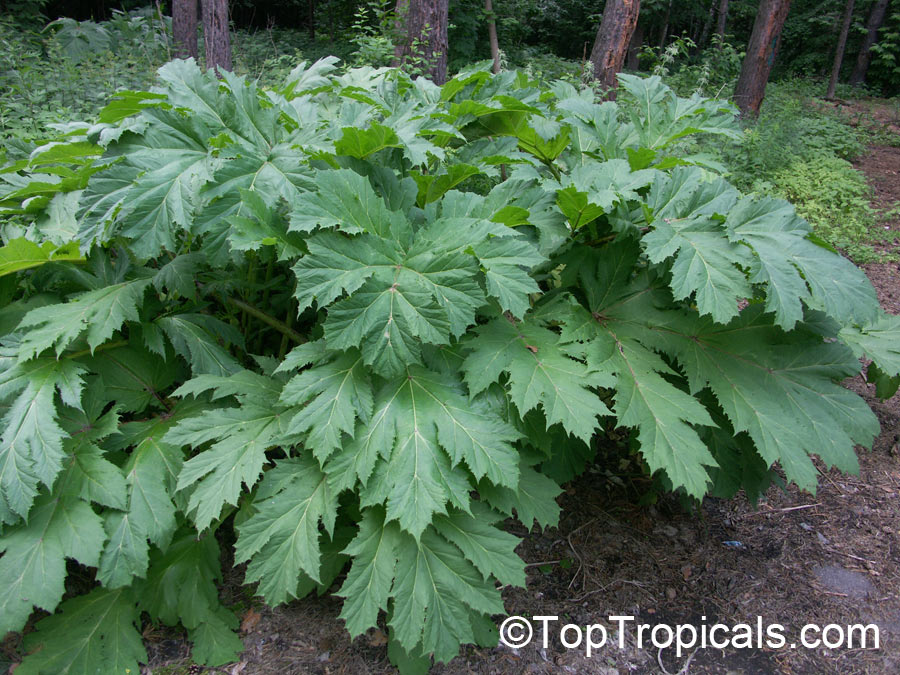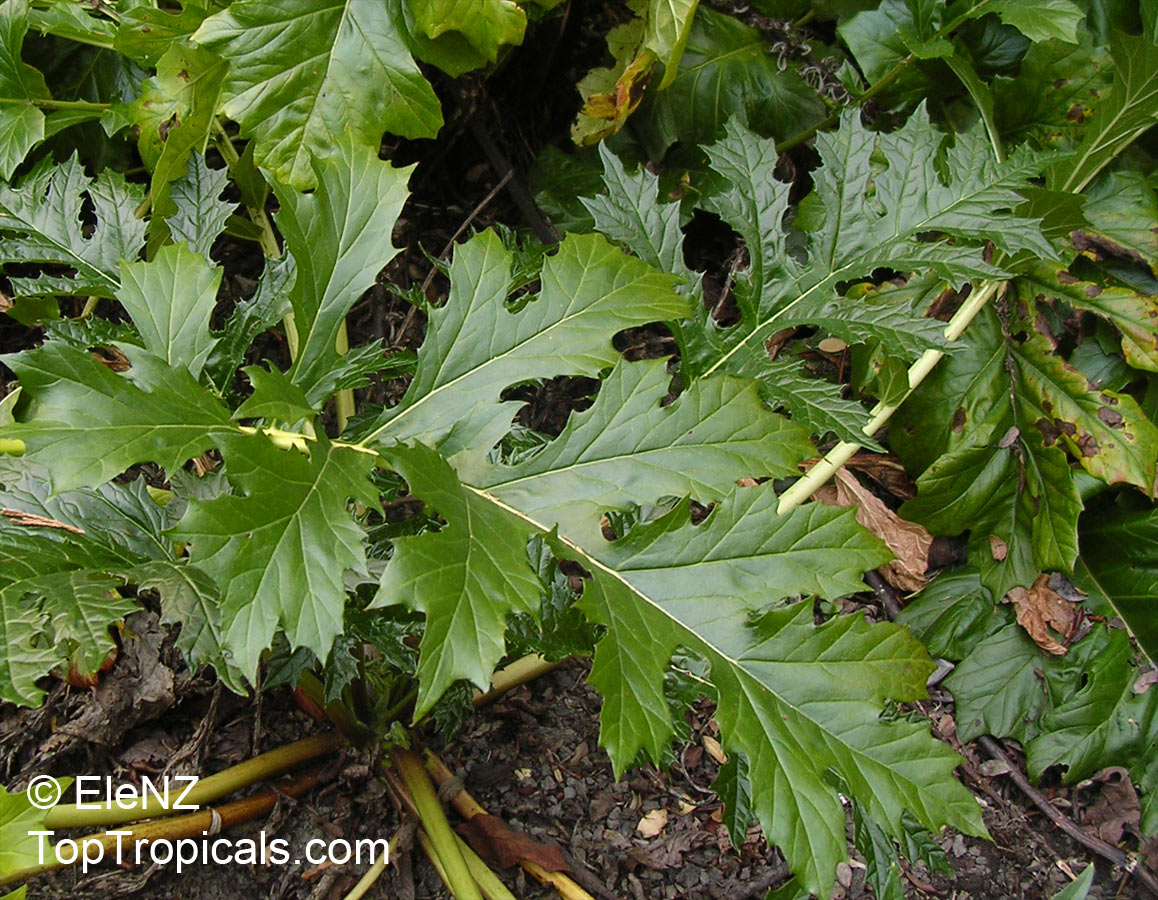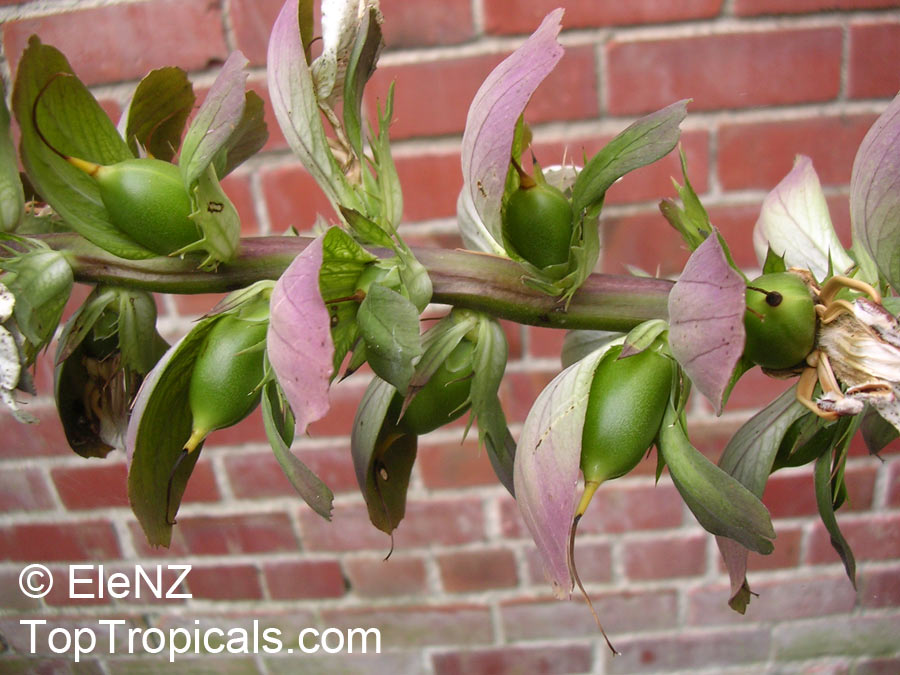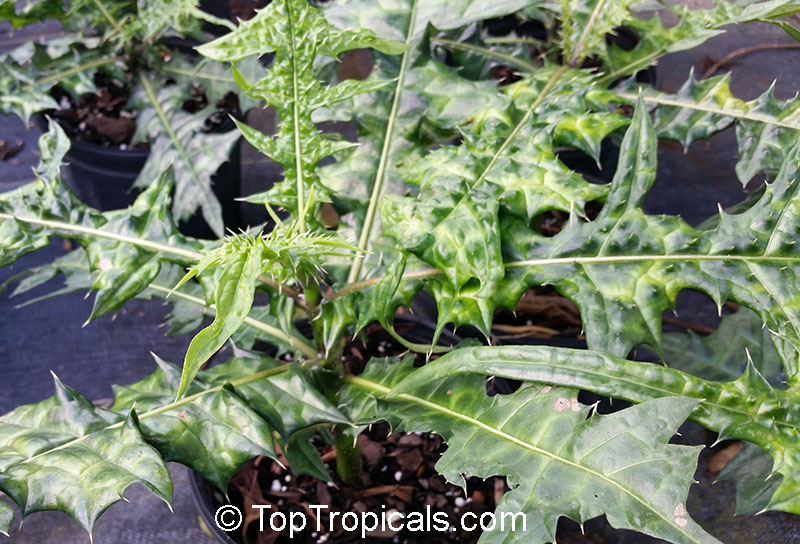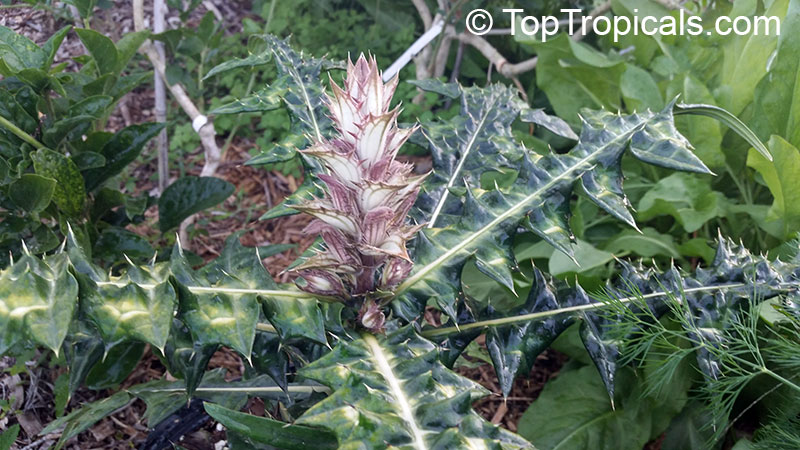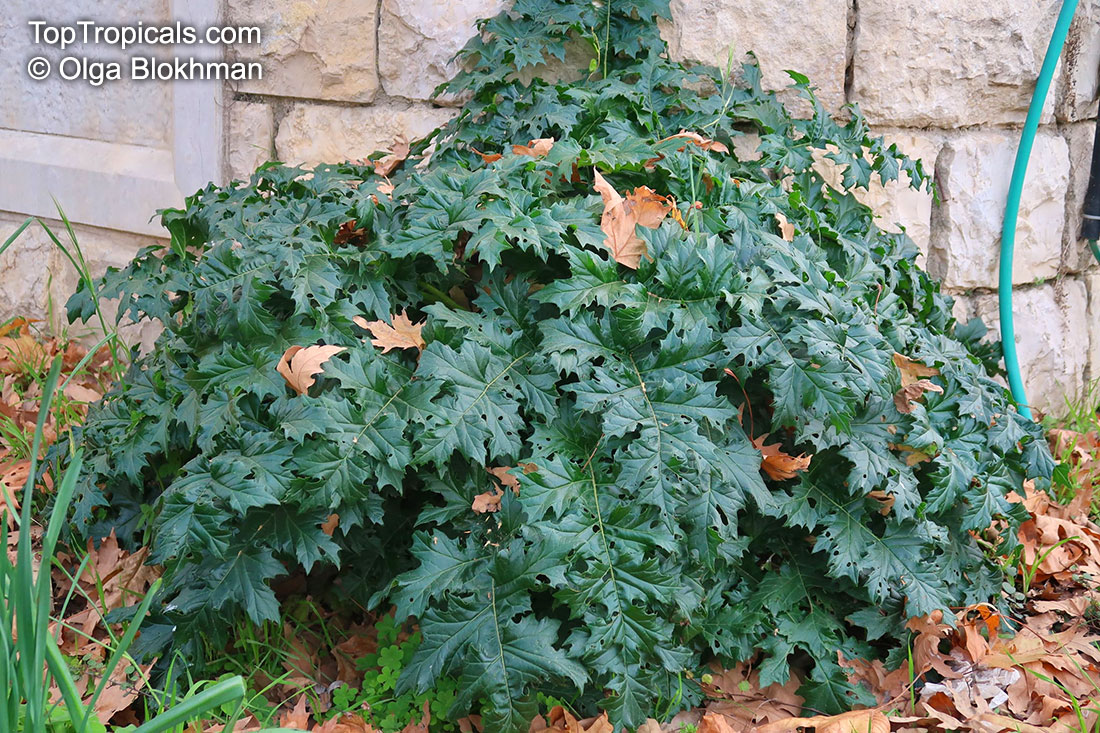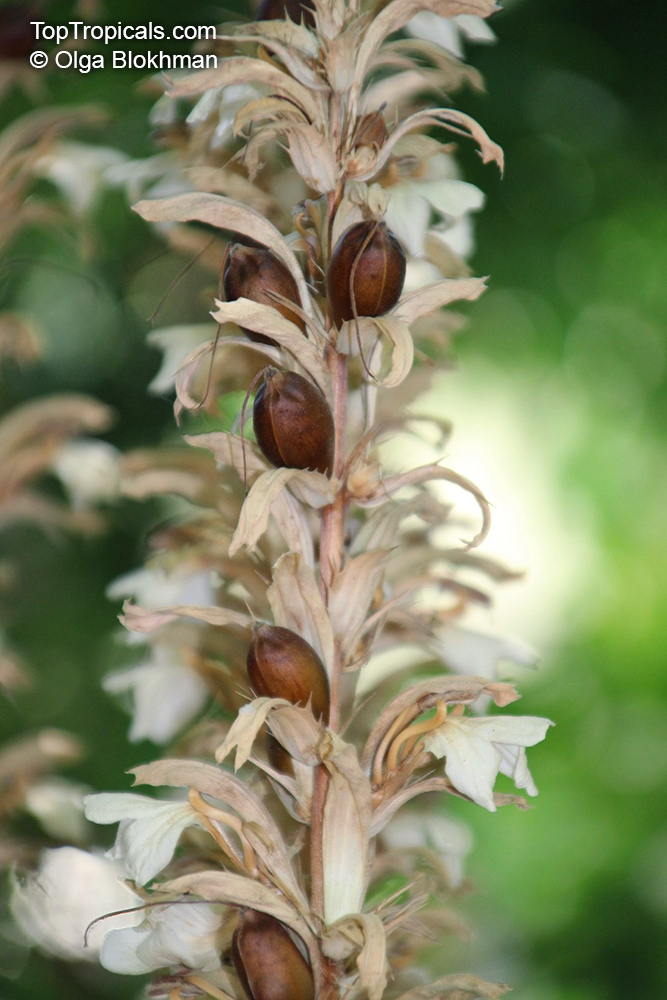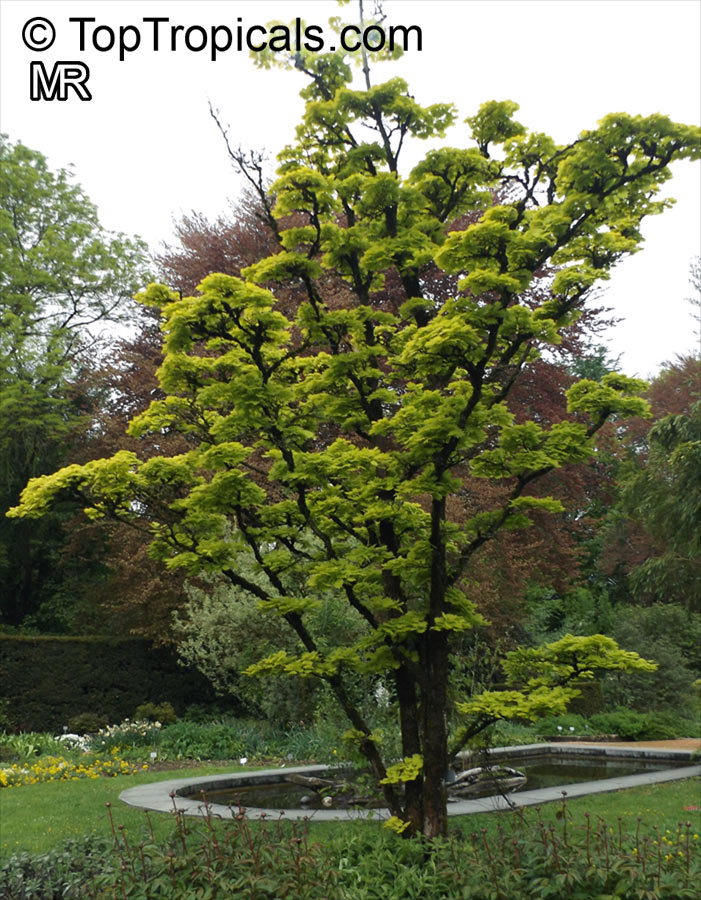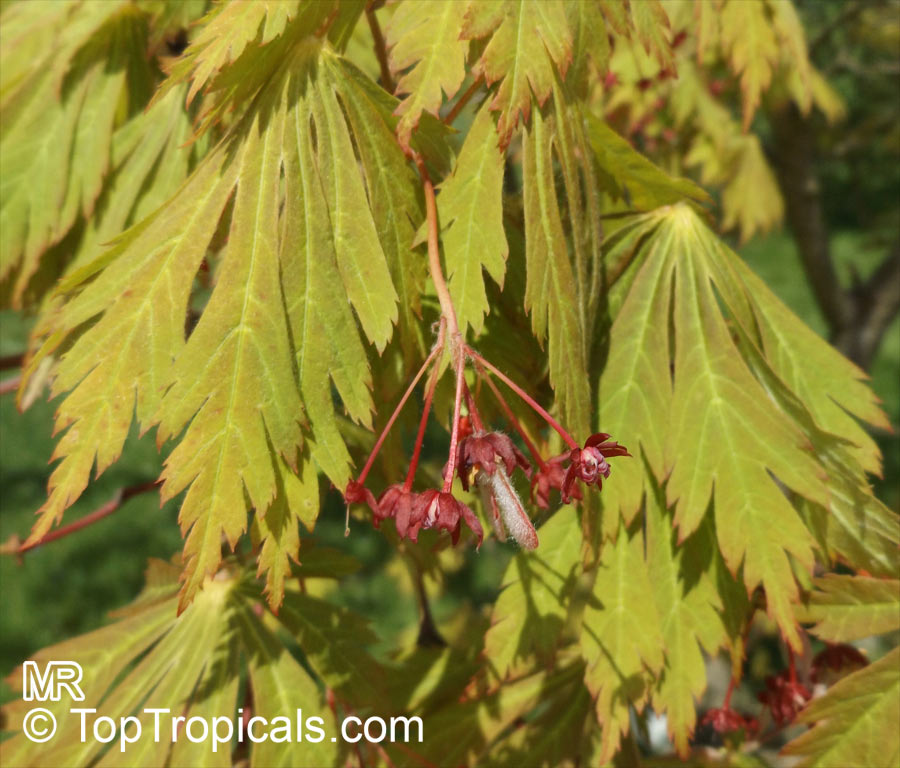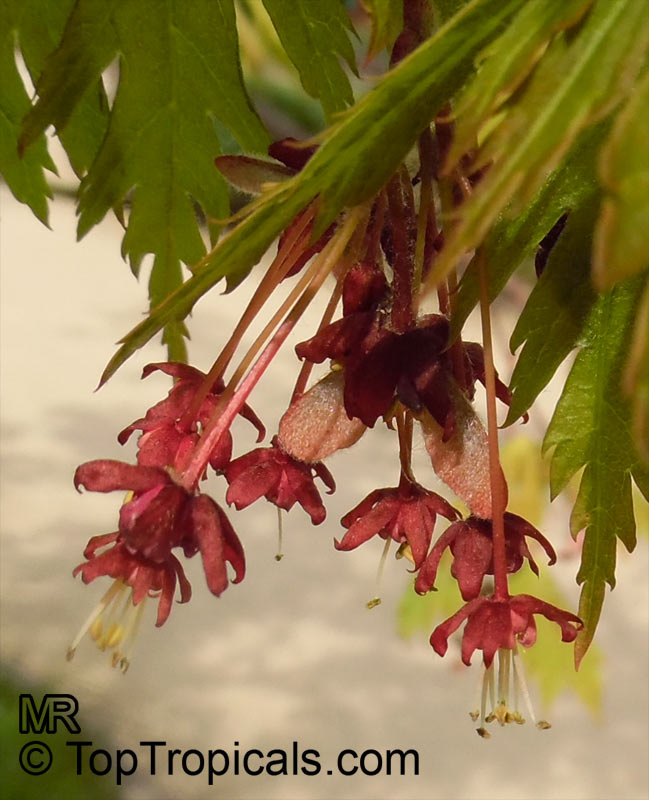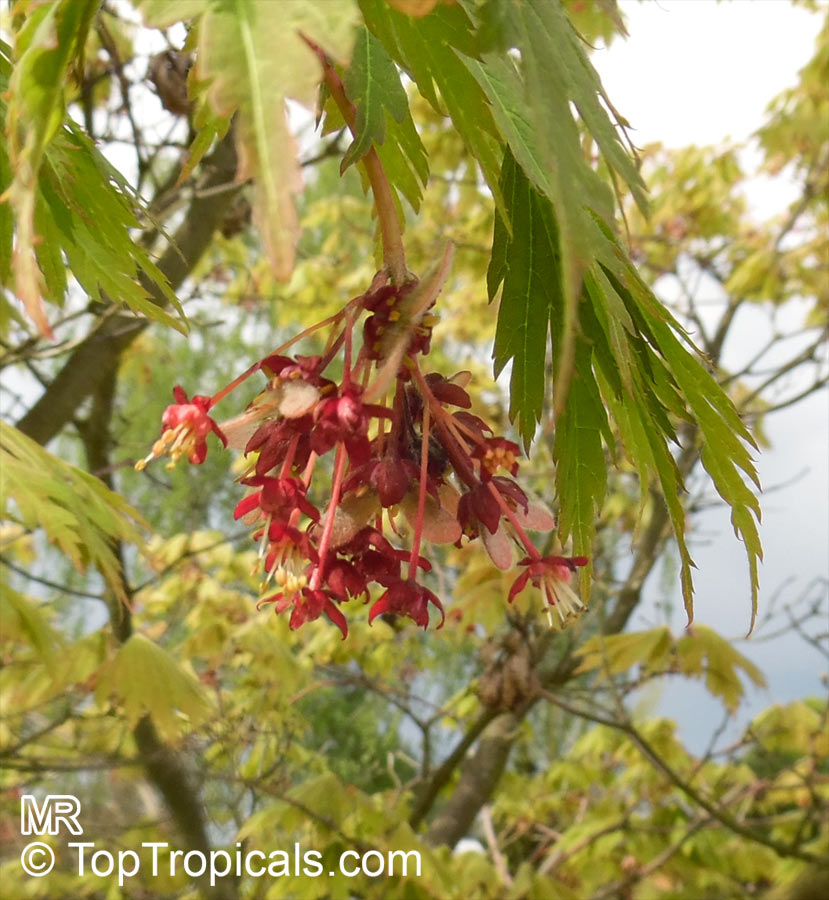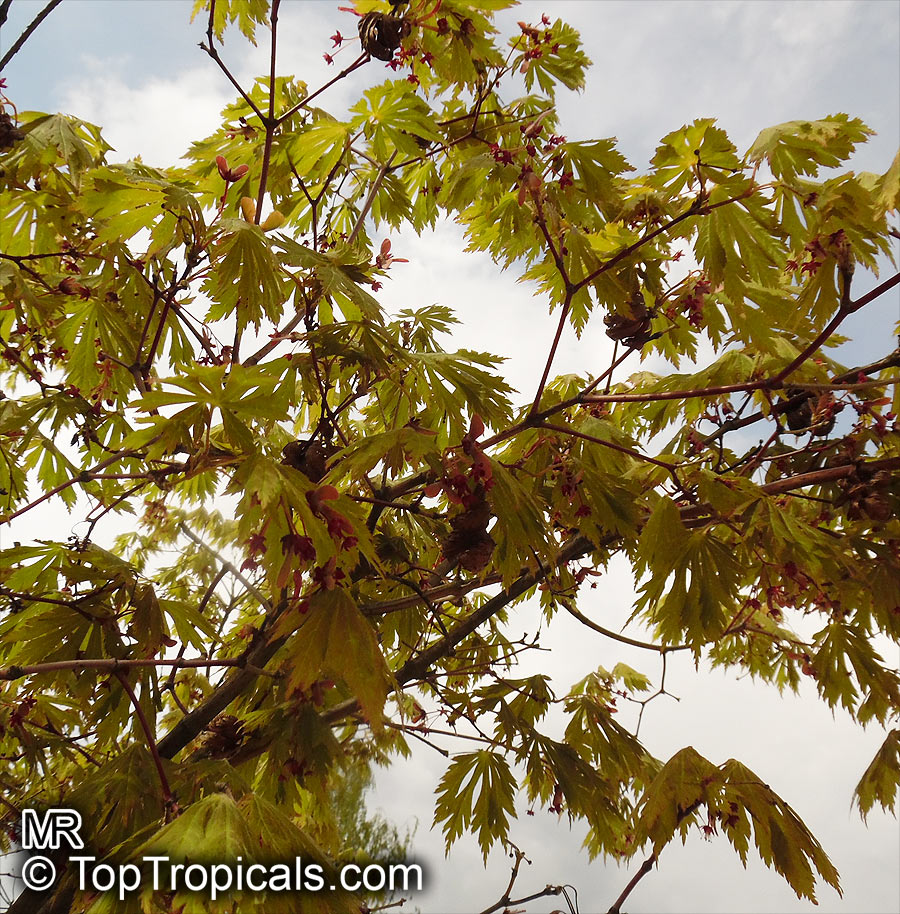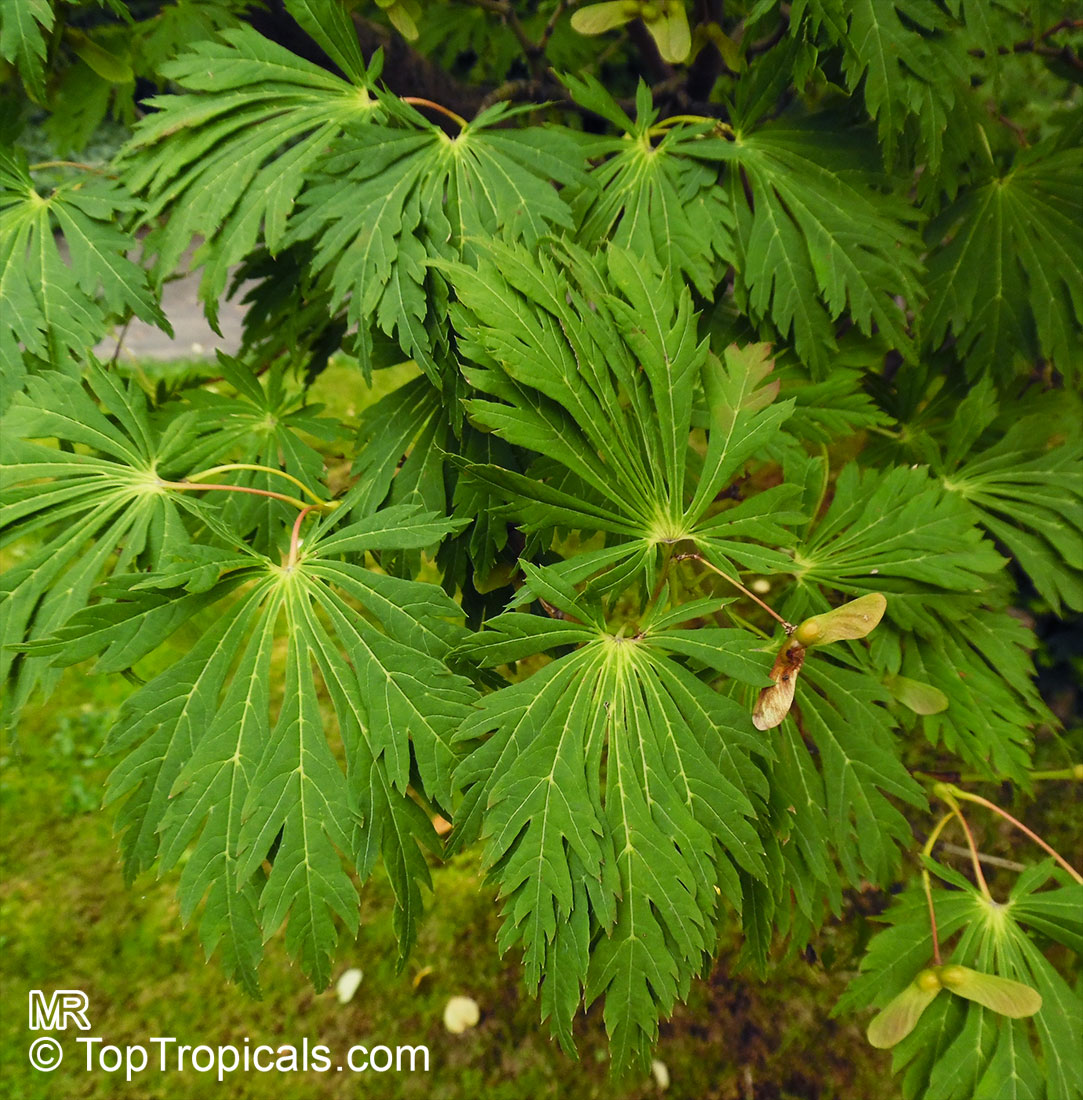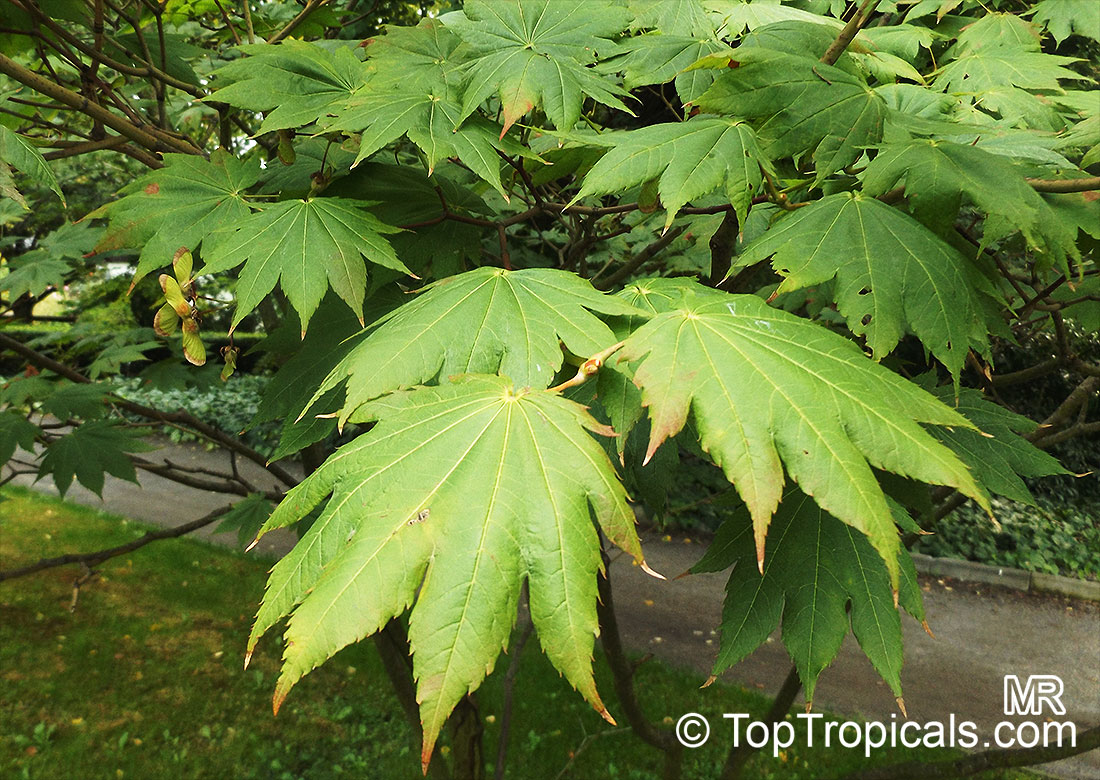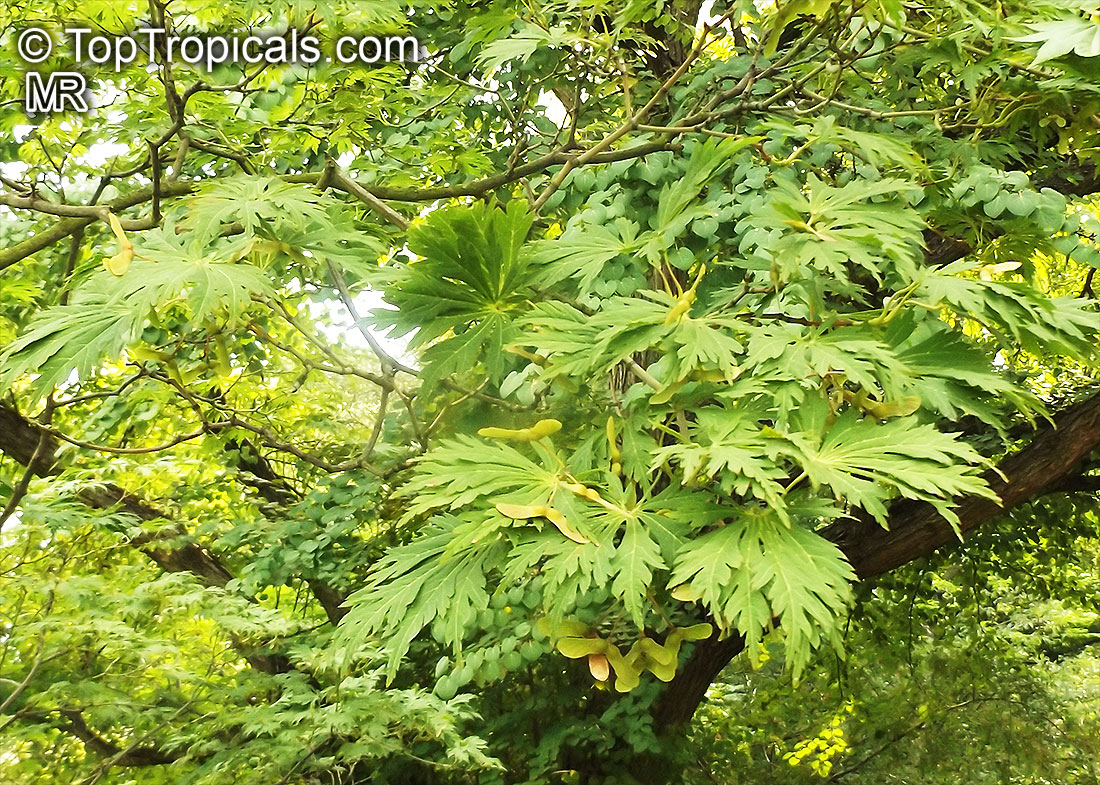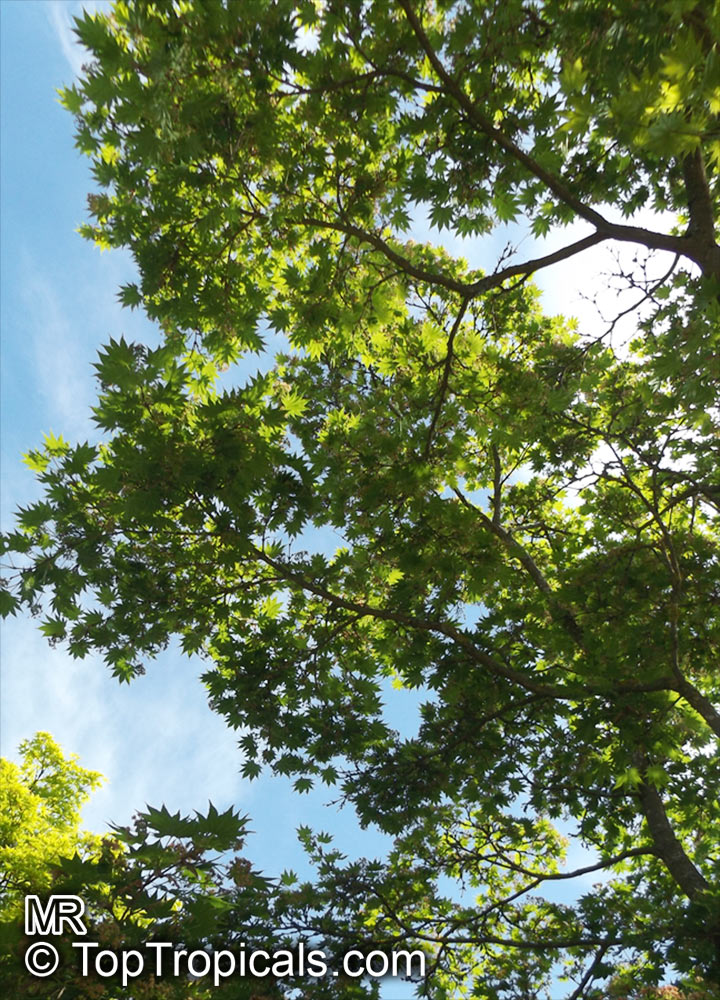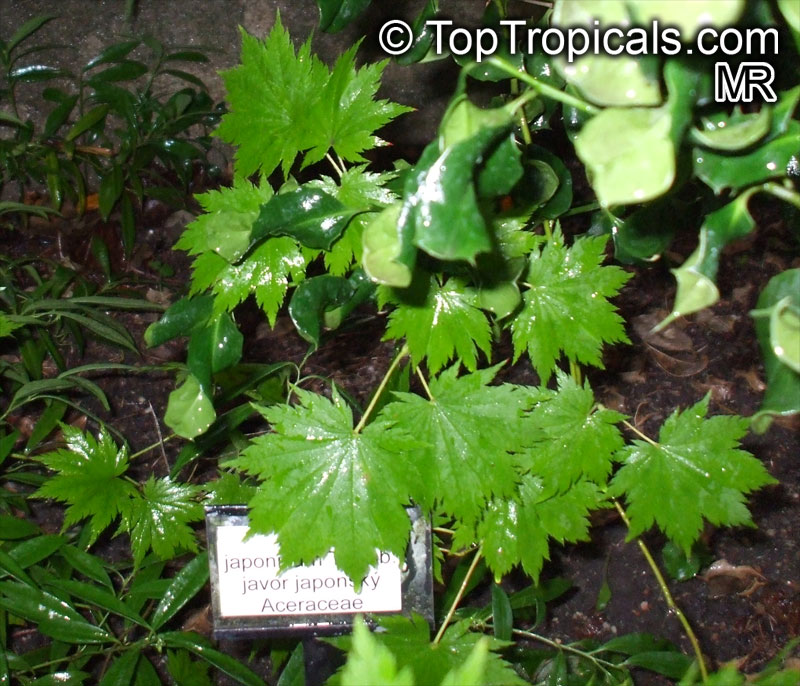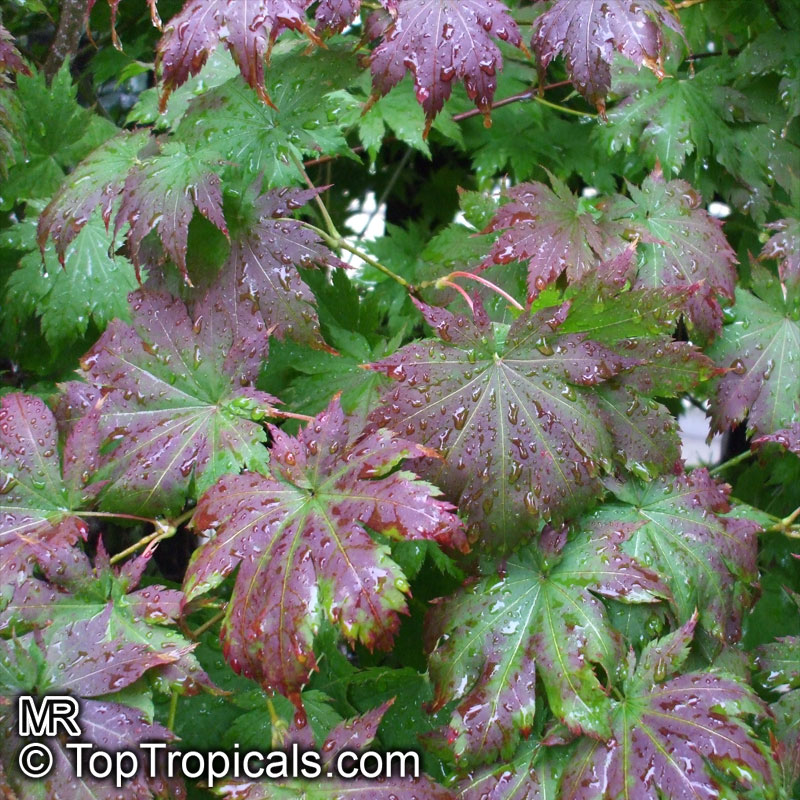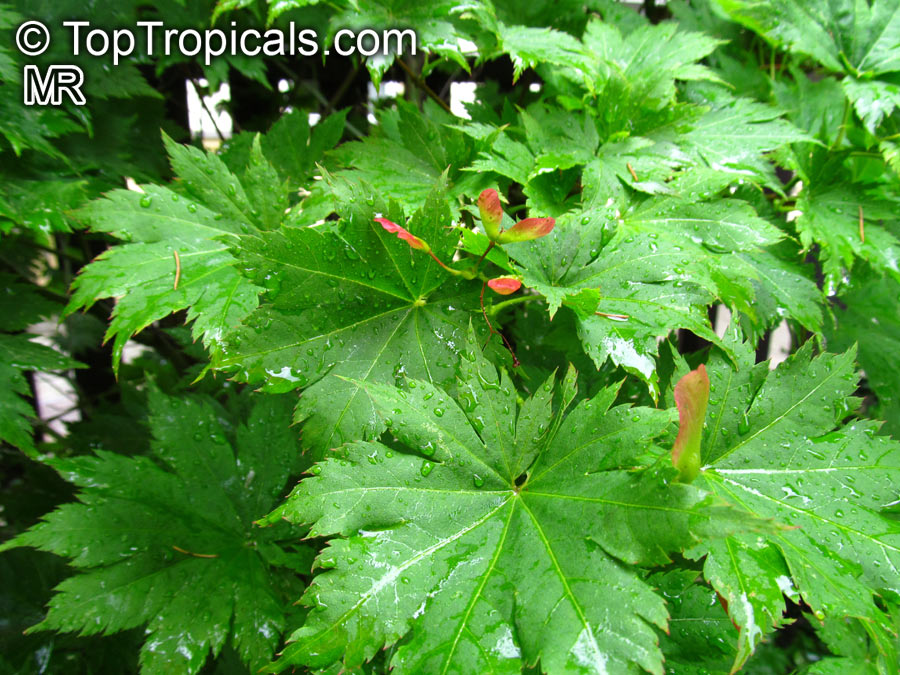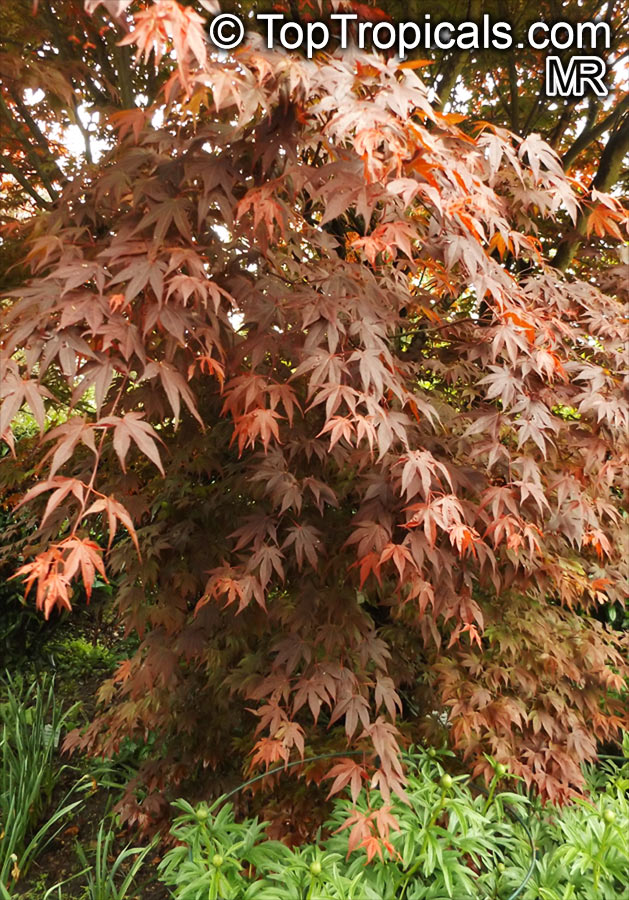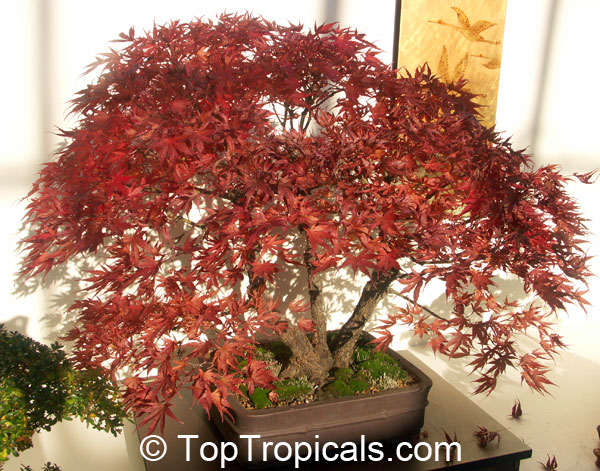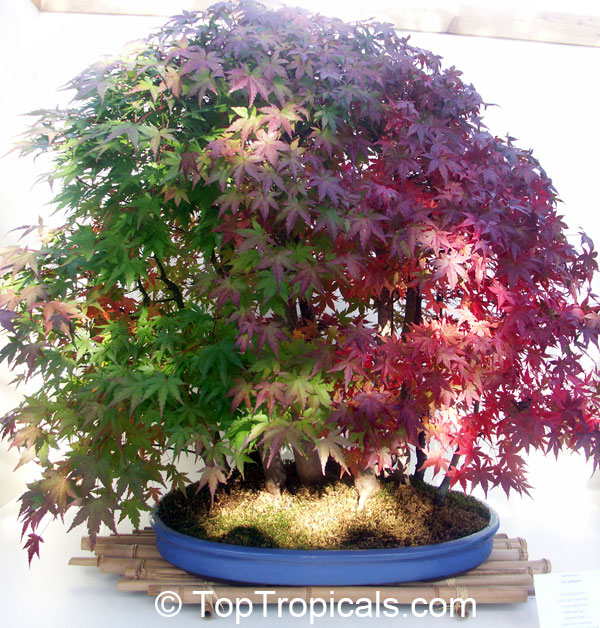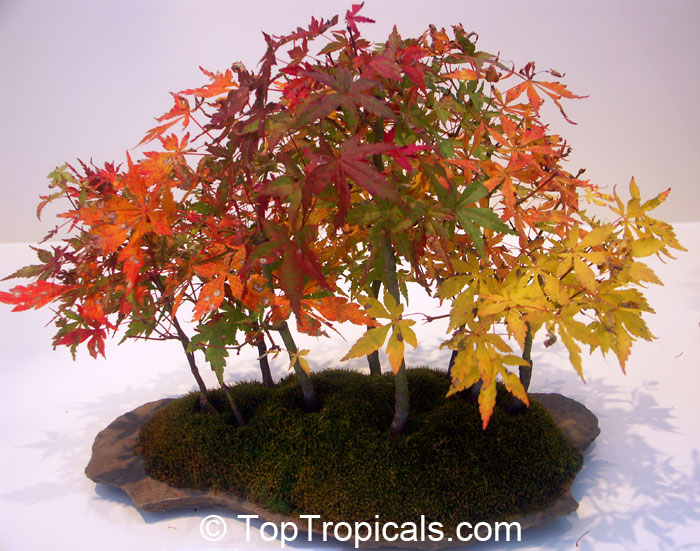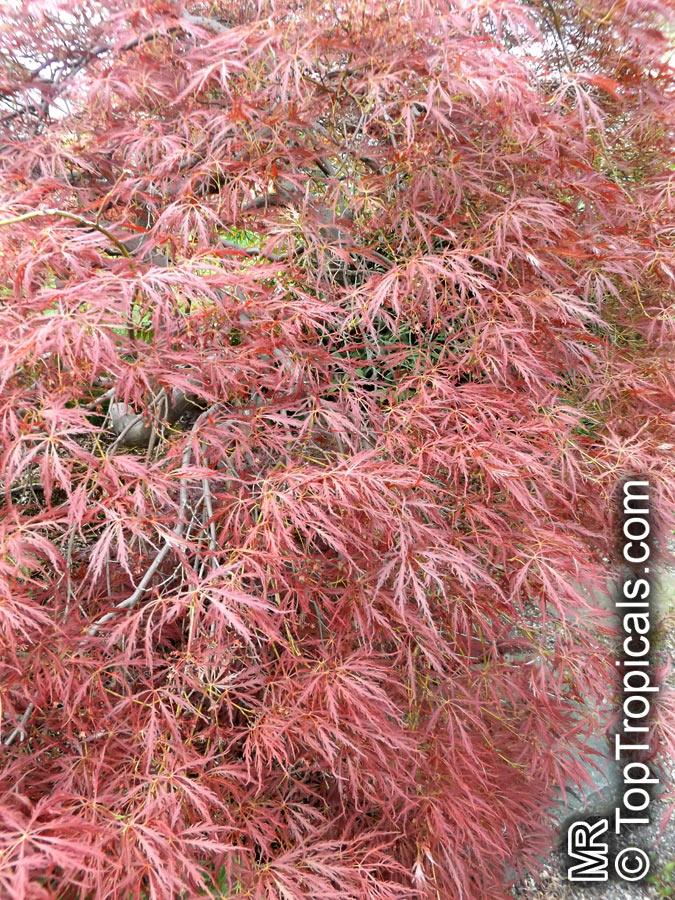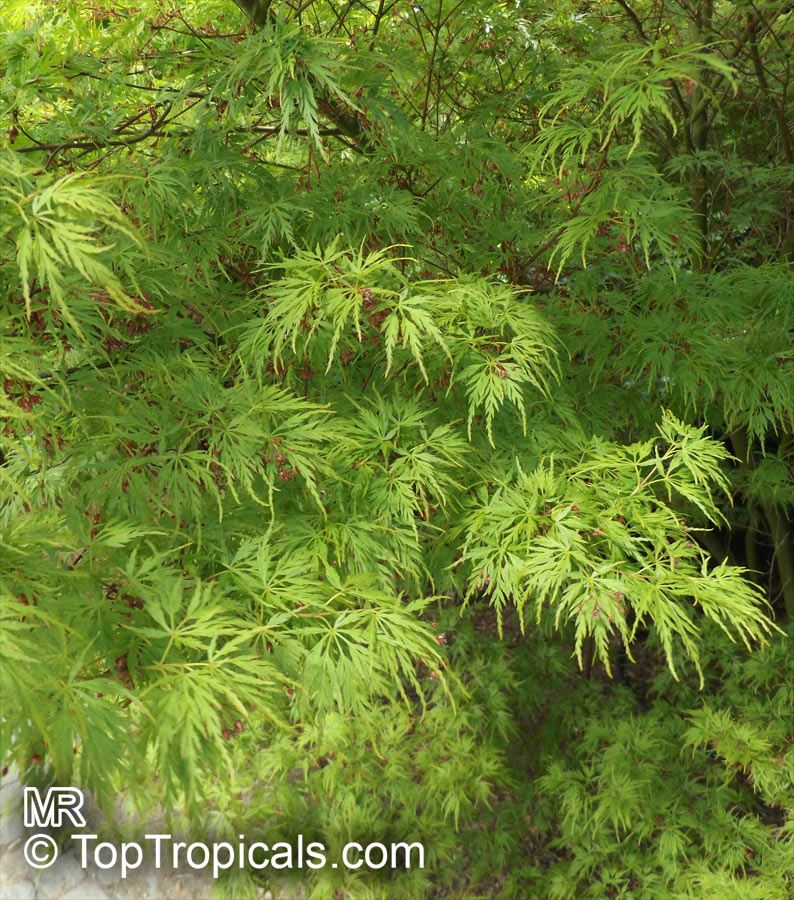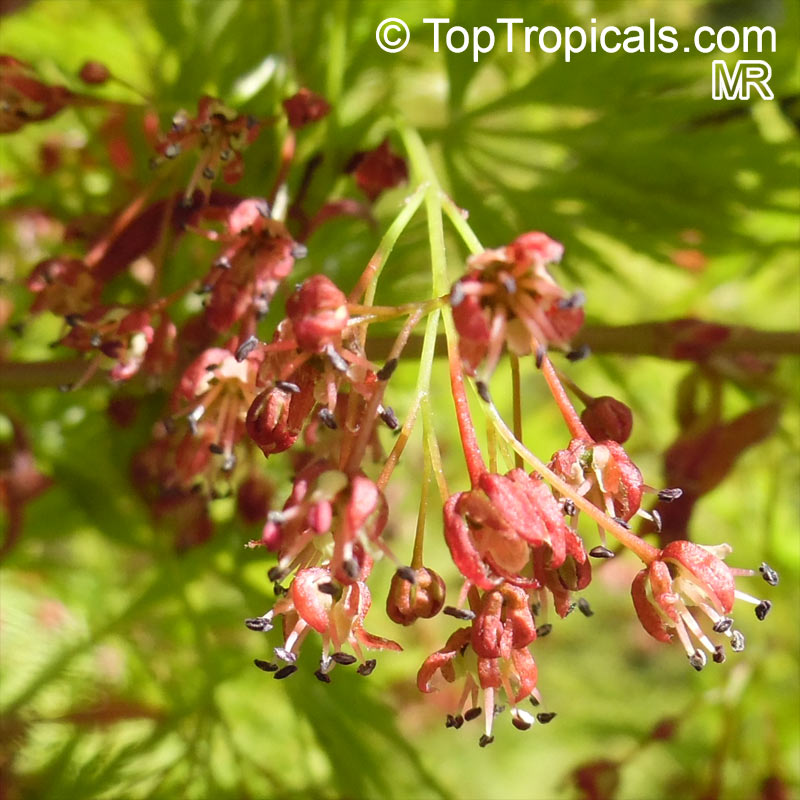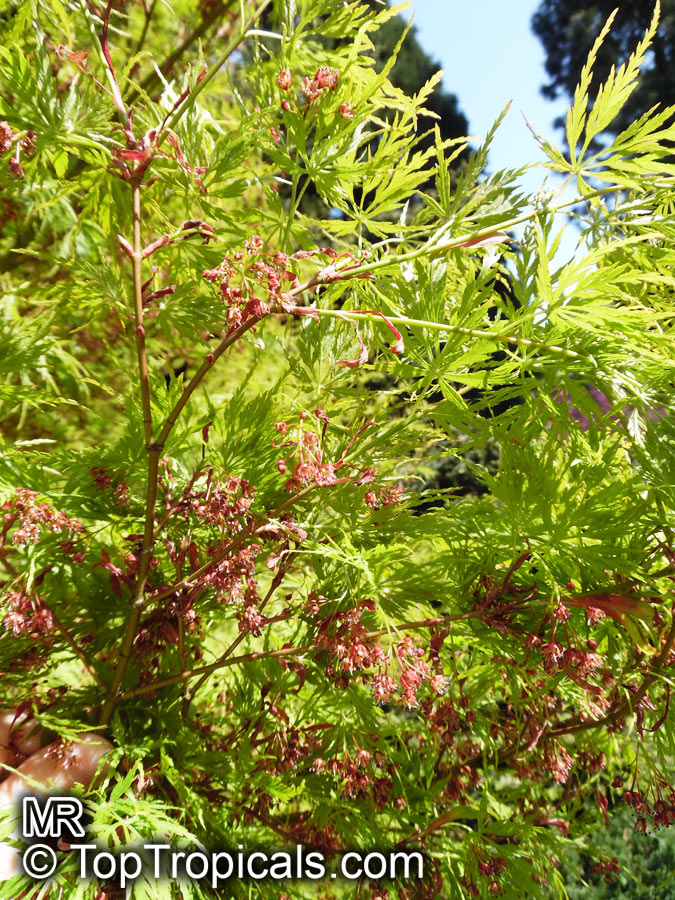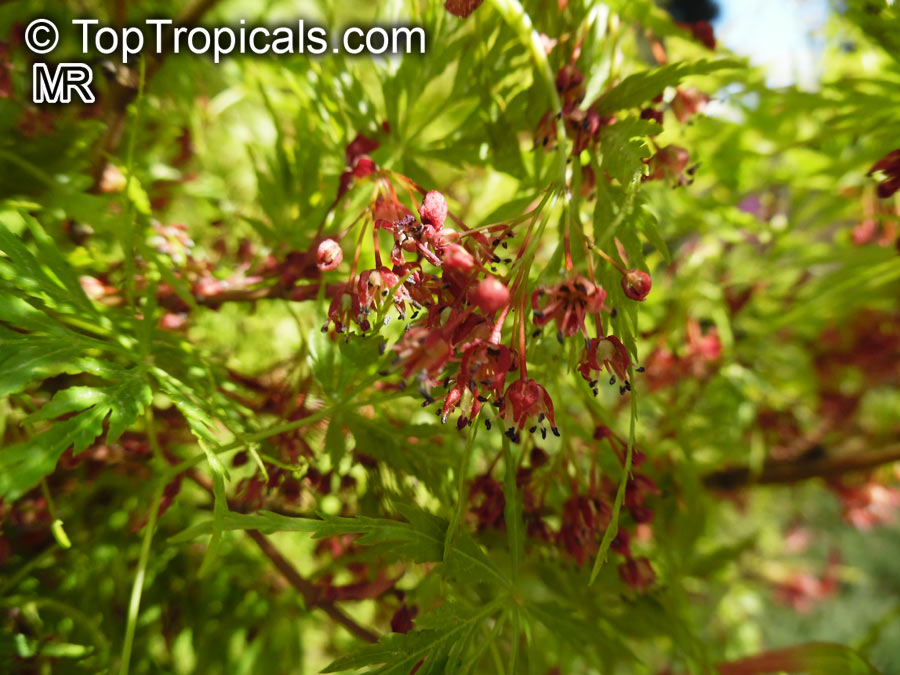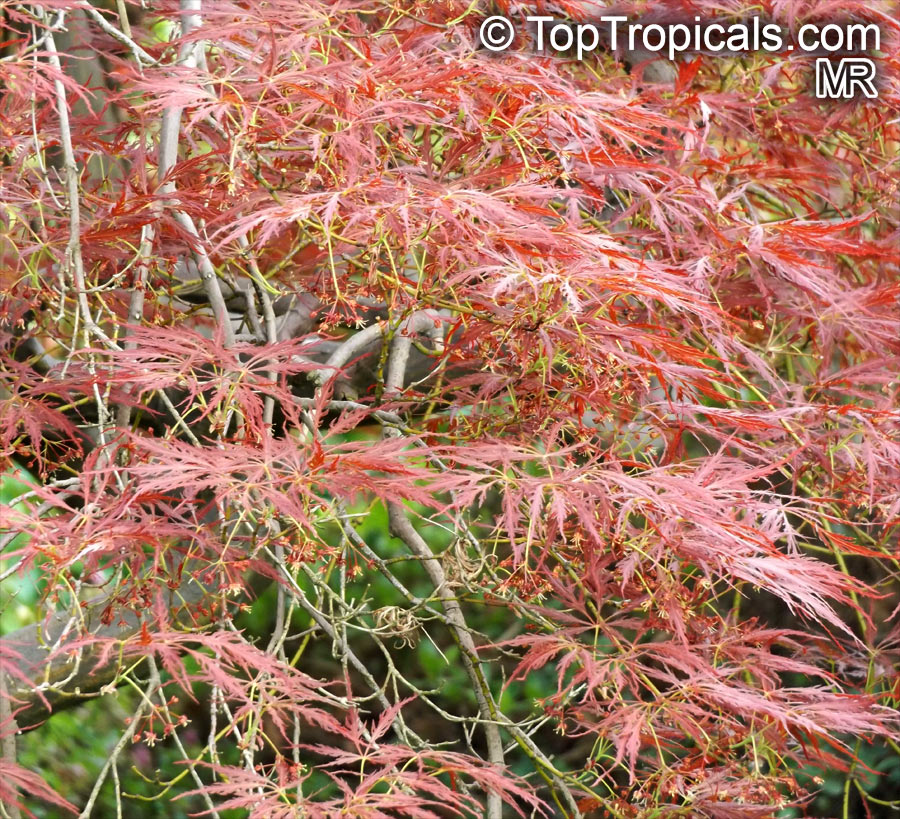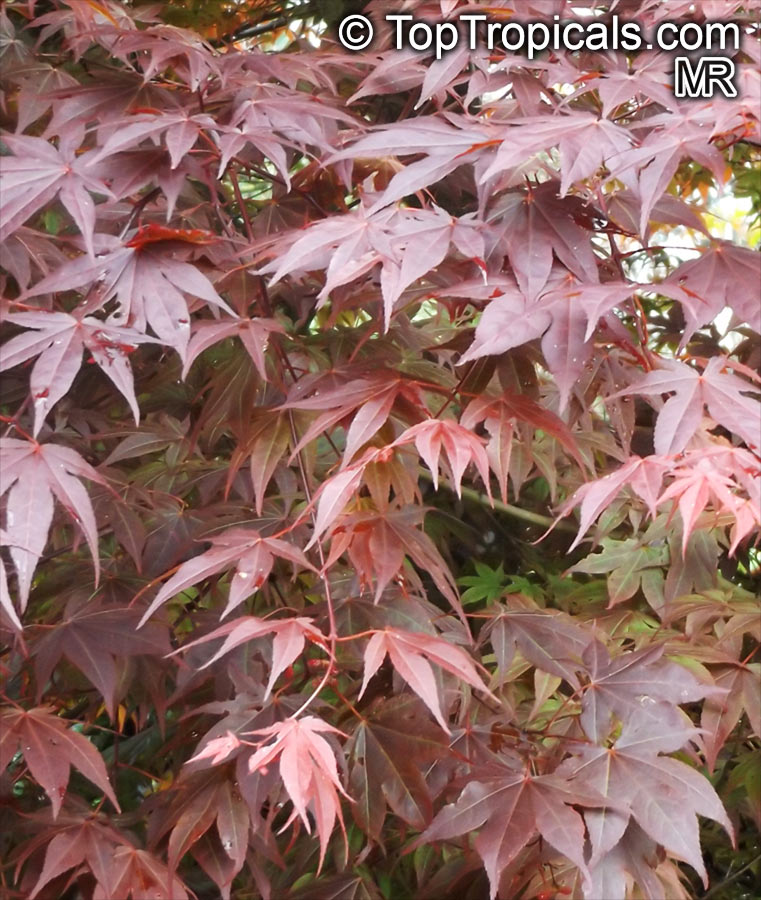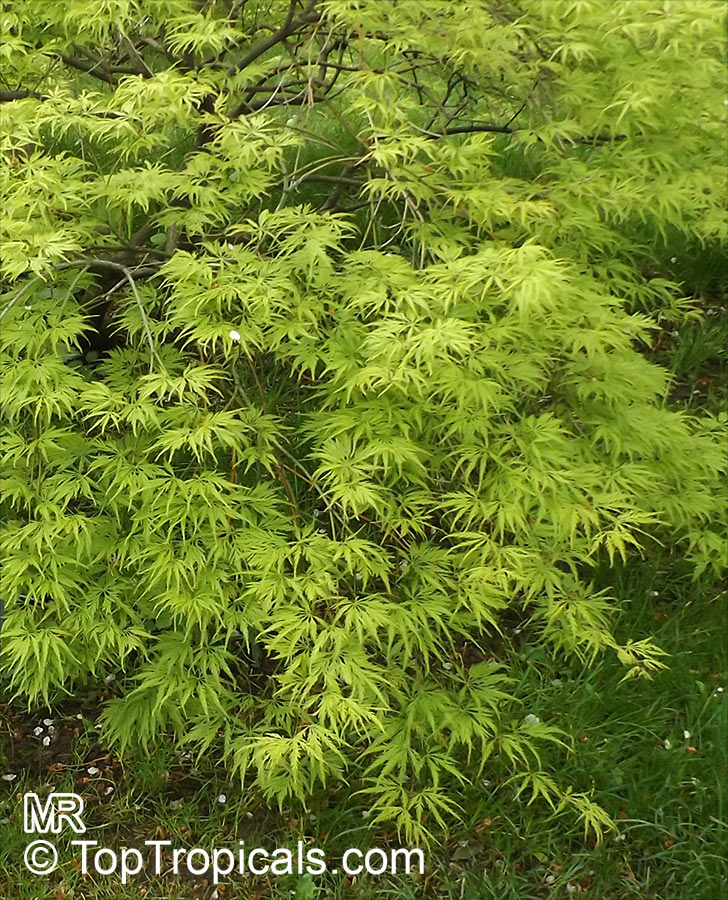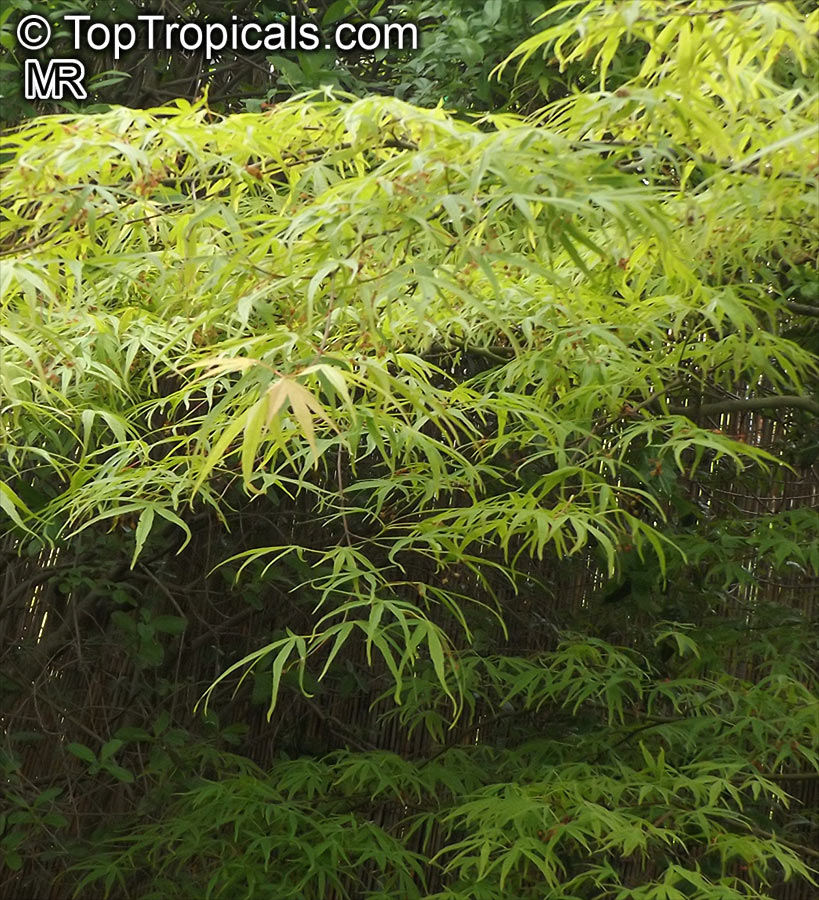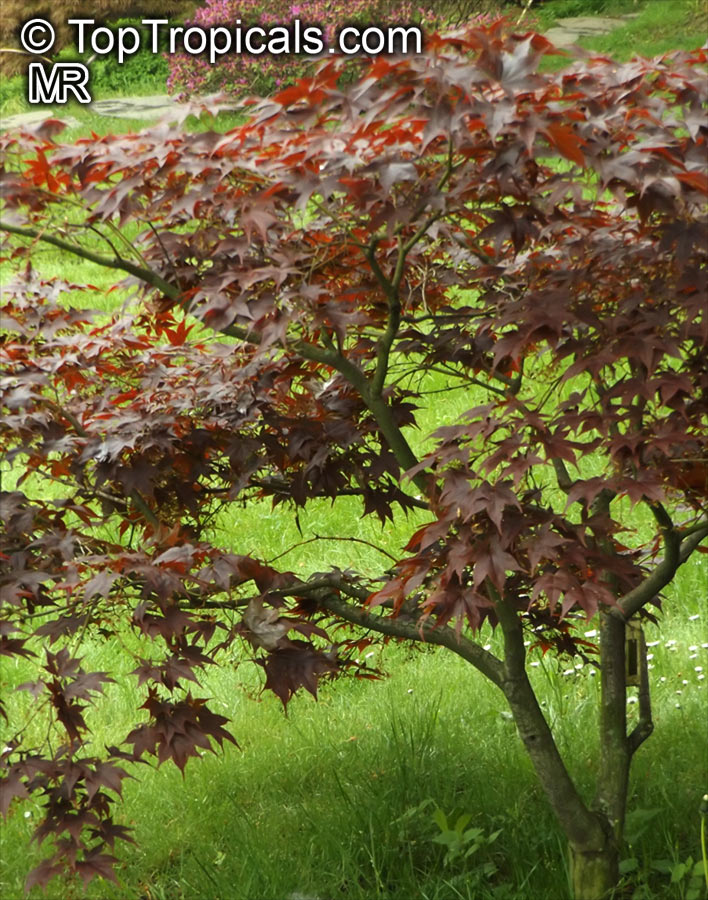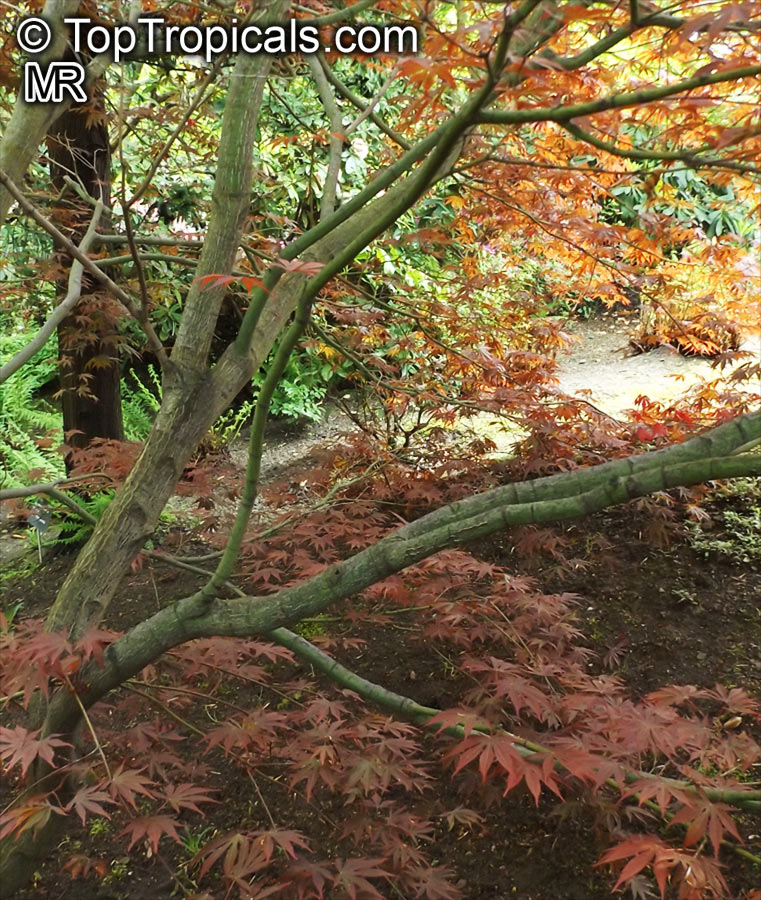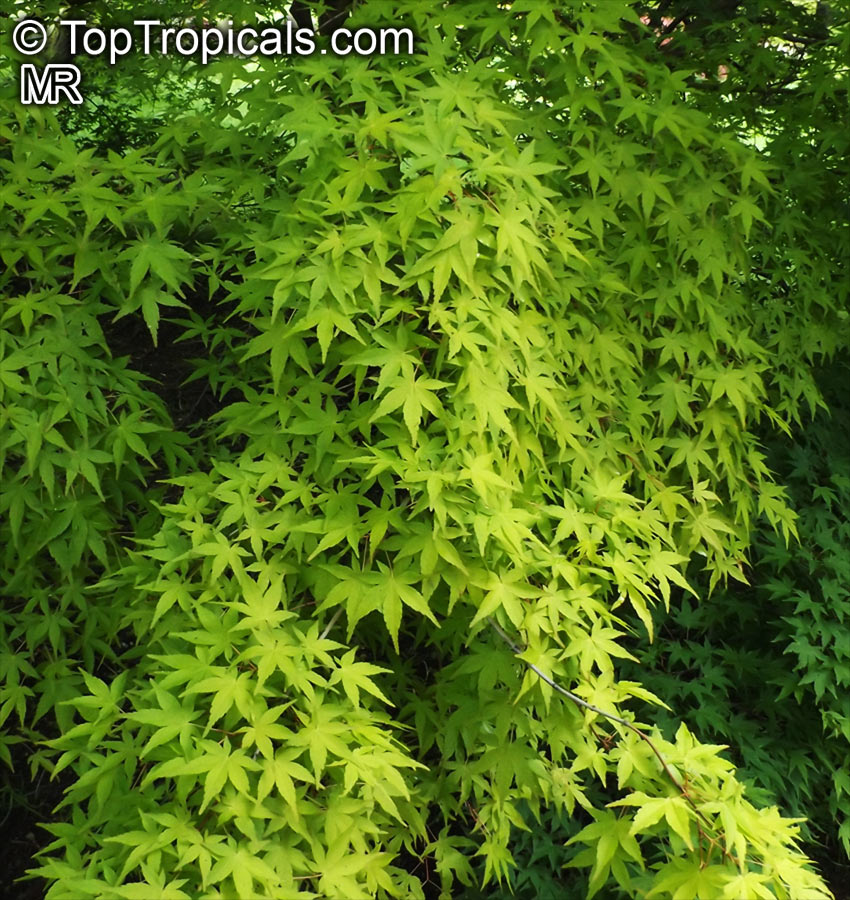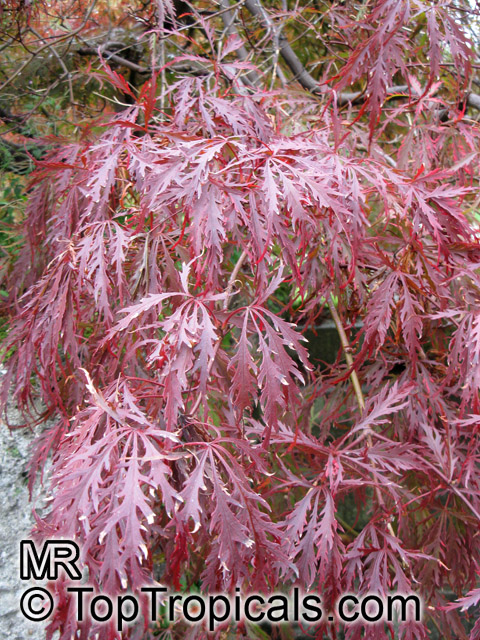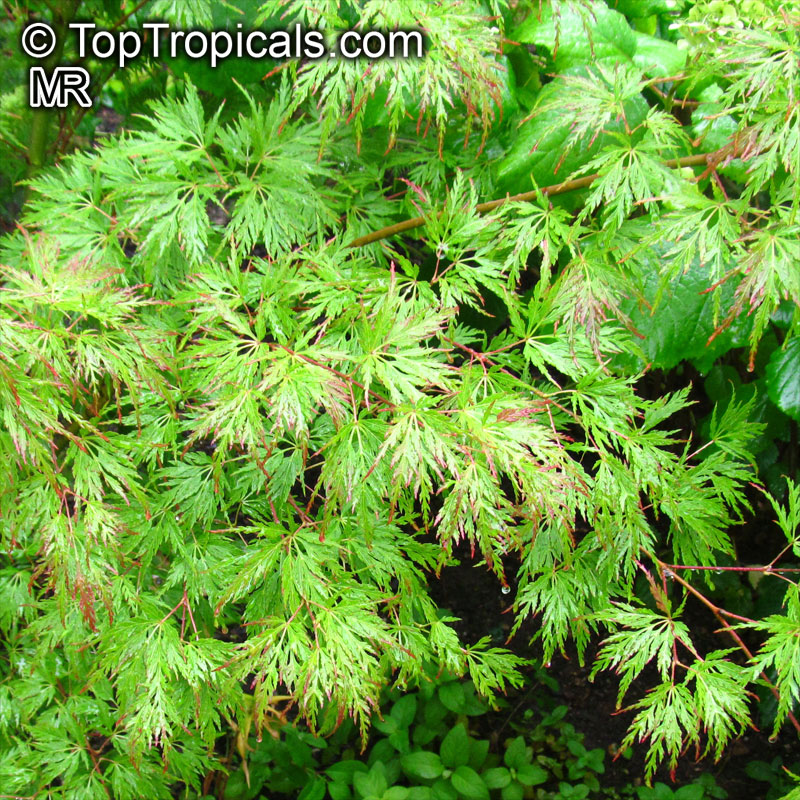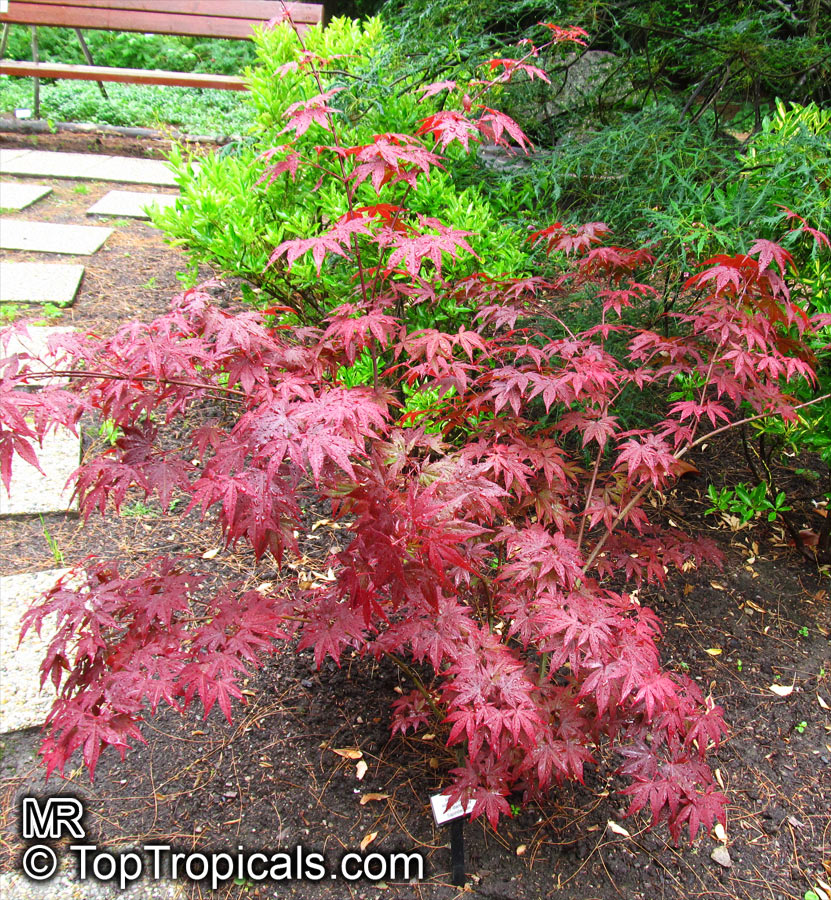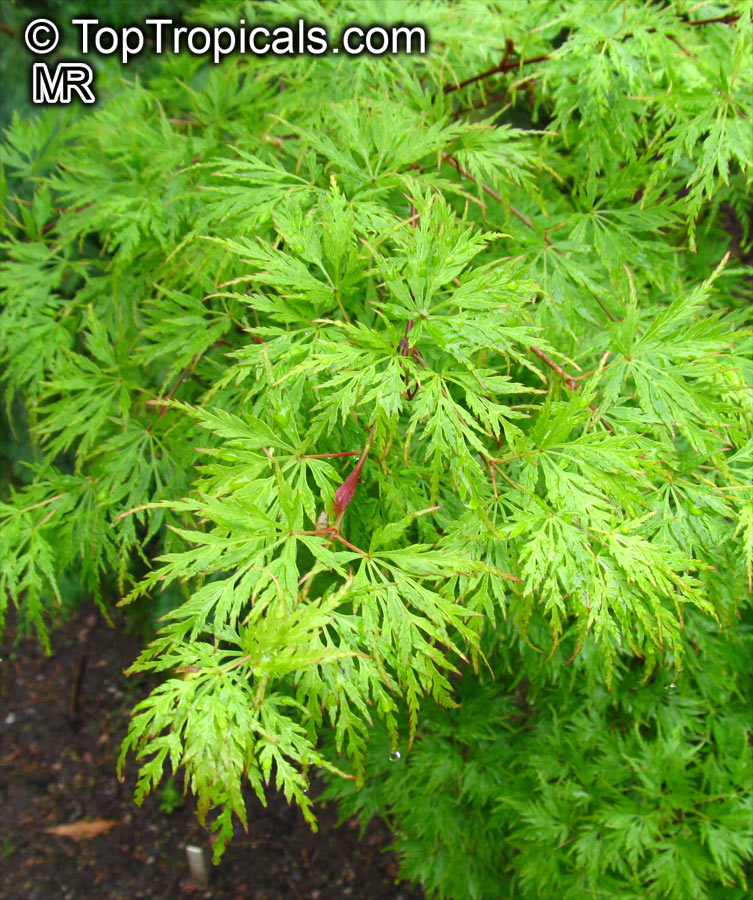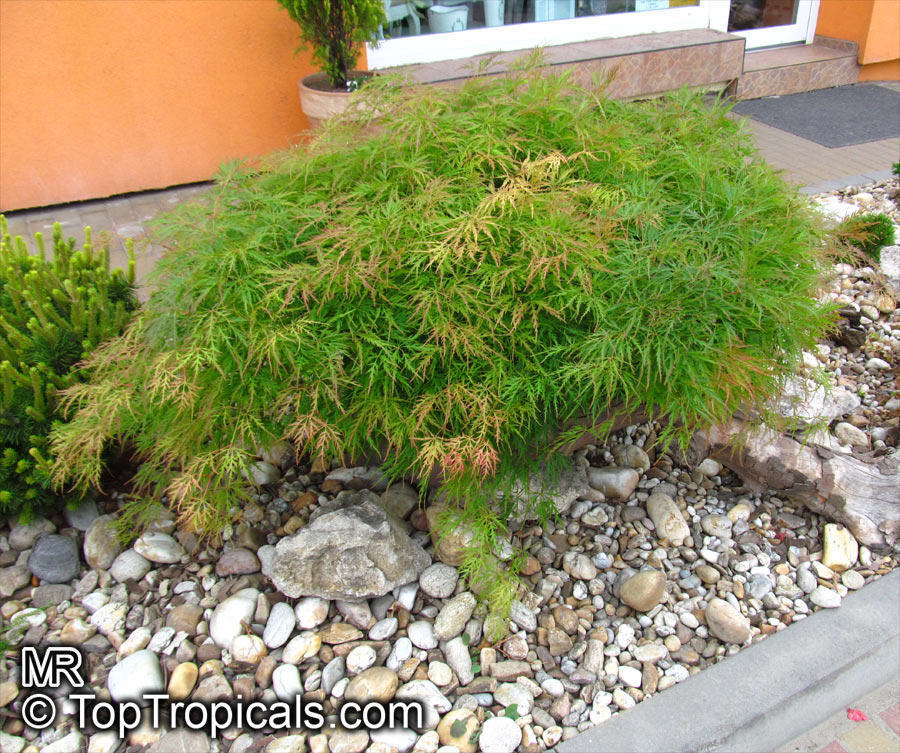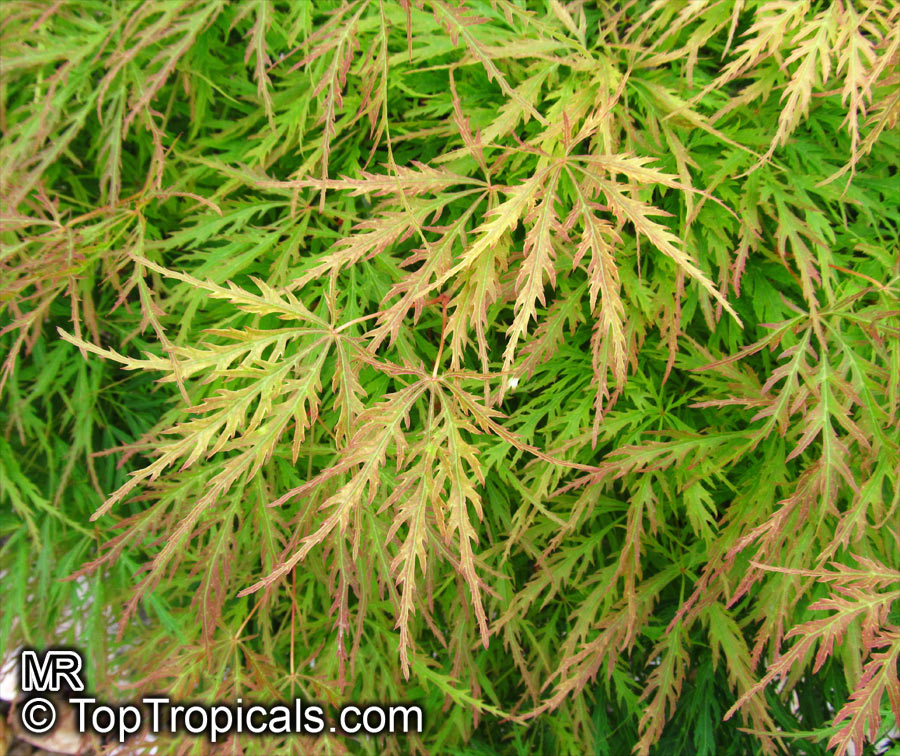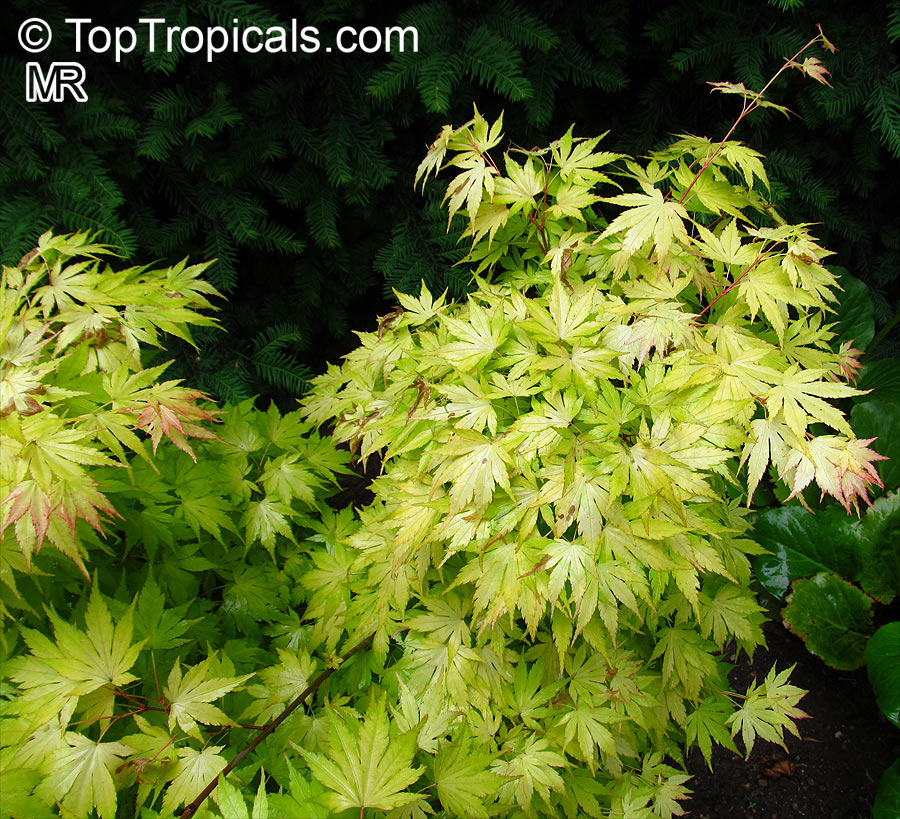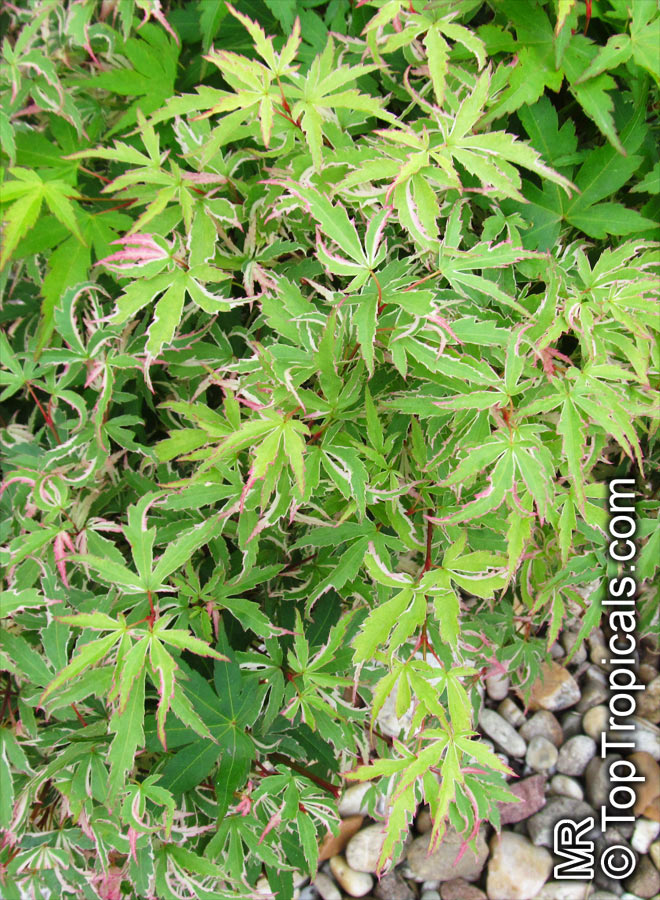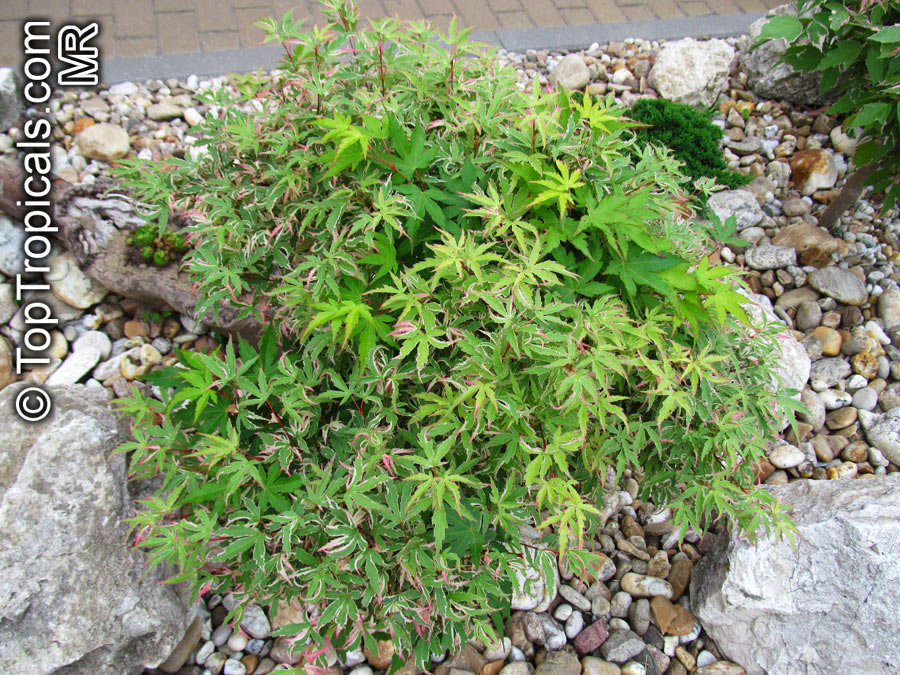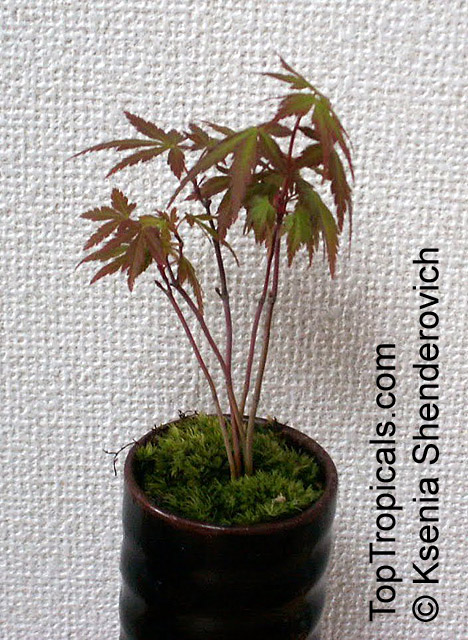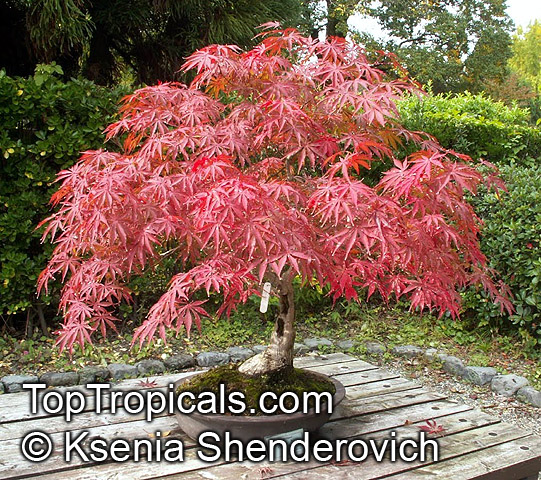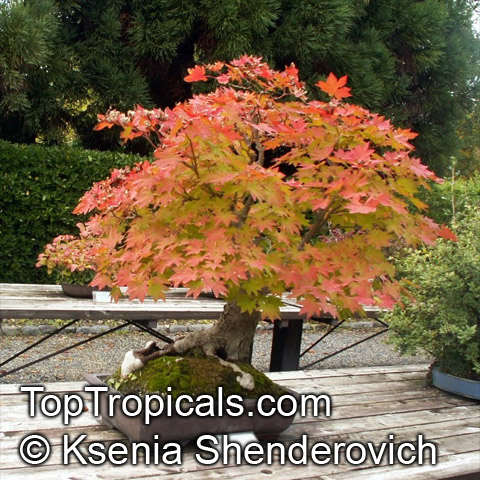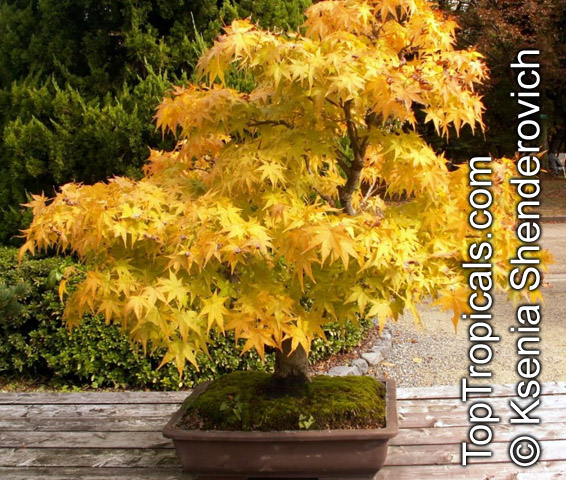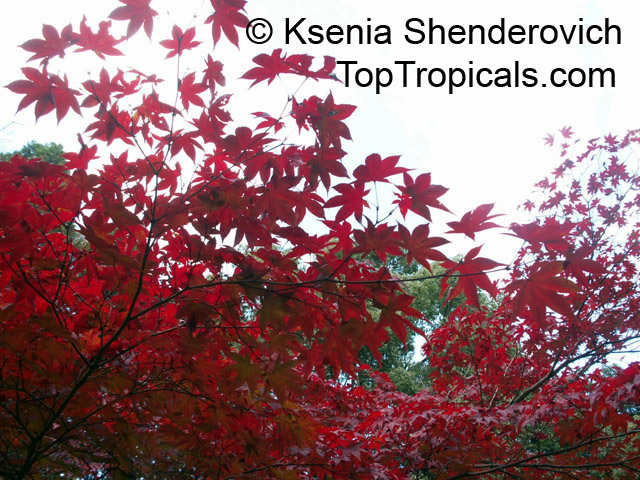Ornamental foliage - Plant Encyclopedia Results
Top Tropicals Plant Encyclopedia
| Number of plants found: 916 | Next | 
|
Go to page: | 1 | 2 | 3 | 4 | 5 | Last |
Botanical name: Acacia baileyana
Common name: Purple Fernleaf Acacia
Cultivar: Purpurea
Family: Fabaceae
Subfamily: Mimosoideae







Acacia baileyana 'Purpurea' (Purple Fernleaf Acacia) is a small, drought tolerant tree that can reach 10-20 feet in height in the right conditions. It thrives in full sun, and requires moderate water, which decreases once established. It has ornamental foliage, and produces beautiful yellow, orange flowers. These fragrant blooms attract butterflies and hummingbirds to your garden. It grows best in USDA hardiness zones 9-11.
When planting Acacia baileyana 'Purpurea', dig a hole that is twice as wide as the root ball and around the same depth. This will ensure the roots have plenty of space to spread out. Once planted, water deeply to help the roots establish.
For cold regions, it is best to plant Acacia baileyana 'Purpurea' in a pot and move it indoors in cold winter months. Make sure the pot is well drained and replant every few years for optimal growth. Feeding with a fertilizer in the spring and summer will help promote growth. If you see any signs of disease or pests, treat them as early as possible with an appropriate product.
Botanical name: Acacia glaucoptera
Common names: Clay Wattle, Queen Wattle
Family: Fabaceae
Subfamily: Mimosoideae
Origin: Western Australia
Hardiness: 25 F








A native to Western Australia, Acacia glaucoptera (Clay Wattle) is a small plant, natively growing up to 2-5ft tall. It is an ornamental shrub, featuring an eye-catching foliage that is light to medium green, with a glaucaous-white and a distinctive broad-winged phyllodes. The yellow to orange-colored and globular-shaped flowers are the biggest highlight of this plant, appearing from central stems in spring.
Acacia glaucoptera can be grown in full sun, semi-shade, and higher temperate regions. It can be grown in USDA Zone 9-11. It is a highly drought-tolerant shrub that does well in dry conditions. It also does well in a container and attracts numerous butterflies and hummingbirds. Moderate watering is recommended for the shrub, with regular pruning, which will help promote a compact and bushy growth.
In colder regions, Acacia glaucoptera is an ideal plant for growing in a pot as they need protection from extreme cold and frost conditions. When growing in a pot, find a suitable location where the plant will get enough sunlight and water. Pay attention to the pot size; a large pot is necessary for growth. Water the plant when required, keeping the soil moist. In winter, water the plant less frequently but never let the soil dry out completely. Apply a balanced fertilizer every month to provide the necessary nutrients.
Botanical name: Acacia nematophylla
Common name: Acacia
Family: Fabaceae
Subfamily: Mimosoideae
Origin: Australia







Botanical name: Acalypha godseffiana
Common names: Copper Leaf, Beefsteak Plant, Fire dragon, Jacobs coat, Match-me-if-you-can, Three-seeded Mercury
Family: Euphorbiaceae
Origin: Fiji







Acalypha godseffiana, also known as Copperleaf or Joseph's Coat, is a tropical shrub that is native to the East Indies and the Pacific. It is prized for its colorful and striking foliage, which ranges in shade from red and yellow to orange, bronze, copper, green, and white in full sunlight, and is mostly variegated green in the shade. The more sun it receives, the brighter the foliage will appear.
Acalypha godseffiana is a fast-growing plant that is often used as an informal hedge or massed bedding plant by tropical gardeners. It prefers full sun and well-drained soil and should be carefully pruned to prevent it from becoming leggy. When established, it is drought-tolerant and can thrive in USDA zones 9-11 in its natural habitat.
There are a number of cultivars of Acalypha godseffiana available, which come in a variety of colors such as green and white, green and yellow, red, bronze, copper, or brown. The leaves also vary in form, with some being flat and others undulating. The flowers of this plant are inconspicuous.
Acalypha godseffiana is a popular choice for tropical gardens due to its attractive foliage and easy care requirements. Just be sure to provide it with full sun and well-drained soil, and remember to prune it regularly to maintain its shape and size.
Recommended Fertilizer: SUNSHINE Robusta - Rapid Growth Booster
Botanical name: Acalypha godseffiana
Common names: Copper Leaf, Beefsteak Plant, Fire Dragon, Jacobs Coat
Cultivar: Heterophylla
Family: Euphorbiaceae
Origin: Fiji






A very colorful tropical shrub grown for its attractive reddish leaves. Beautiful foliage of mixed shades of red, yellow and green. Leaves, much smaller than ordinary copper leafs, they are orange/red in the full sun and mostly variegated/green in the shade. The more sun the more colorful the leaves will get. Fast growing, a native of the East Indies and the Pacific, this is one of the most striking foliage shrubs and is widely used by tropical gardeners. The leaves also vary in form, some being flat and others undulating, while the flowers are inconspicuous. In a garden, where they are often used as informal hedges or in massed beds, all Acalypha species require full sun, well-drained soil, and careful pruning to prevent them from becoming leggy. They are easily propagated by cuttings.
Botanical name: Acalypha sp.
Common name: Flame Copper leaf
Cultivar: Inferno
Family: Euphorbiaceae
Origin: South Pacific Islands





New hybrid of Copper Leaf with bright red-orange-yellow leaves. This shrub provides year-round color in your landscaping in full sun location. The more sun, the brighter the color. In shade leaves may turn pale and green.
Botanical name: Acalypha wilkesiana
Common names: Fire Dragon Acalypha, Hoja de Cobre, Copper Leaf
Family: Euphorbiaceae
Origin: Fiji






Acalypha wilkesiana (Fire Dragon Acalypha) is a large shrub, typically growing 5-10 ft tall. It produces beautiful ornamental foliage and is a great choice for tropical gardens and seaside areas thanks to its salt tolerance. The plant needs to be grown in full sun or semi-shade and will require moderate amounts of water. It is mostly grown in USDA Zones 9-11 and can be grown in cooler regions as a pot plant if provided with extra protection against cold temperatures.
When it comes to growing and caring for A. wilkesiana, the most important thing to remember is to prune it regularly. Pruning should be done at least once every six months and should involve removing any damaged or dead leaves and stems. Additionally, the plant should be provided with regular fertilization, as this will help keep it healthy and promote better growth. If growing in a pot in a cold region, it is essential to use a container that is big enough, otherwise the plant's root system won't have enough room to grow and the plant won't thrive. Furthermore, the pot should be kept moist throughout the growing season and should be brought indoors during winter months to protect it from cold temperatures.
Recommended Fertilizer: SUNSHINE Robusta - Rapid Growth Booster
Botanical name: Acanthus sp.
Common names: Acanthus, Bear's Breeches, Mountain Thistle, Alligator Plant
Family: Acanthaceae
Origin: Mediterranean Basin, Asia










Acanthus sp., also known as Acanthus, Bear's Breeches, grows in full sun to partial shade and will thrive in most soils, provided they are well-drained. It is a thinly branched unusual perennial with interesting foliage, basal clusters of oblong to lance-shaped glossy, dark green leaves reaching up to 12 inches long. The leaves have silver marks and wavy margins. It produces showy pink flowers in the summer to fall.
The plant needs regular watering, but should not be over watered, as this can lead to root rot. It is a deciduous plant so it will lose its leaves during the winter months. It is a somewhat spiny, but attractive plant. For colder regions, it is recommended to grow Acanthus in a pot and move them indoors once it gets too cold to leave the plant outside. In these cases the plant should be placed in a south-facing window and watered regularly.
See picture of alligator skin.
Recommended Fertilizer: SUNSHINE Megaflor - Bloom Nutrition Booster
Last one
Botanical name: Acer japonicum
Common names: Amur maple, Downy Japanese maple, Fullmoon maple
Family: Sapindaceae
Origin: Japan









Acer japonicum is a small deciduous tree growing to 5-10 m (rarely 15 m) tall, with a trunk up to 40 cm in diameter. In cultivation, it is often only a shrubby tree with multiple trunks joining at ground-level. In autumn, the leaves turn bright orange to dark red.
Botanical name: Acer palmatum
Common names: Japanese maple, Palmate maple, Smooth Japanese maple
Family: Sapindaceae
Origin: Japan









Acer palmatum includes thousands of named cultivars with a variety of forms, colors, leaf types, sizes, and preferred growing conditions. Heights of mature specimens range from 0.5 to 25 m (1.5 to 82 ft), depending on type.
| Next |  |
Use link to repeat this search:
https://toptropicals.com/cgi-bin/garden_catalog/cat.cgi?search_op=and&keyword_op=and&language=e&number=10&no_change_lang=1
&v1=dec&user=tt&sale=1&first=0
